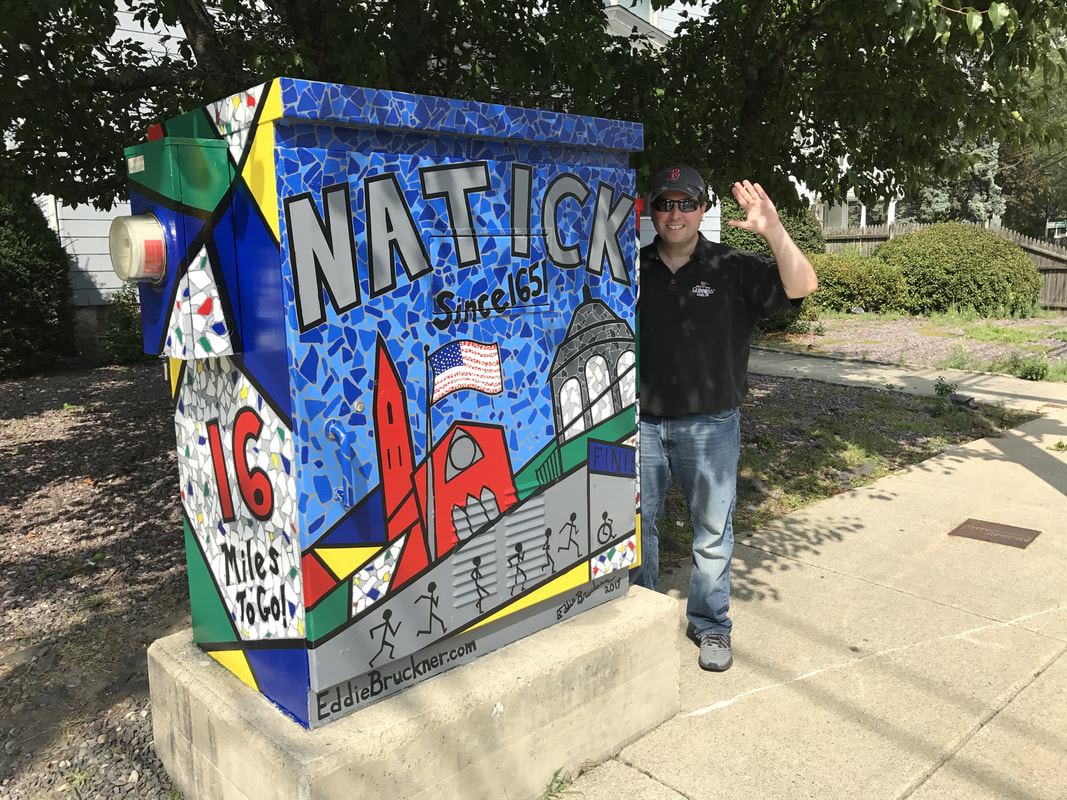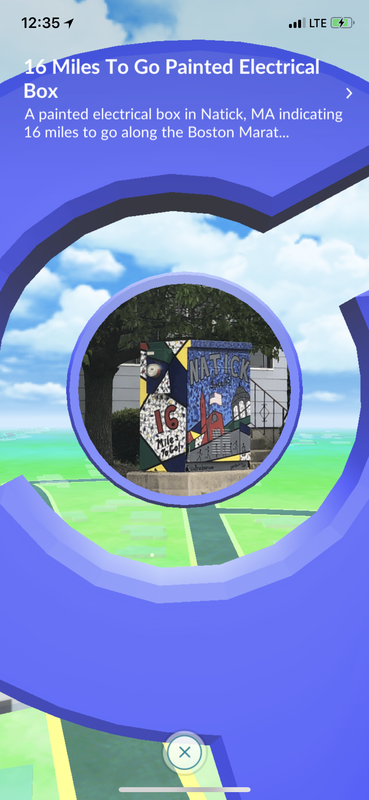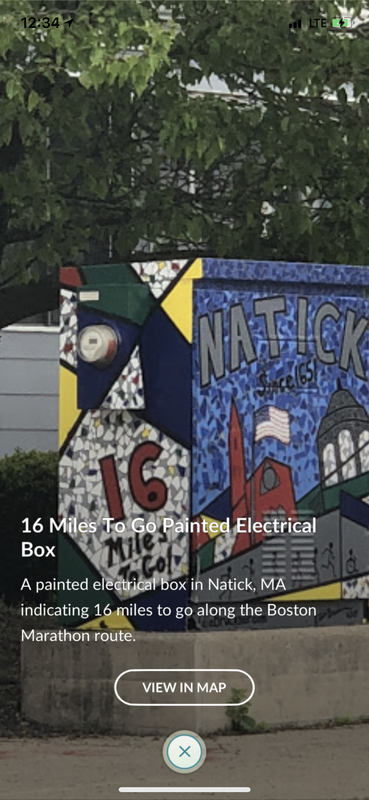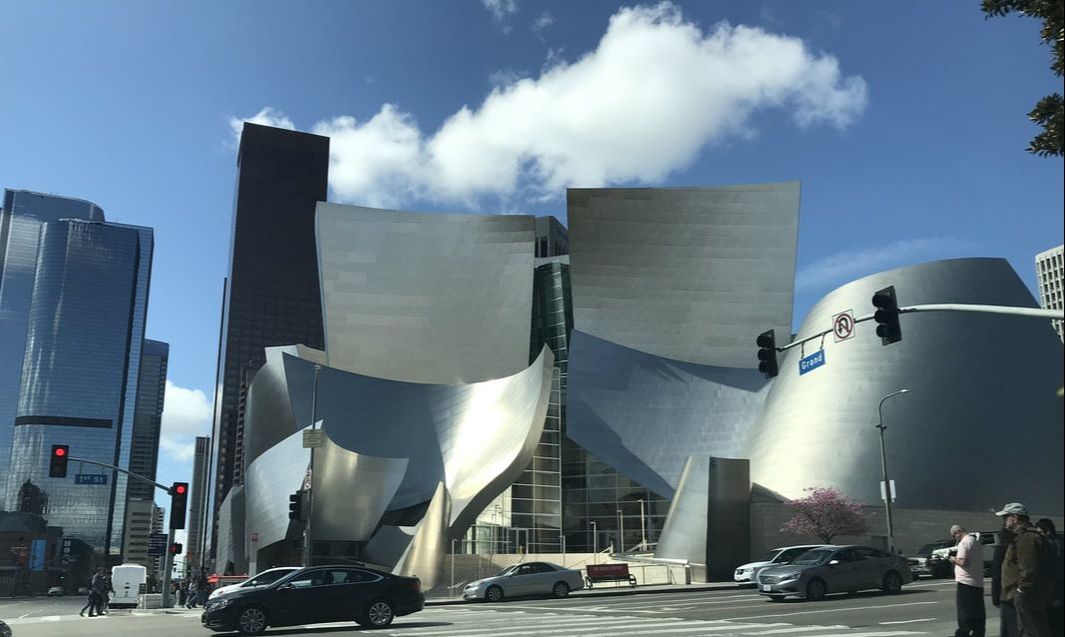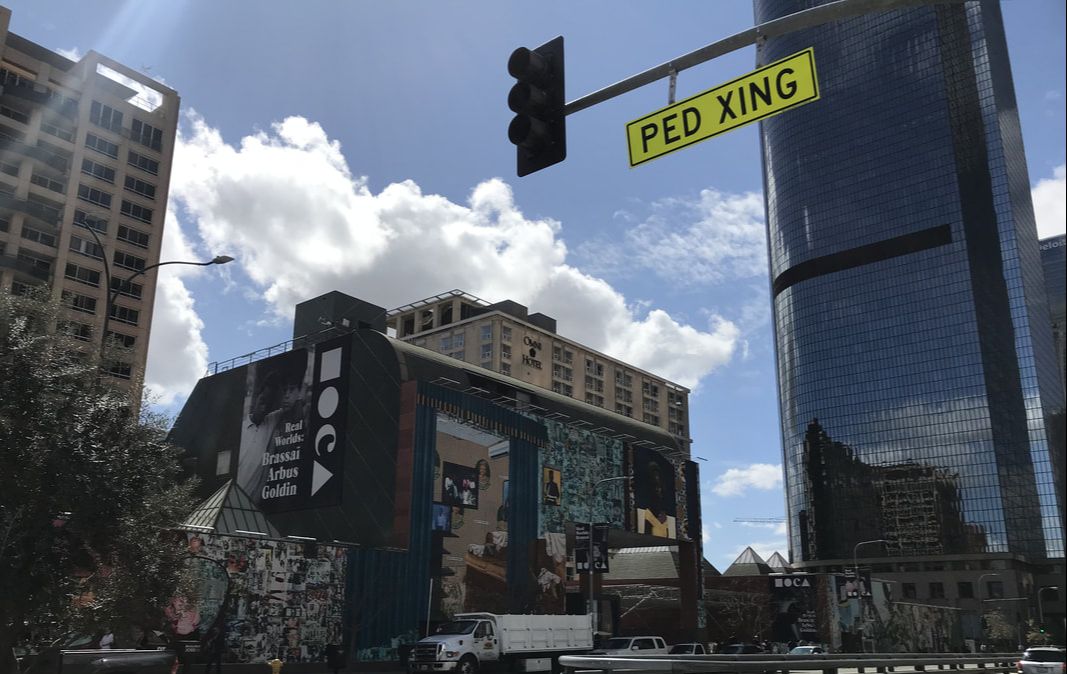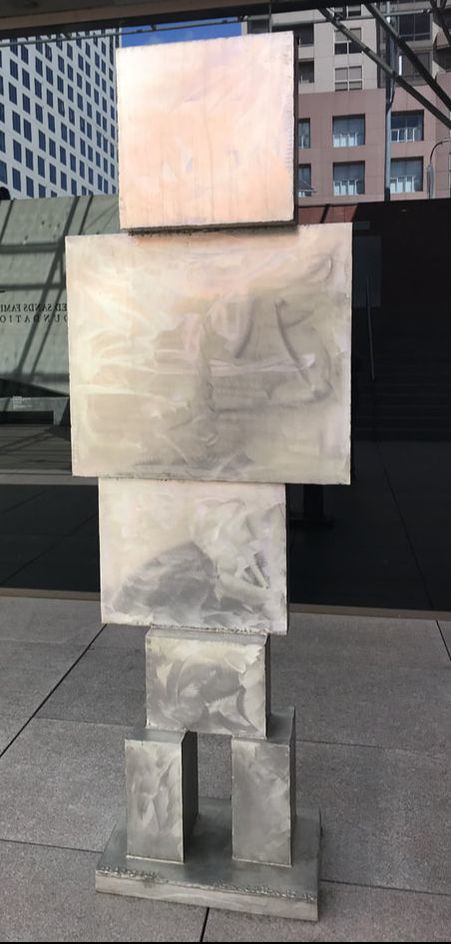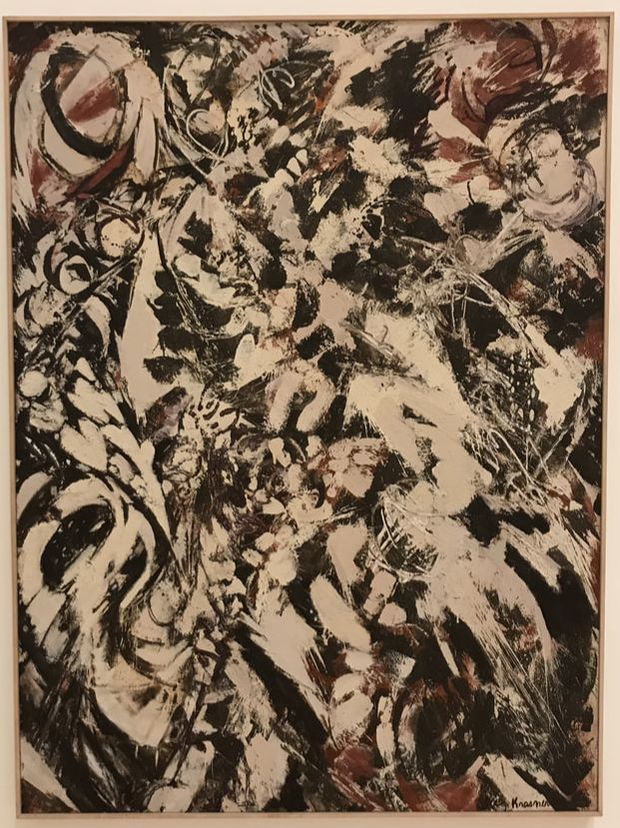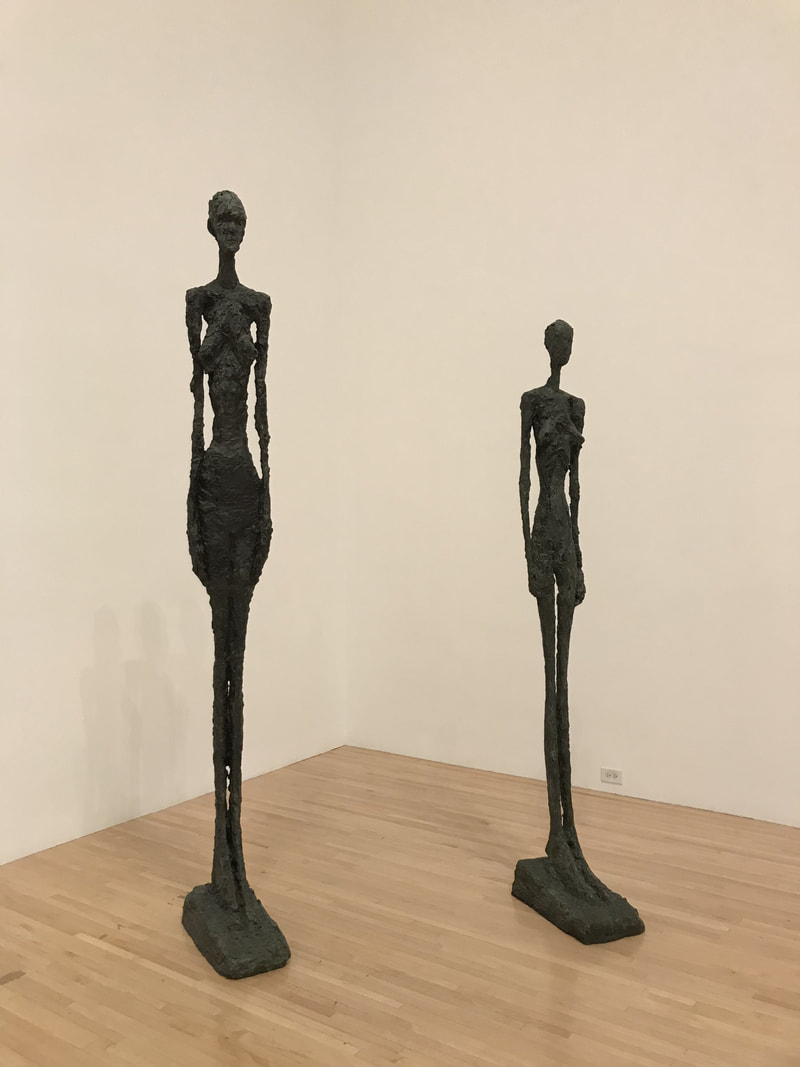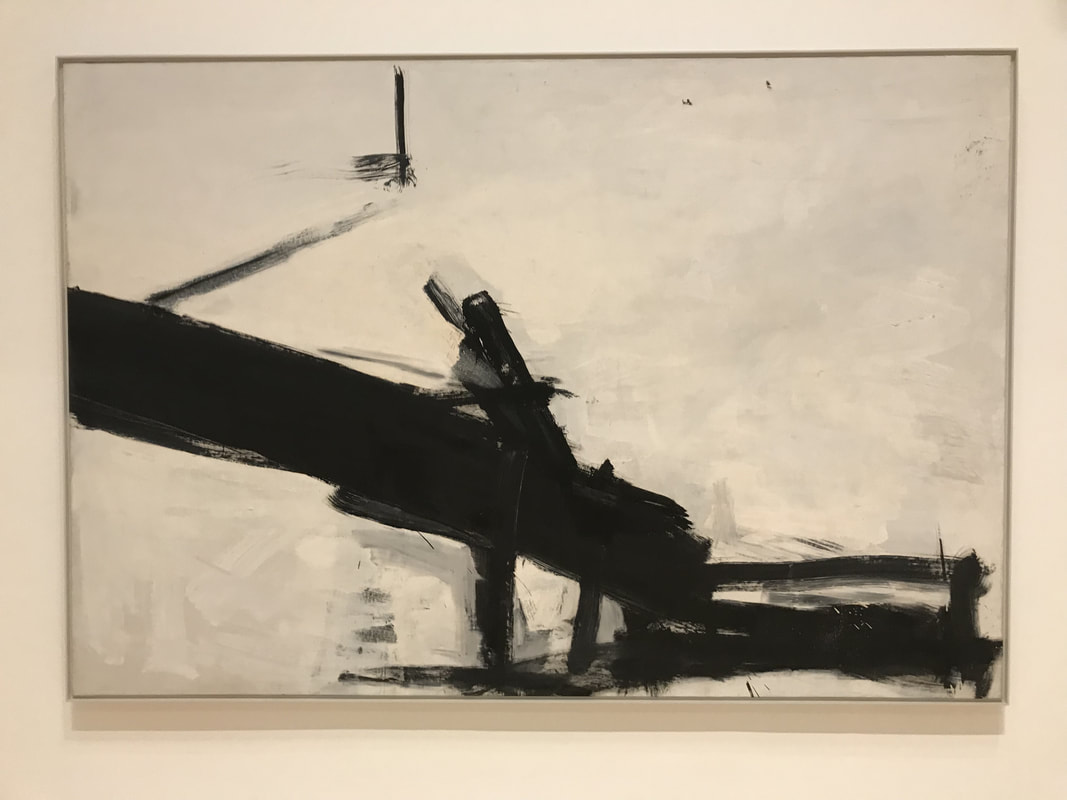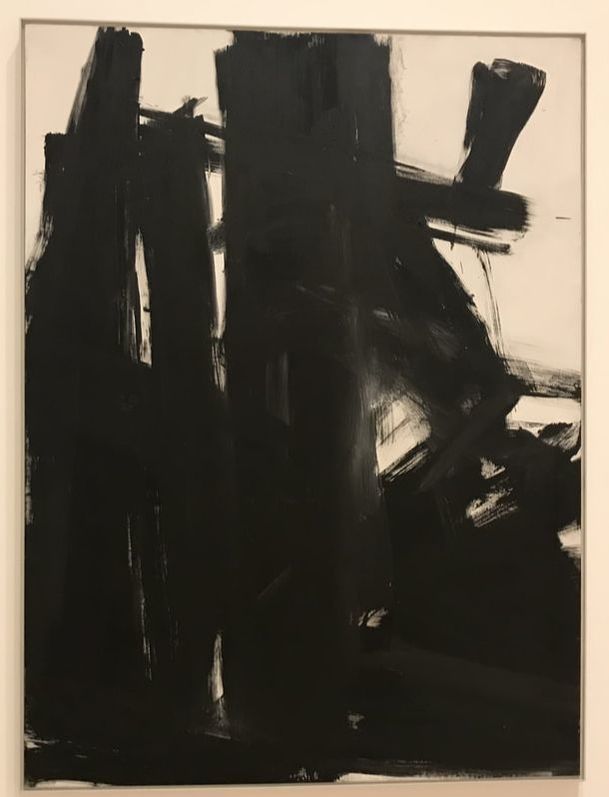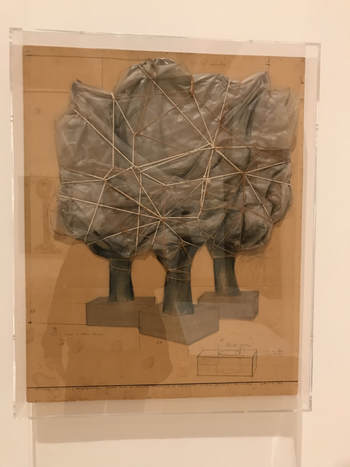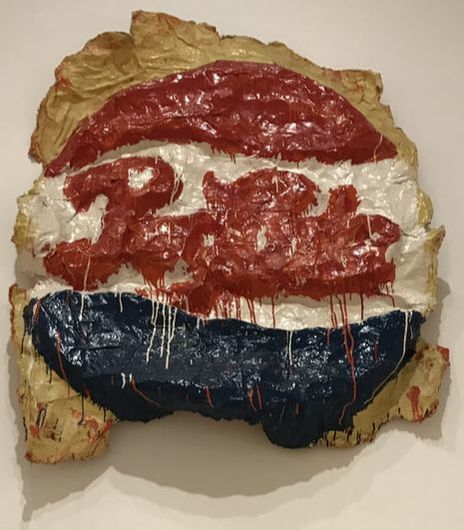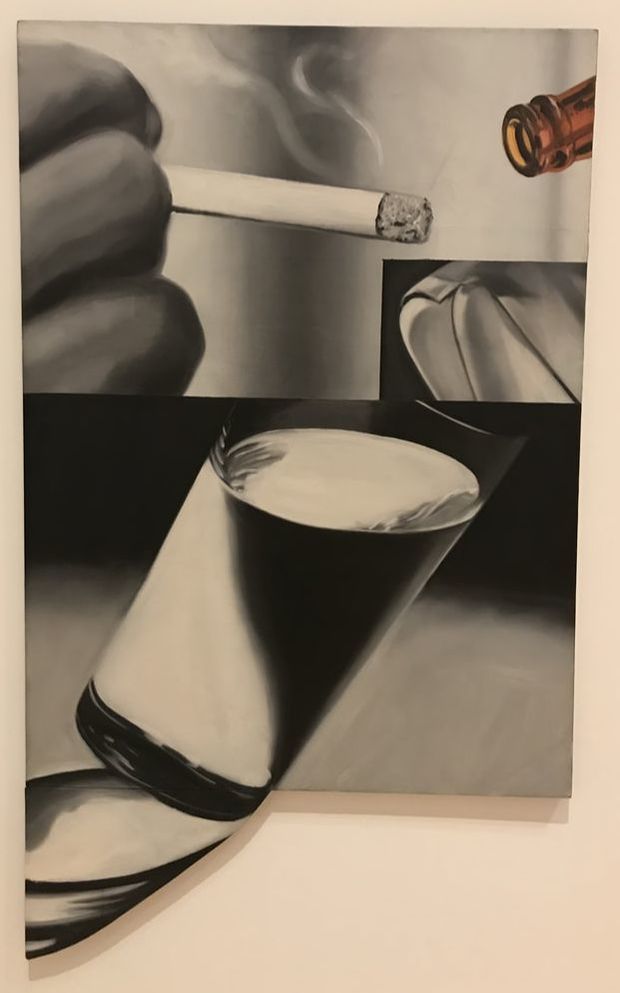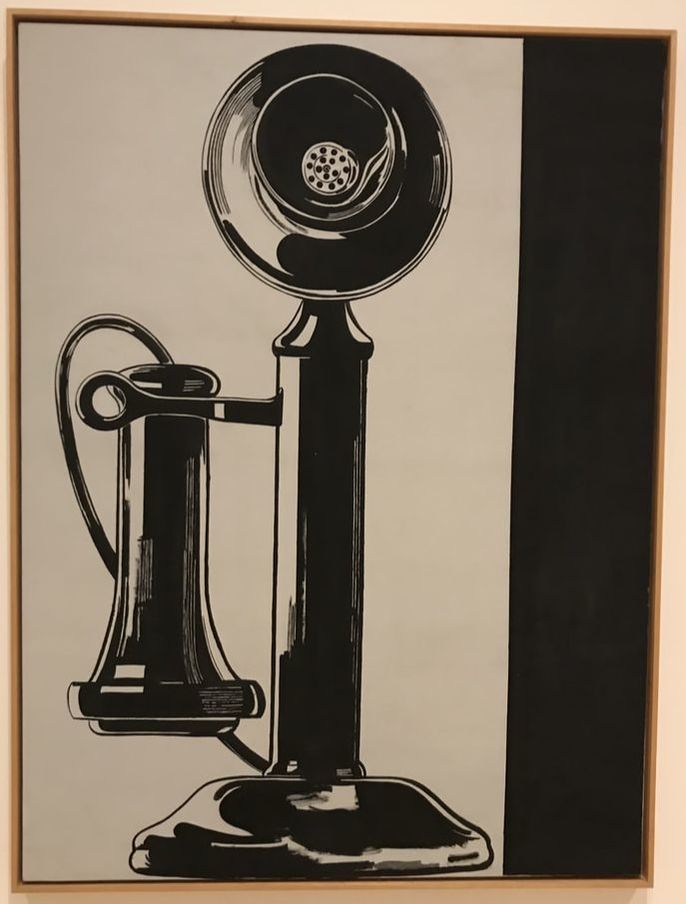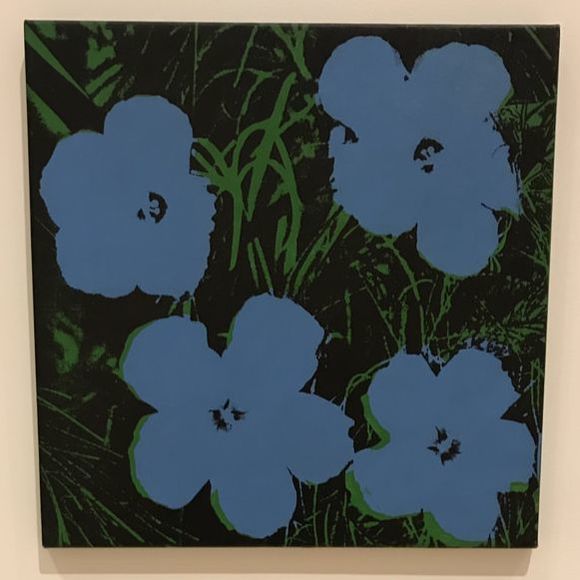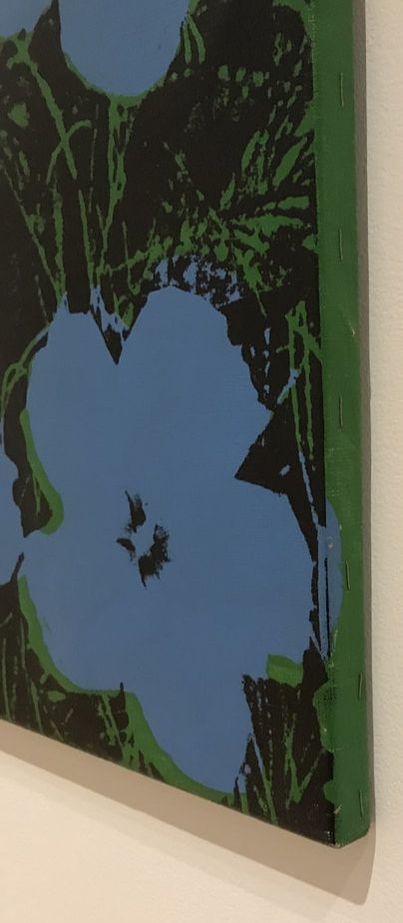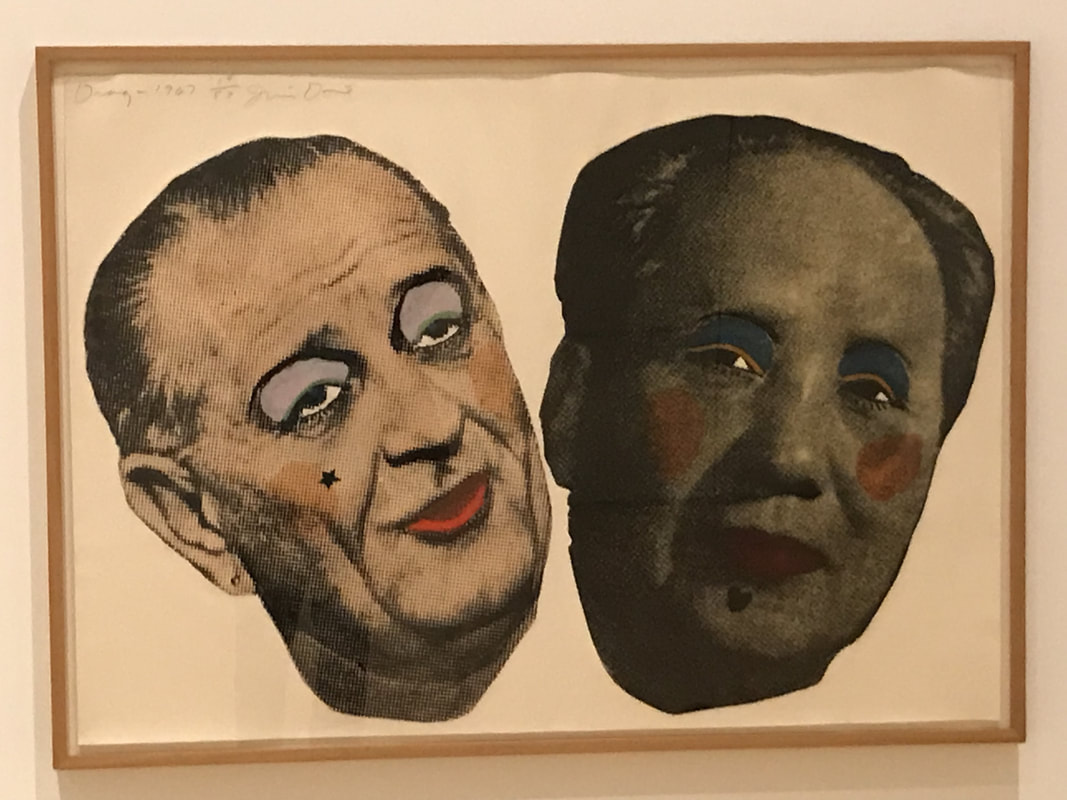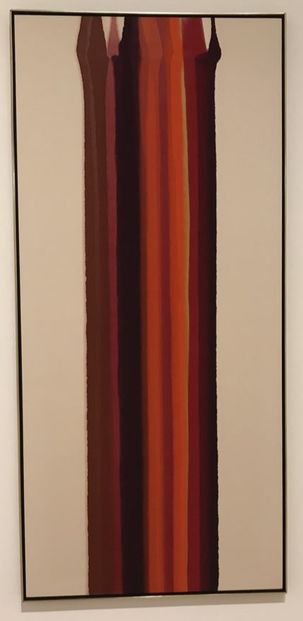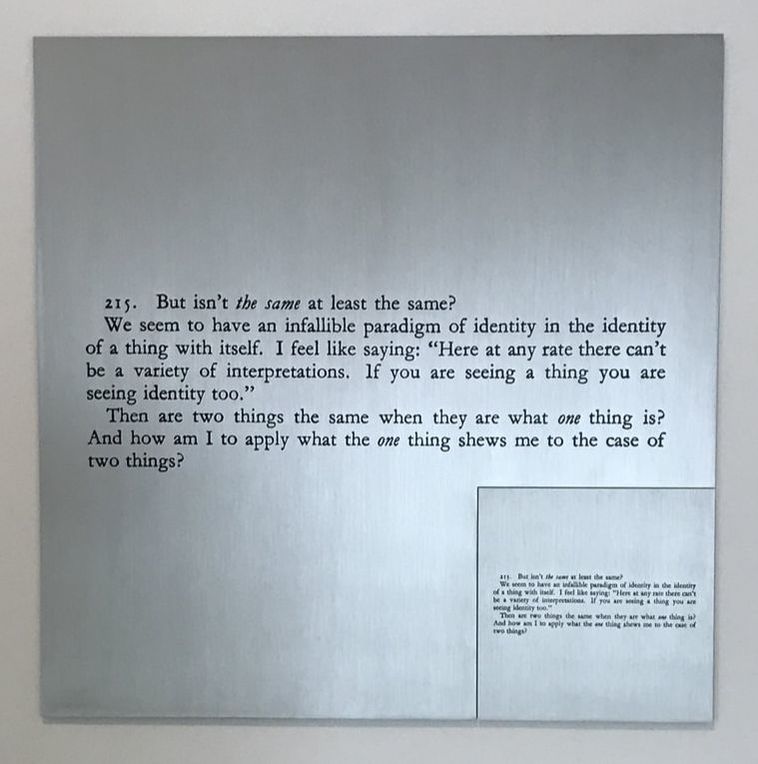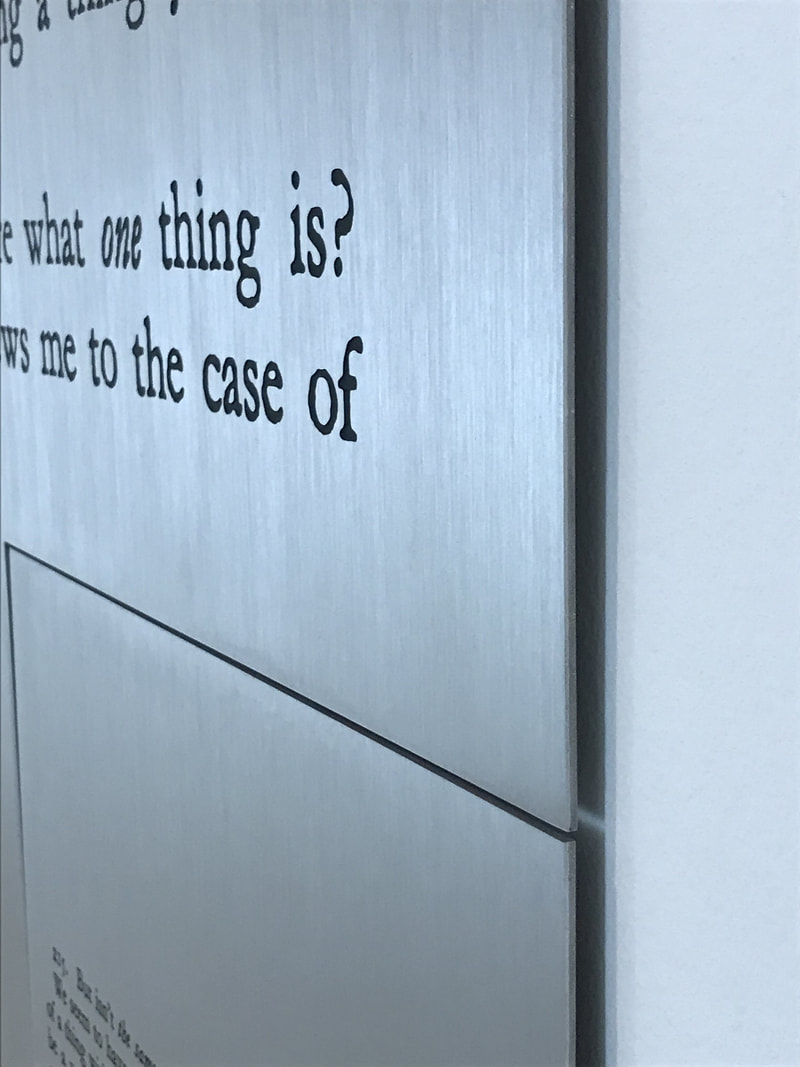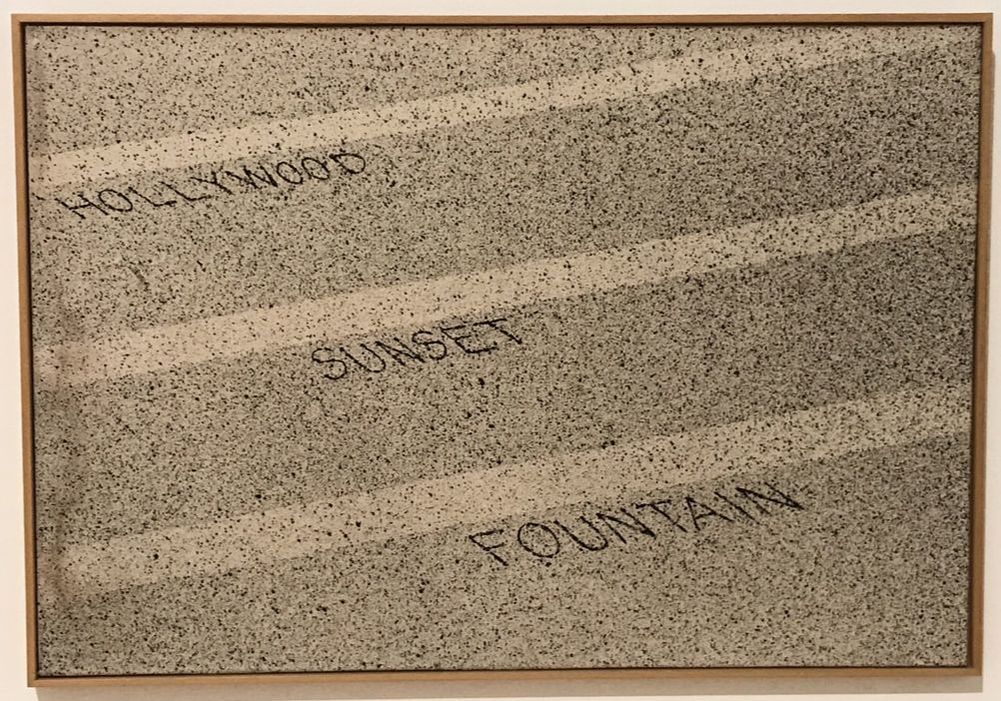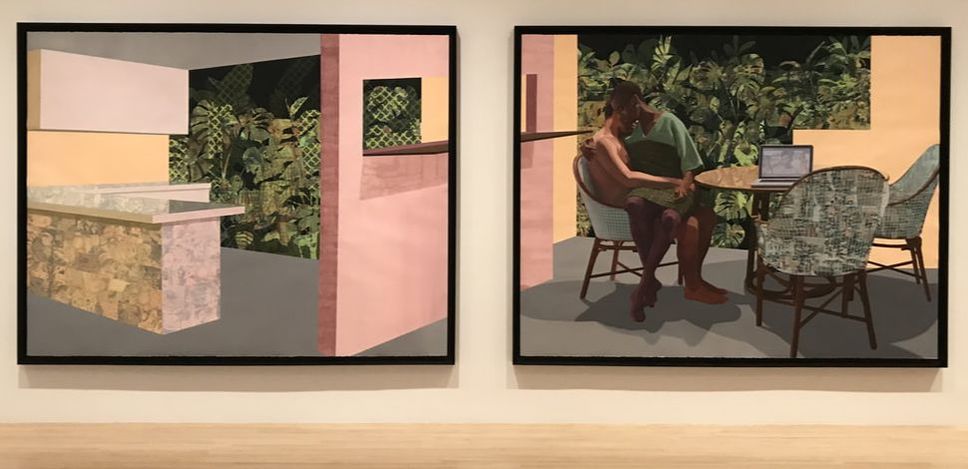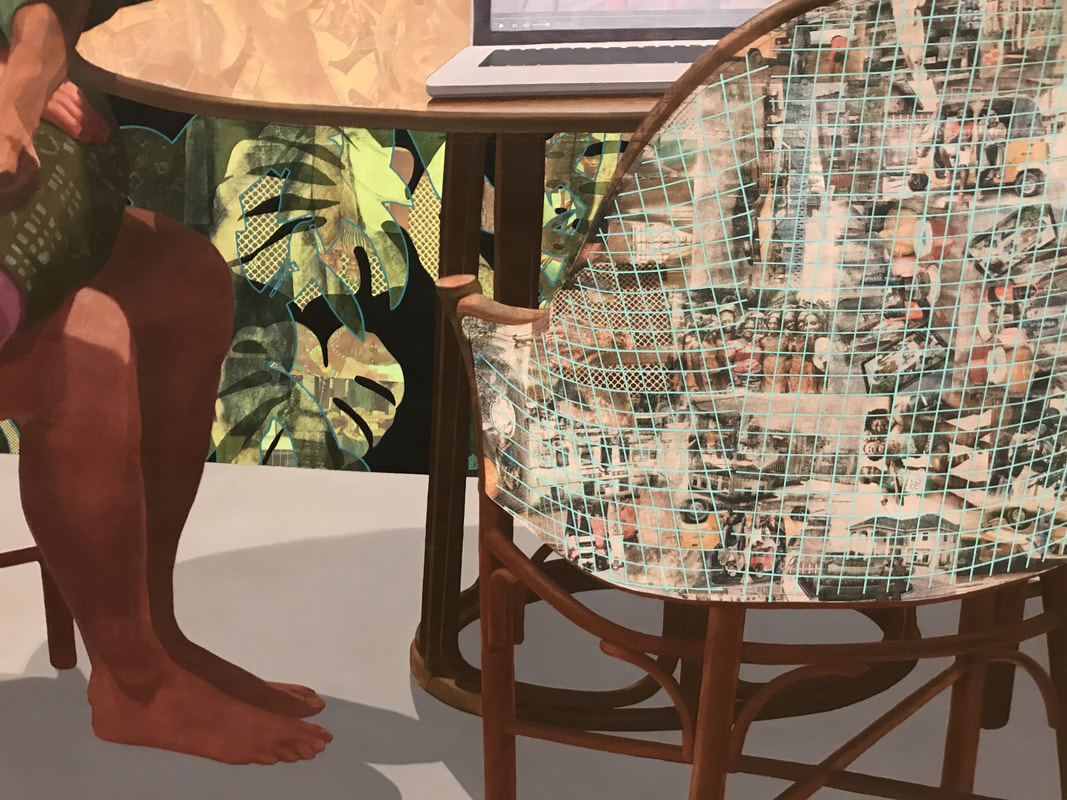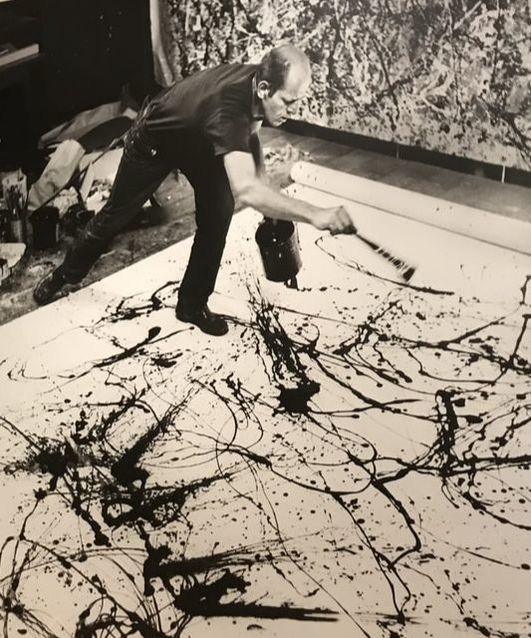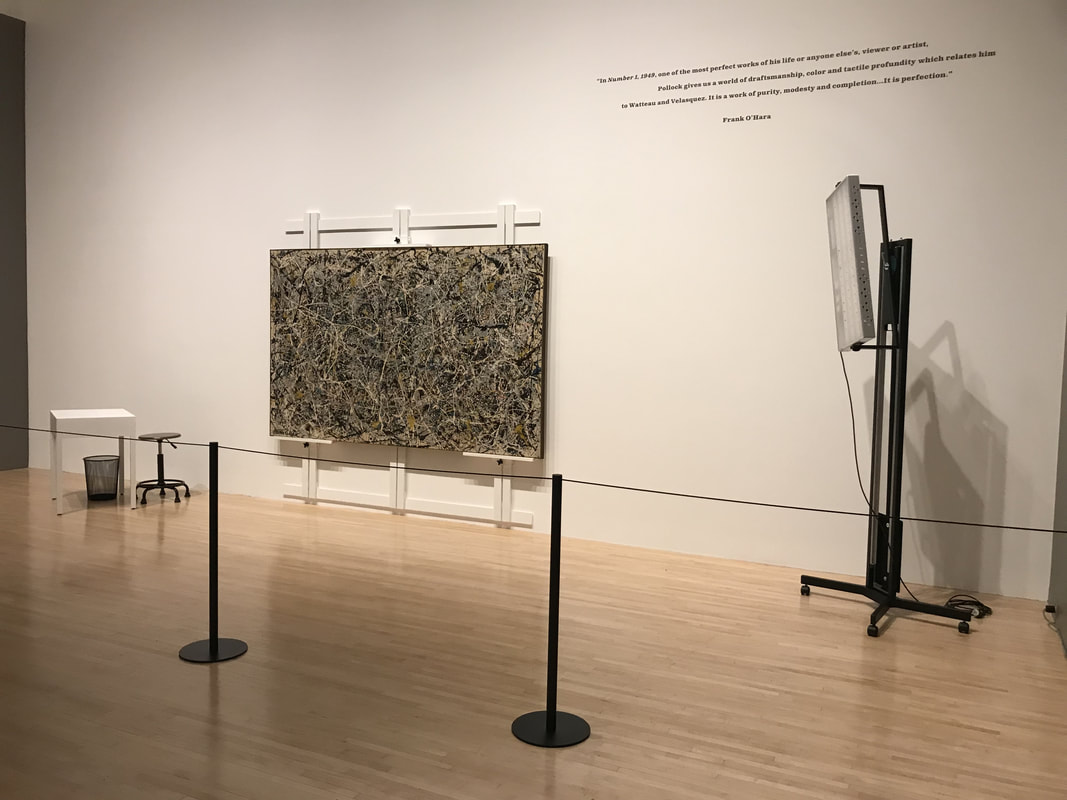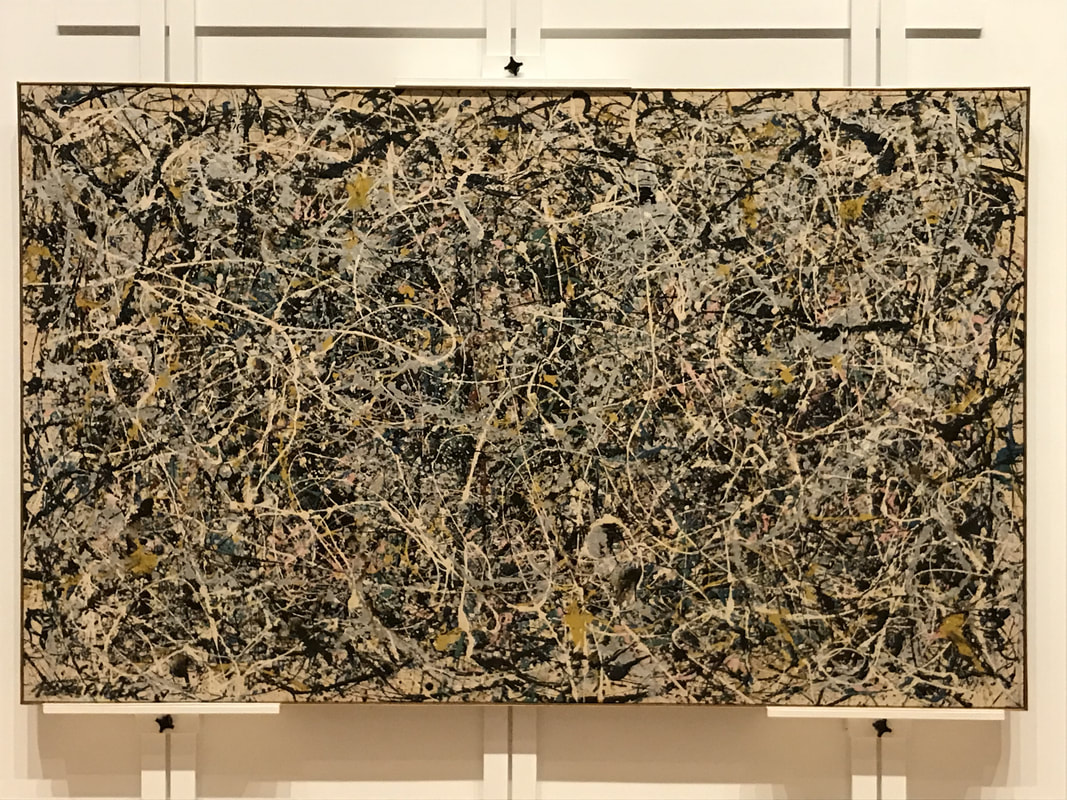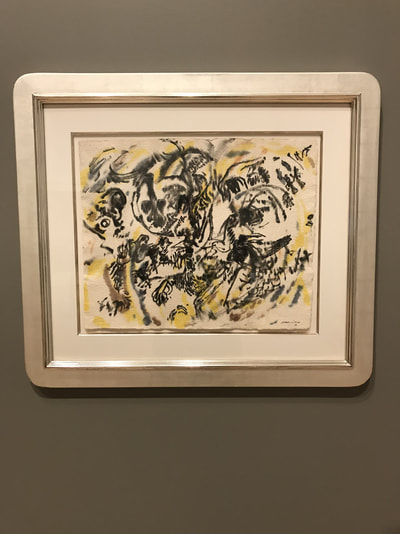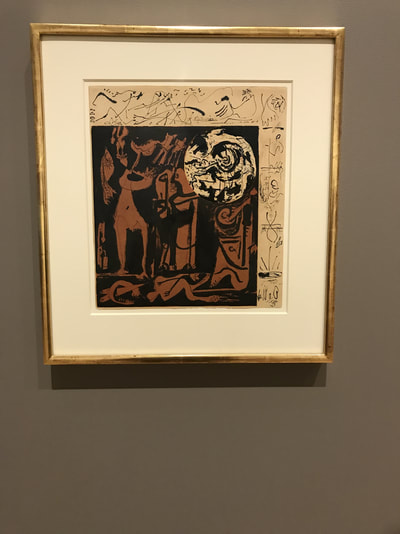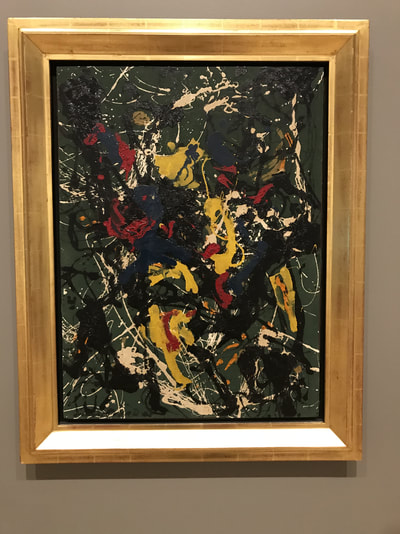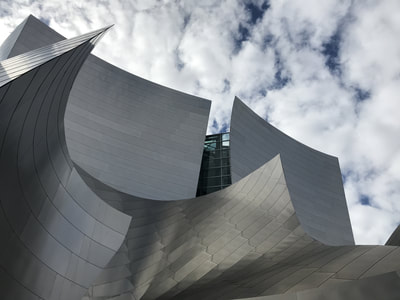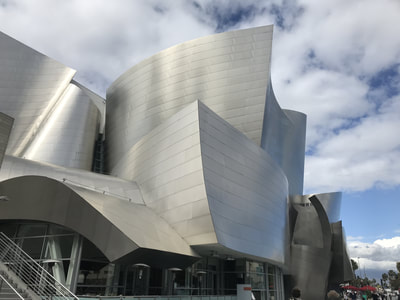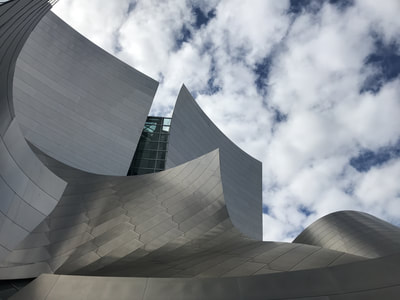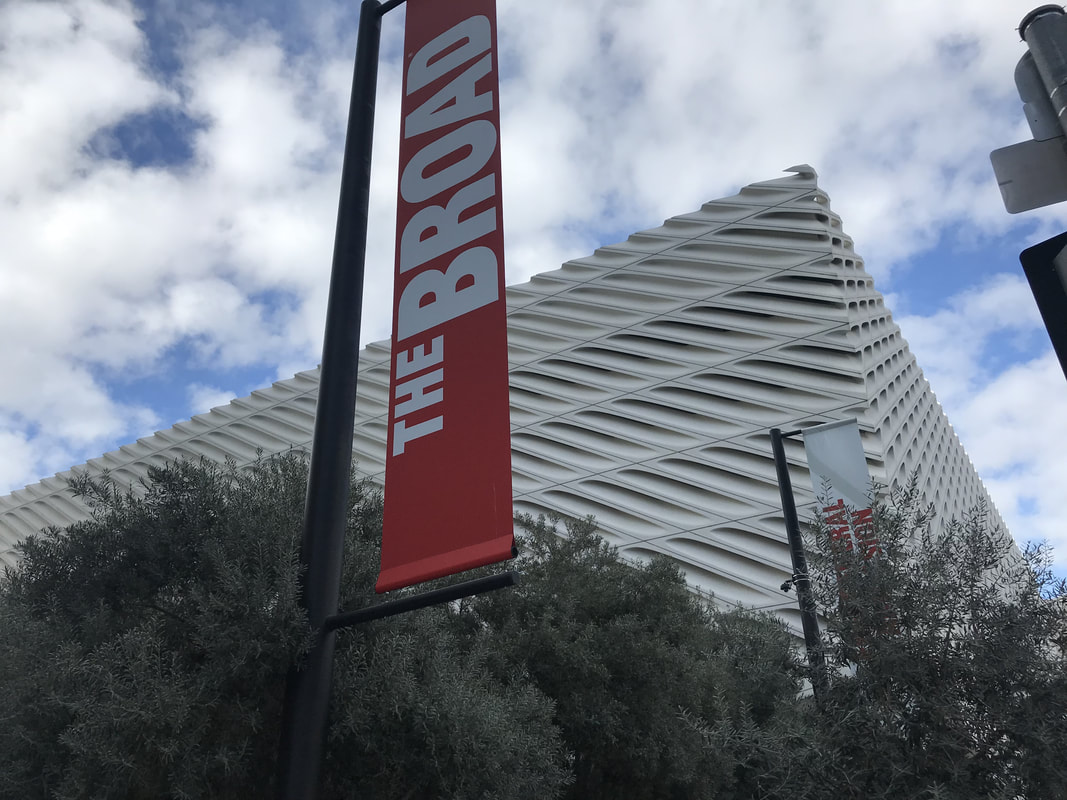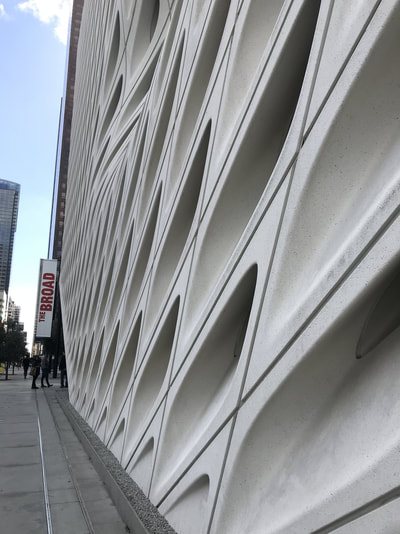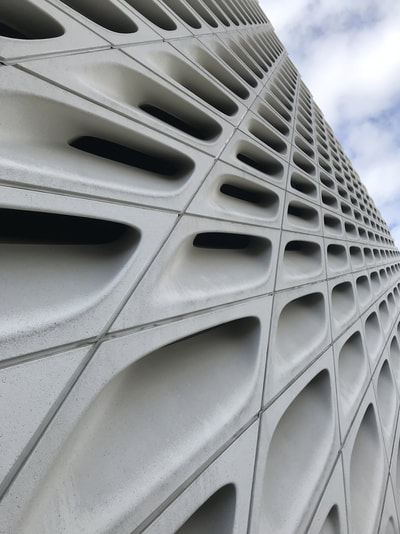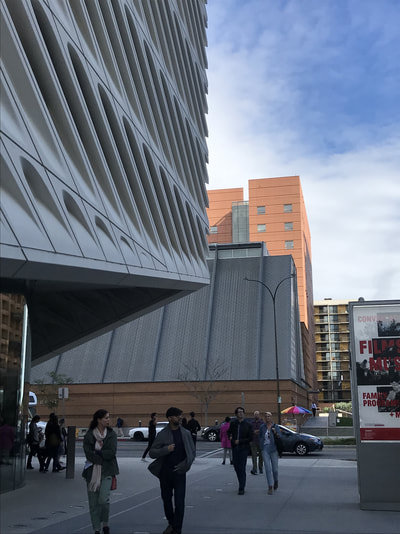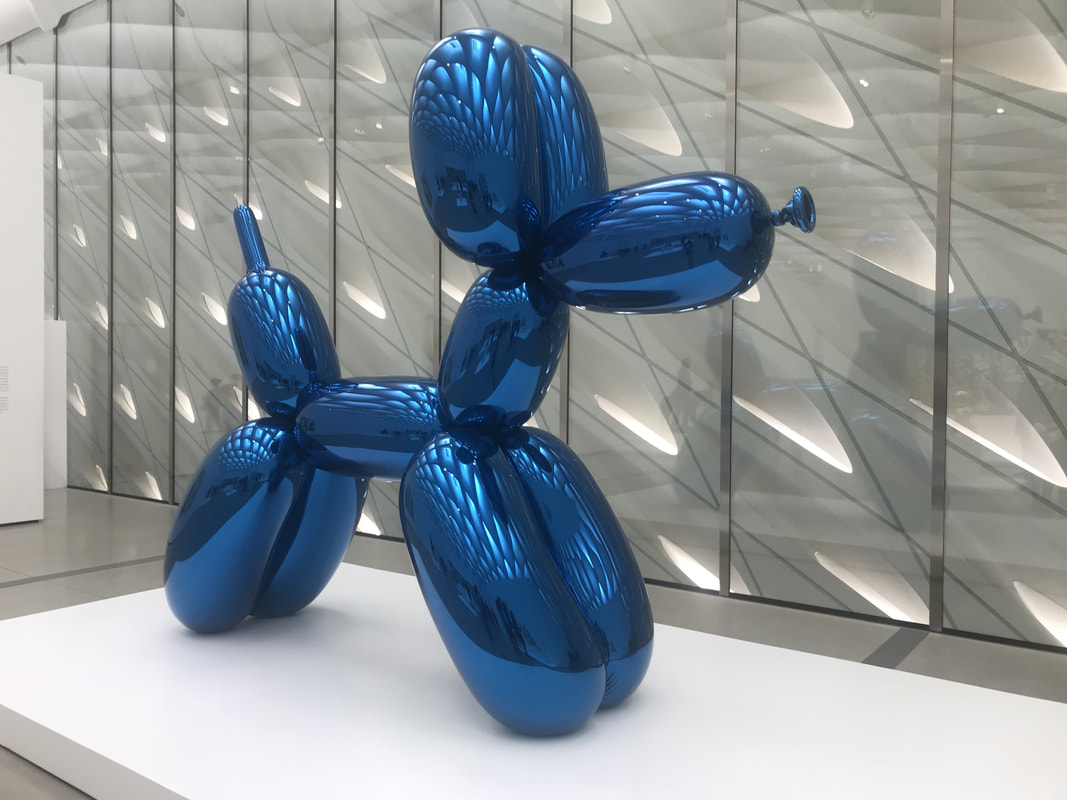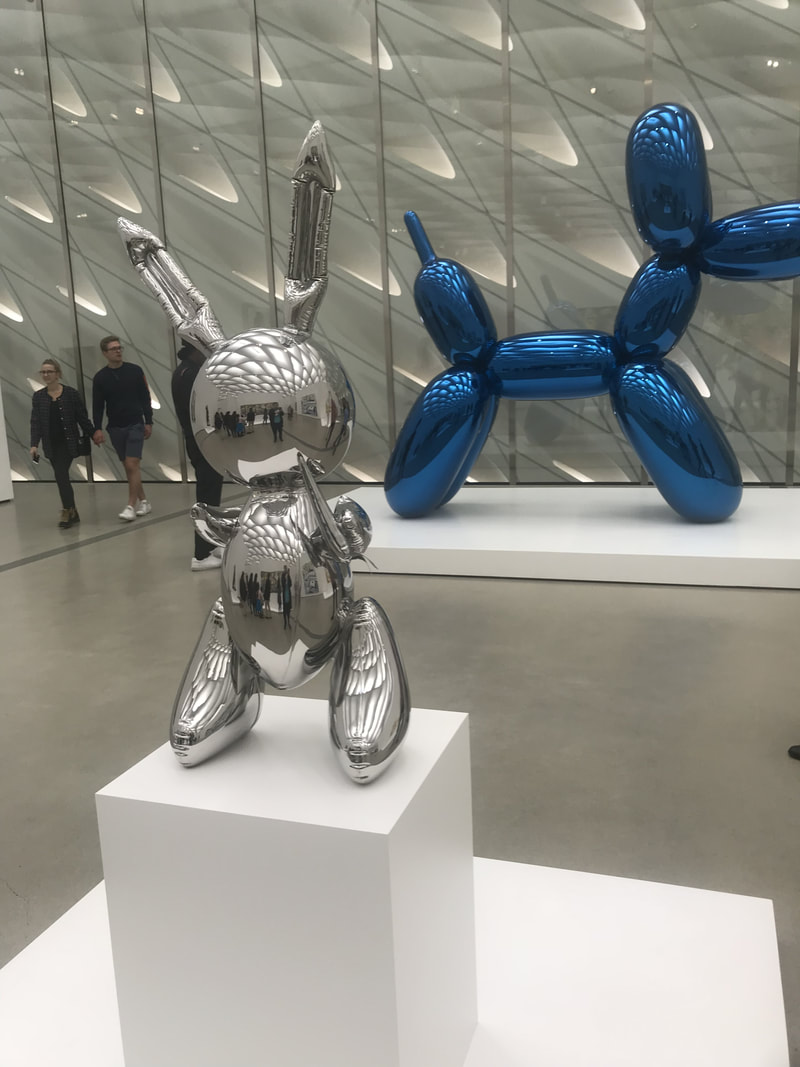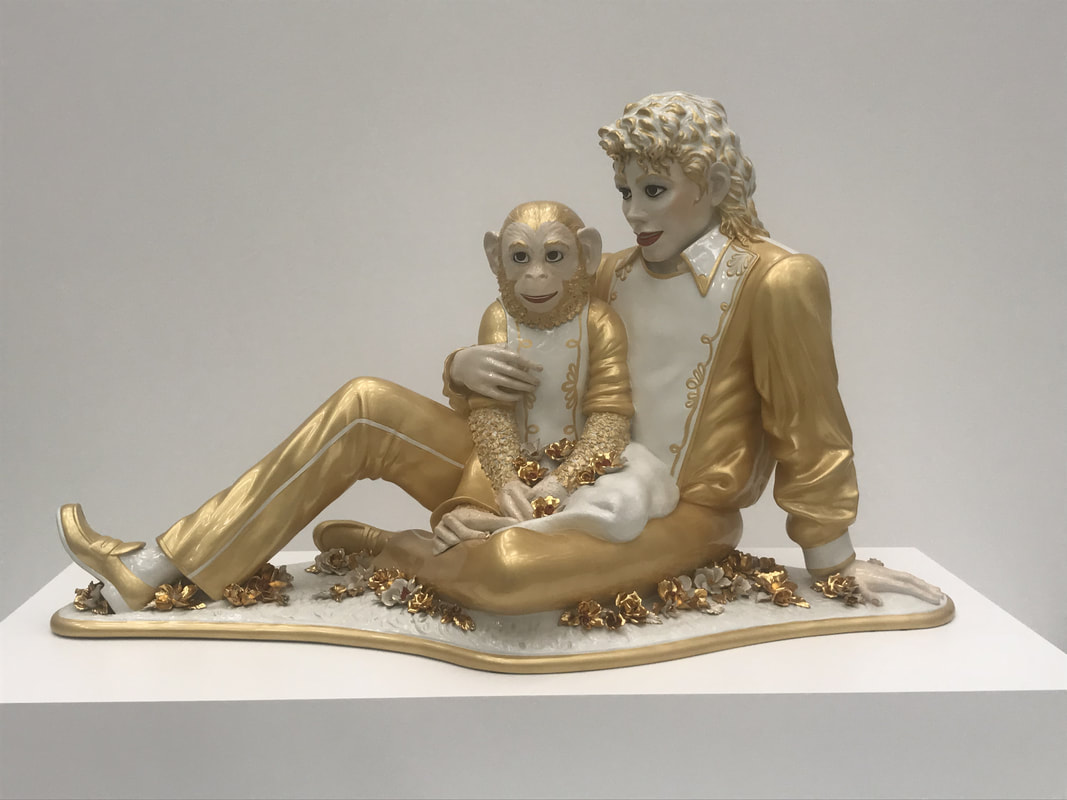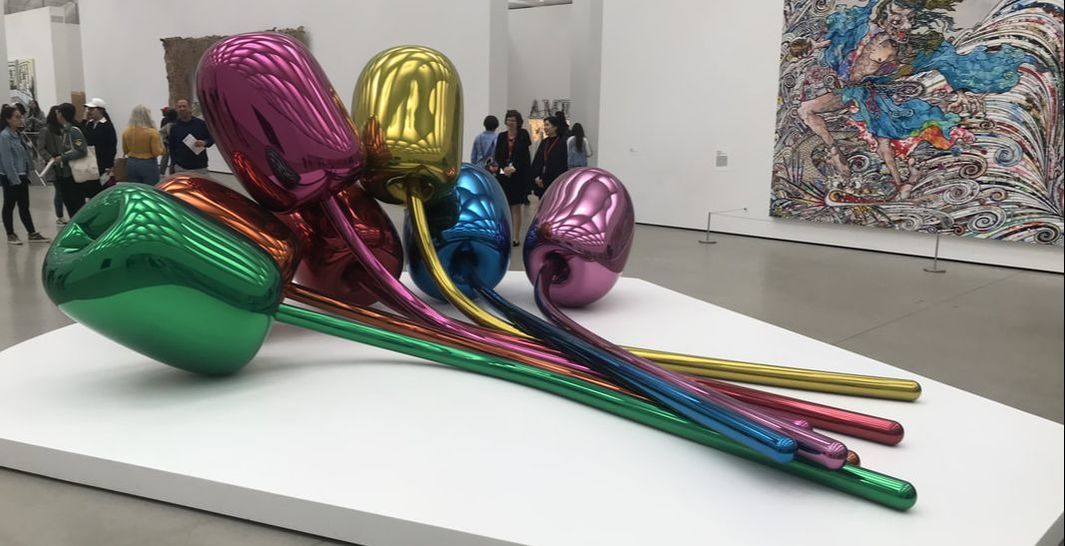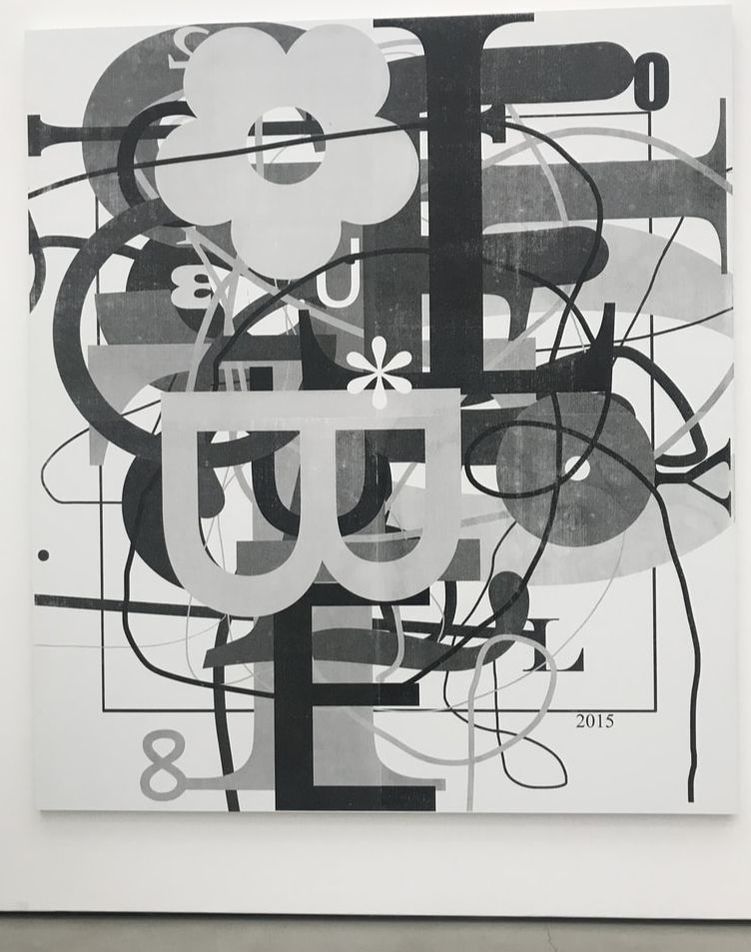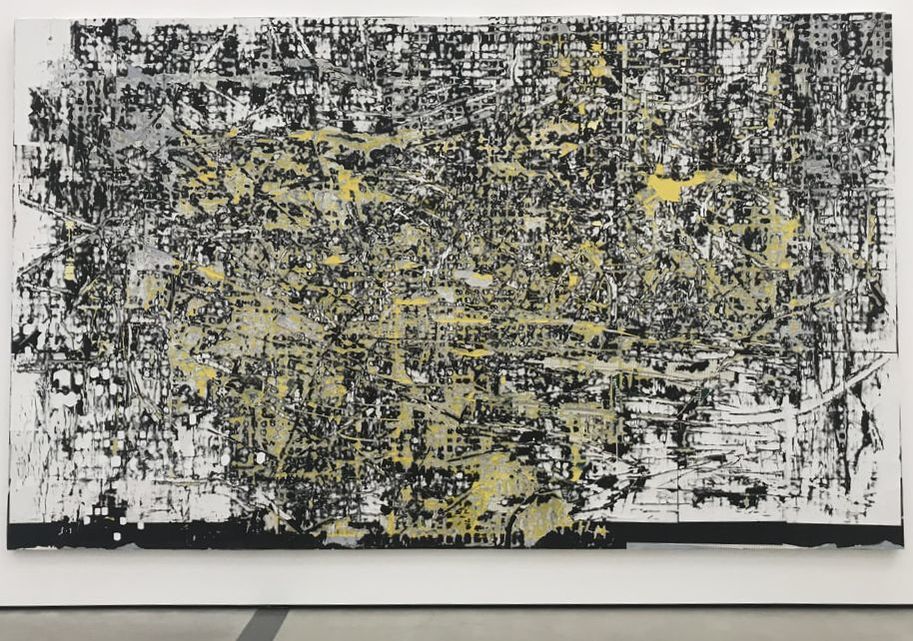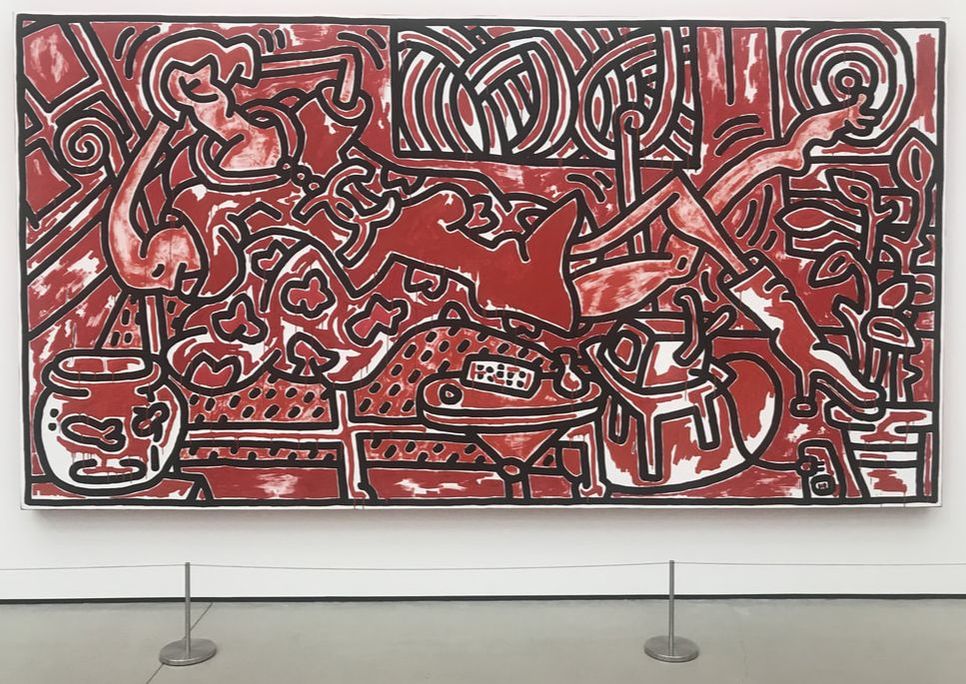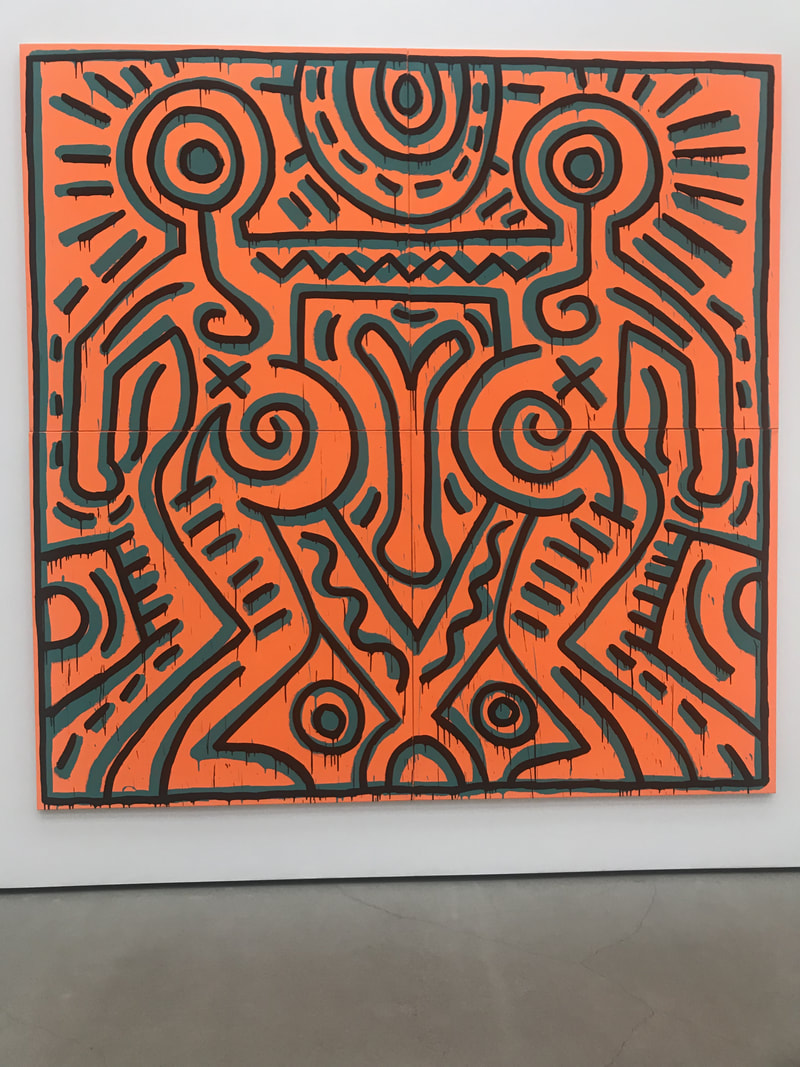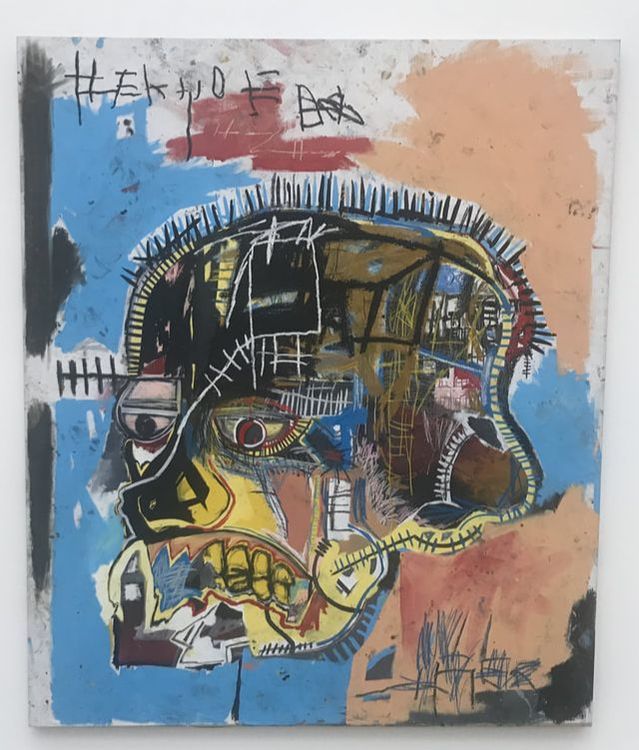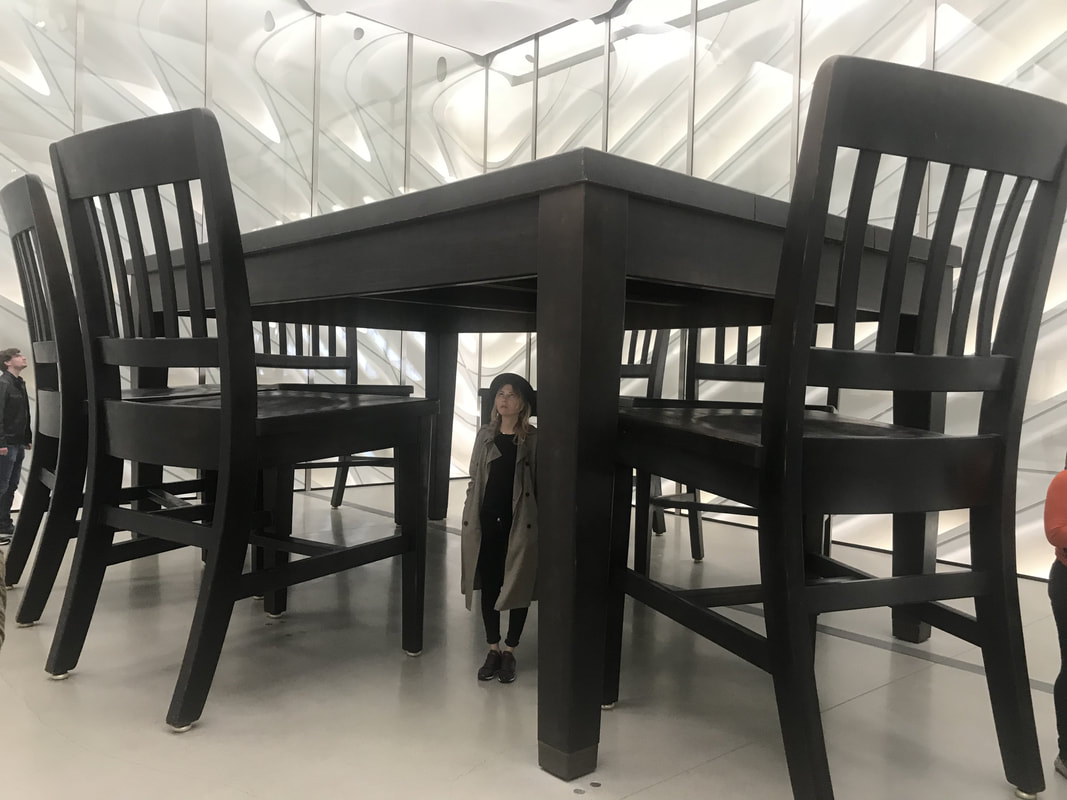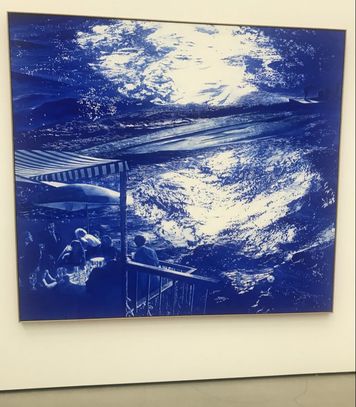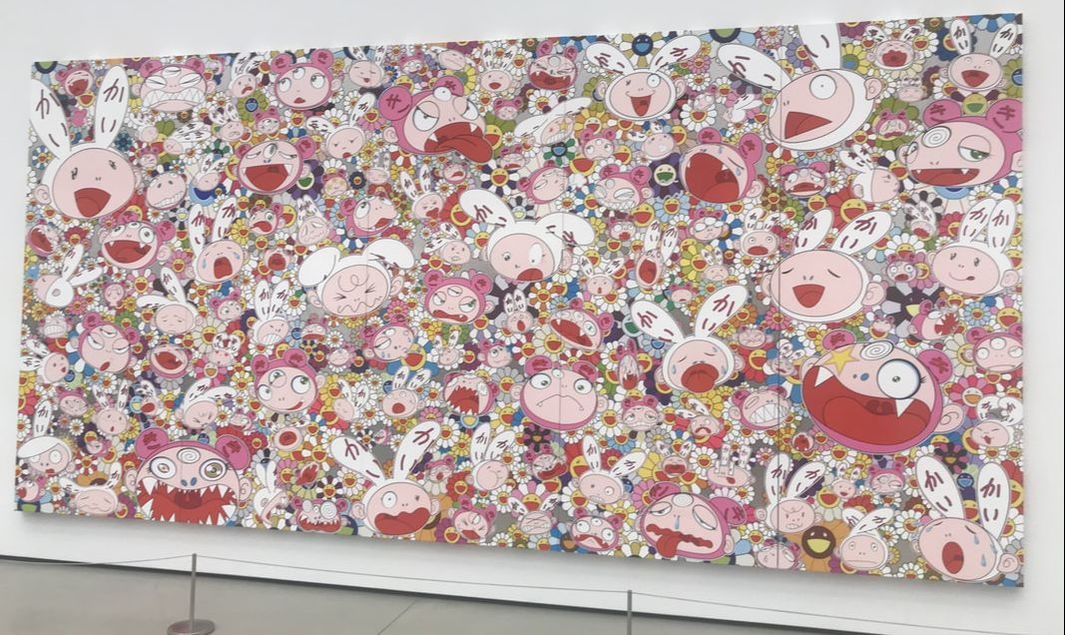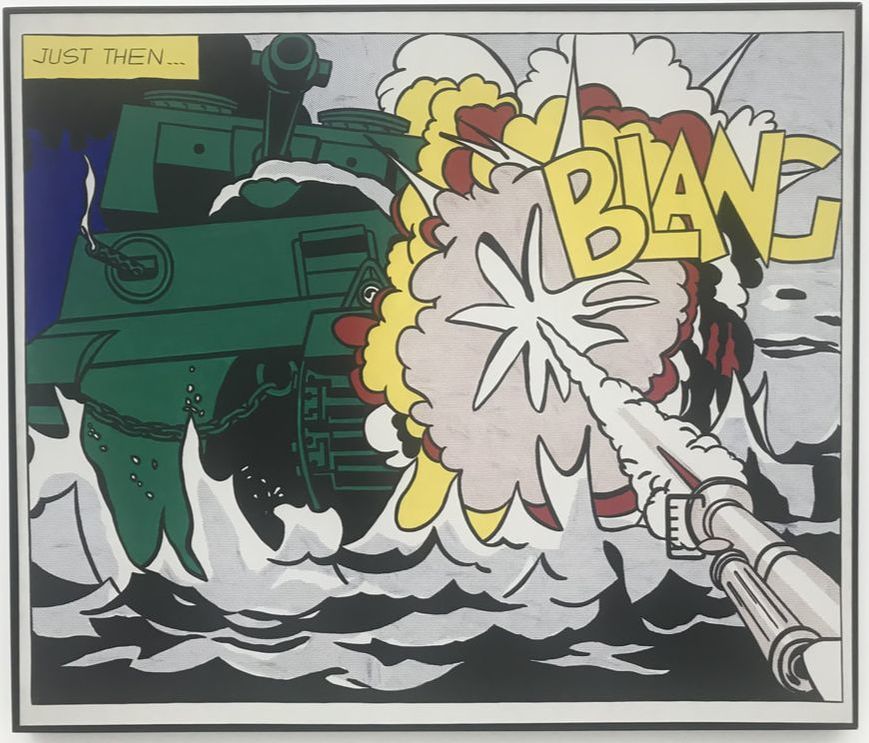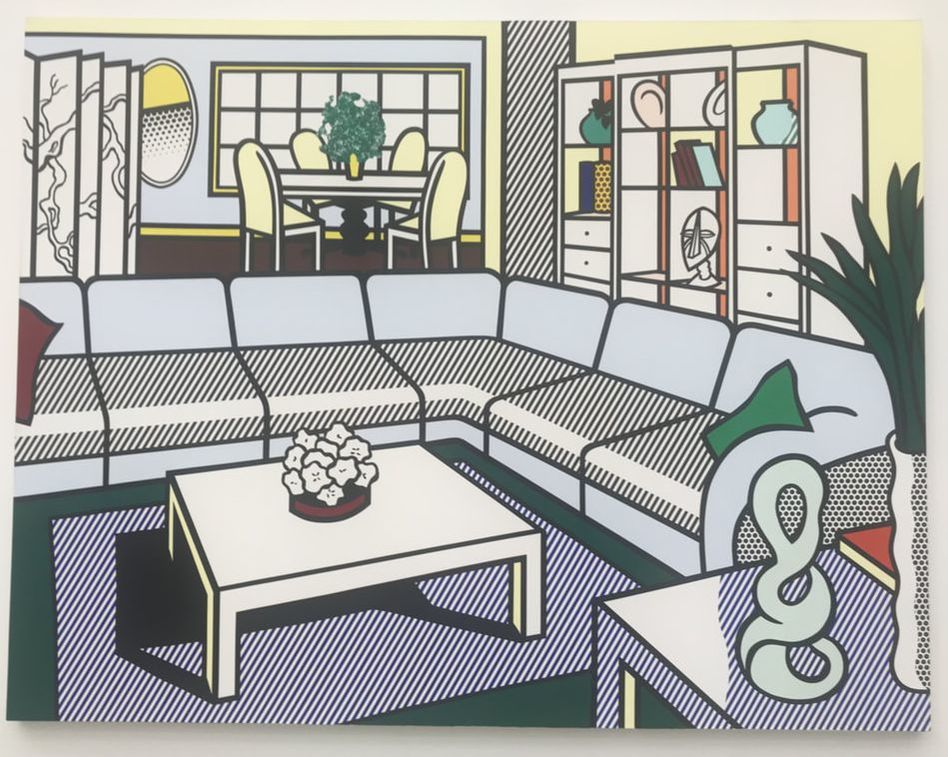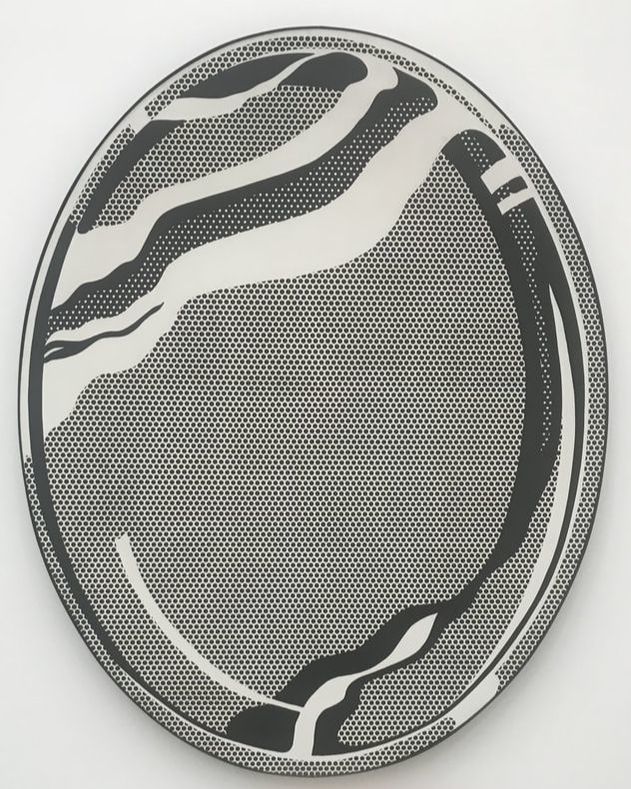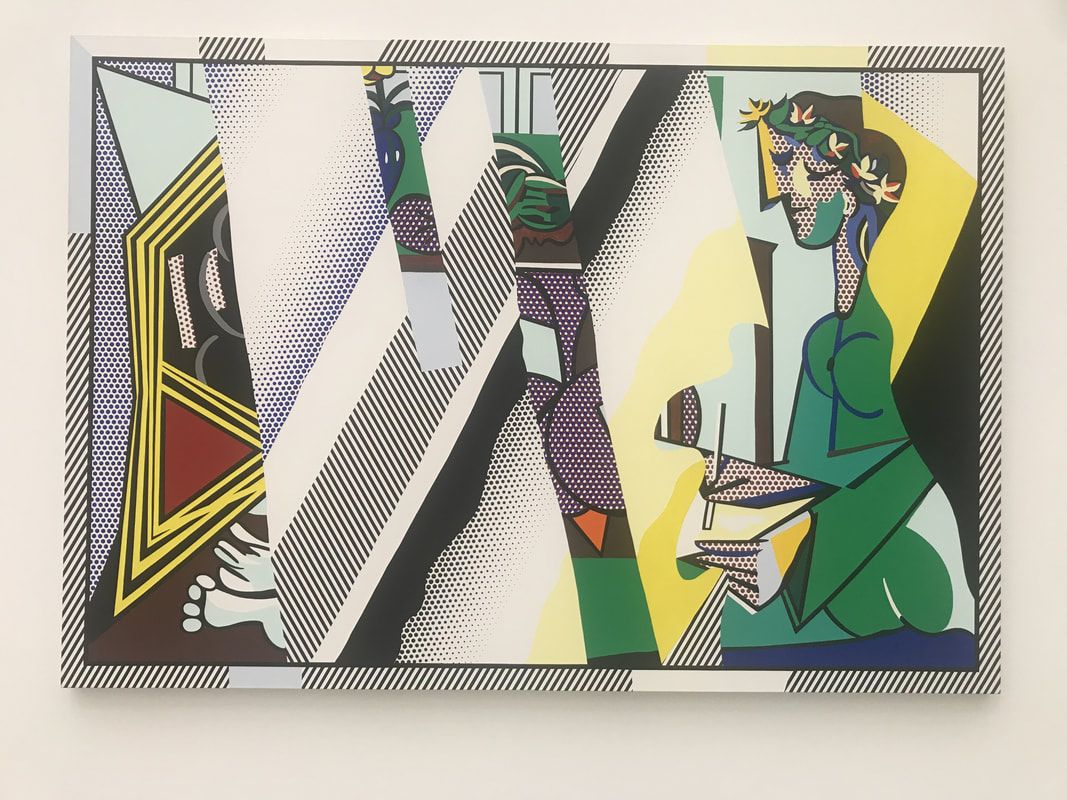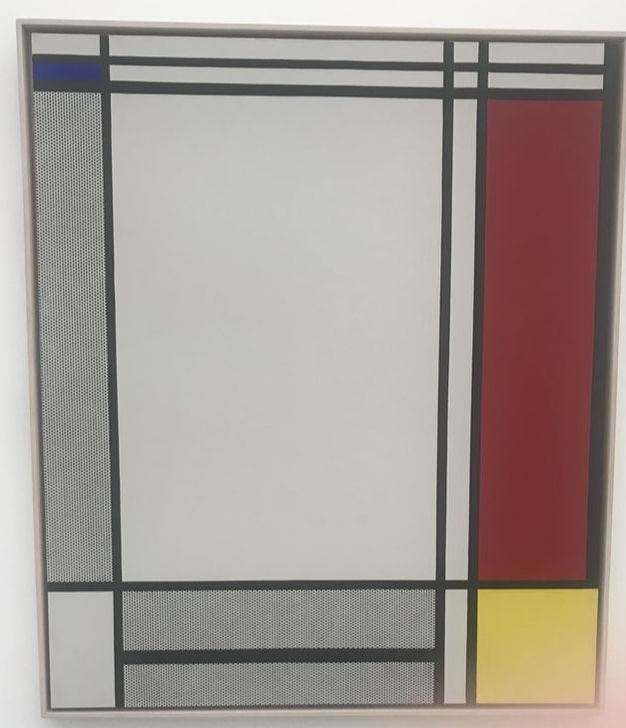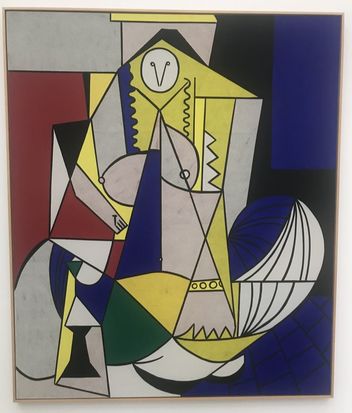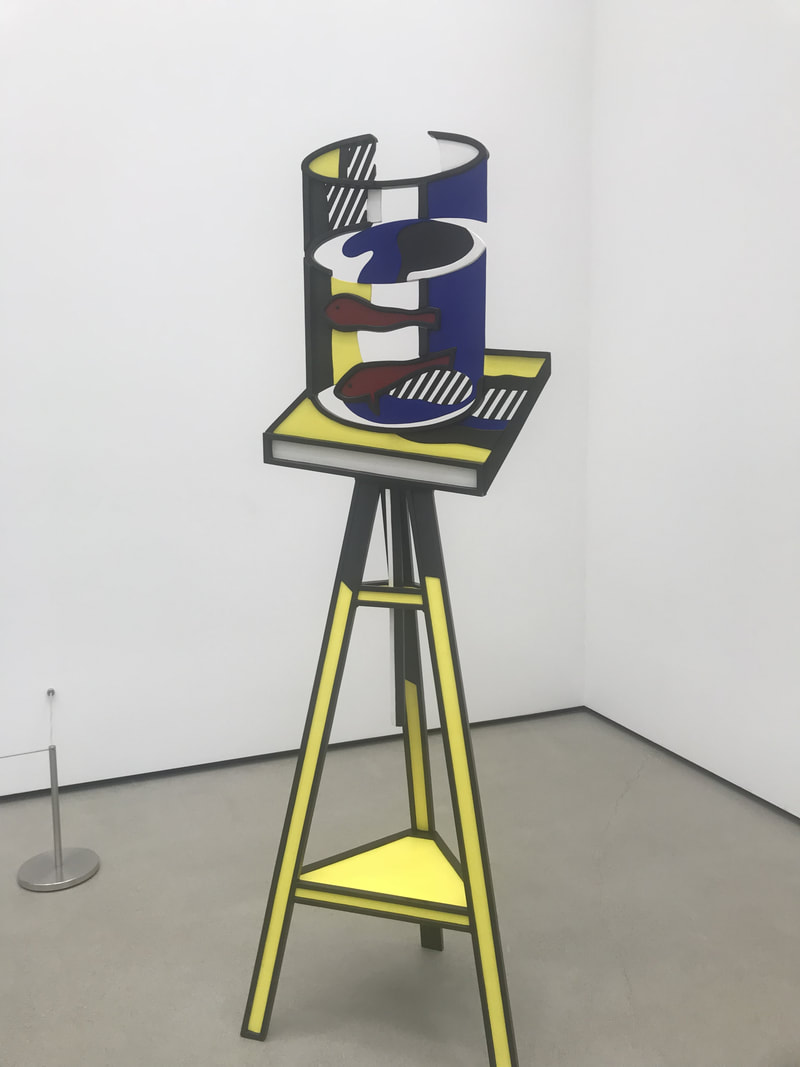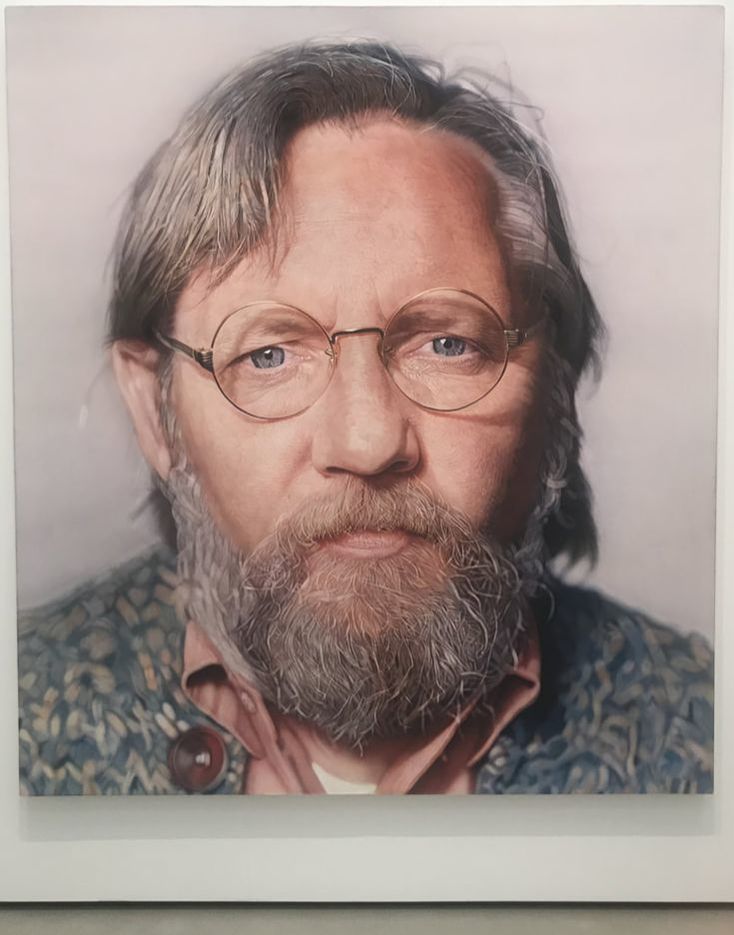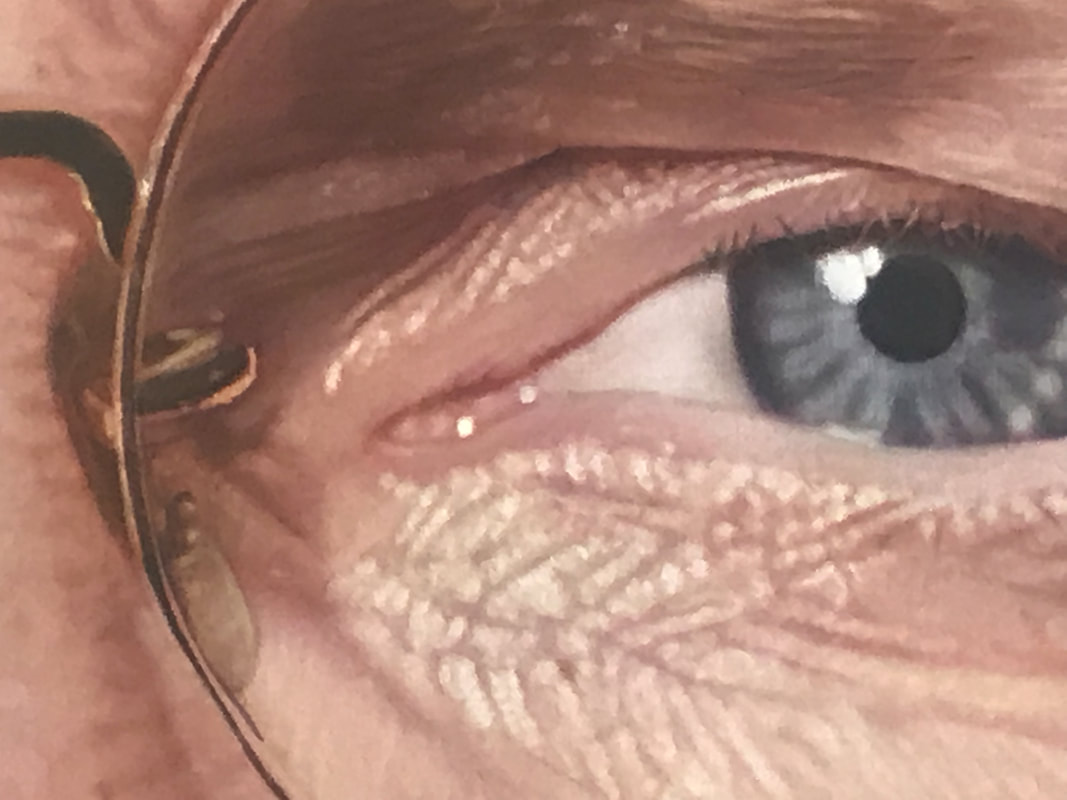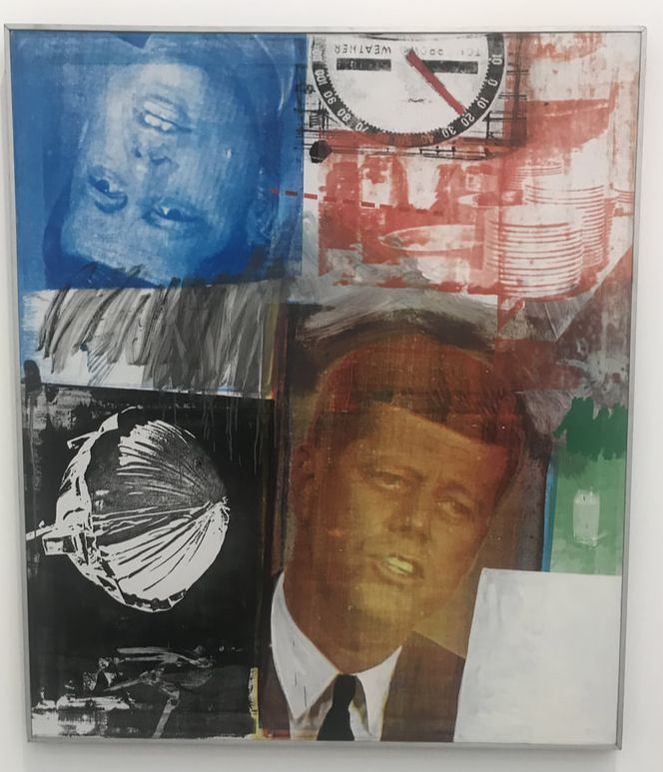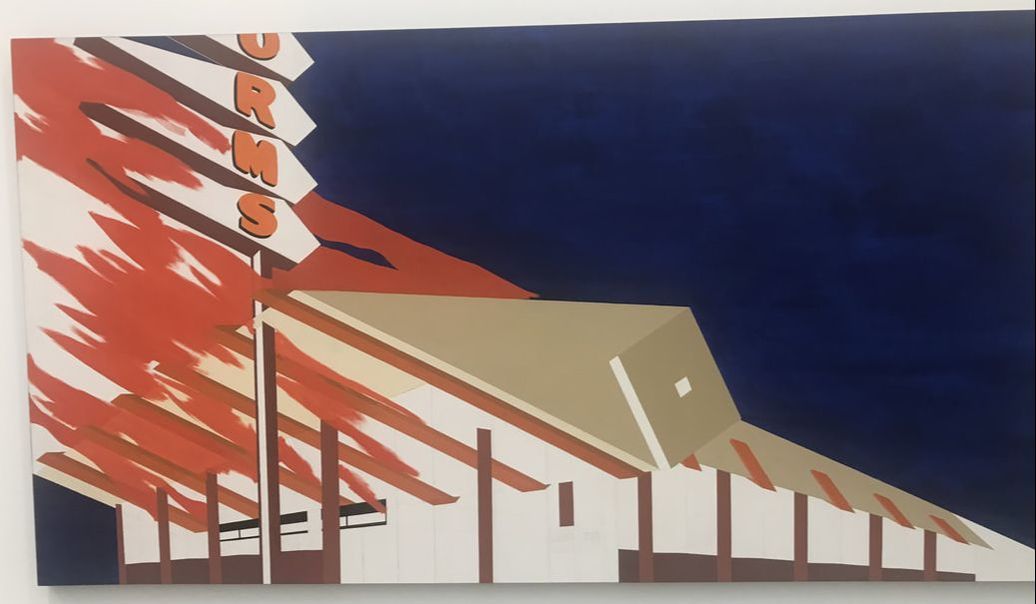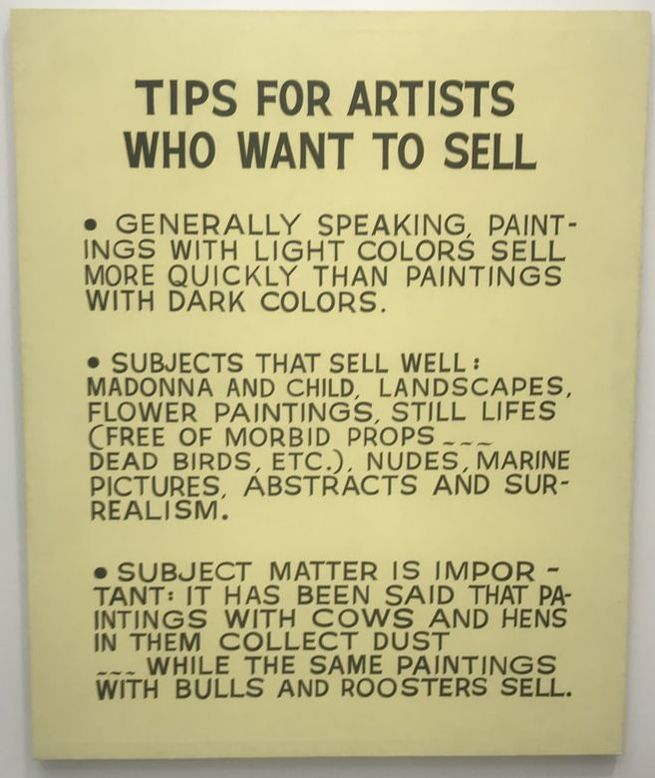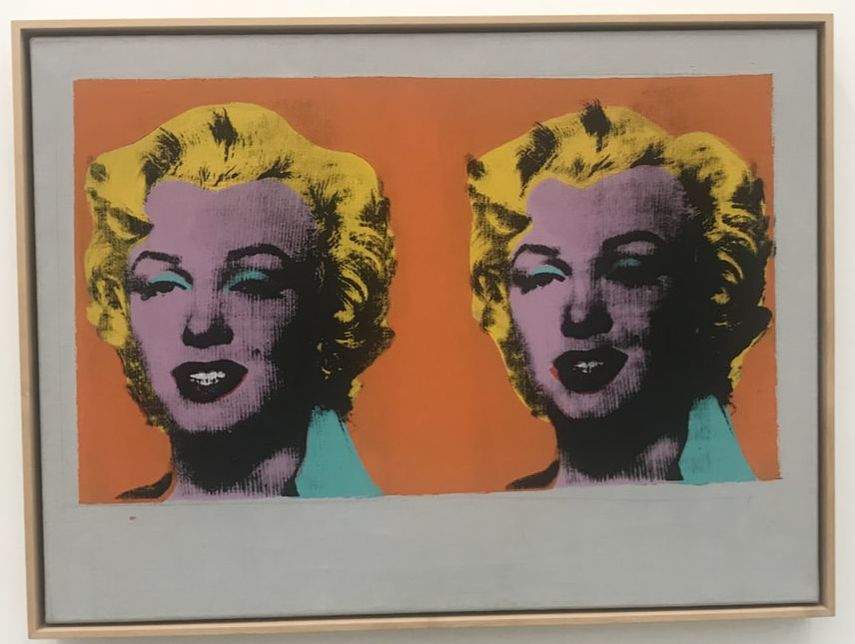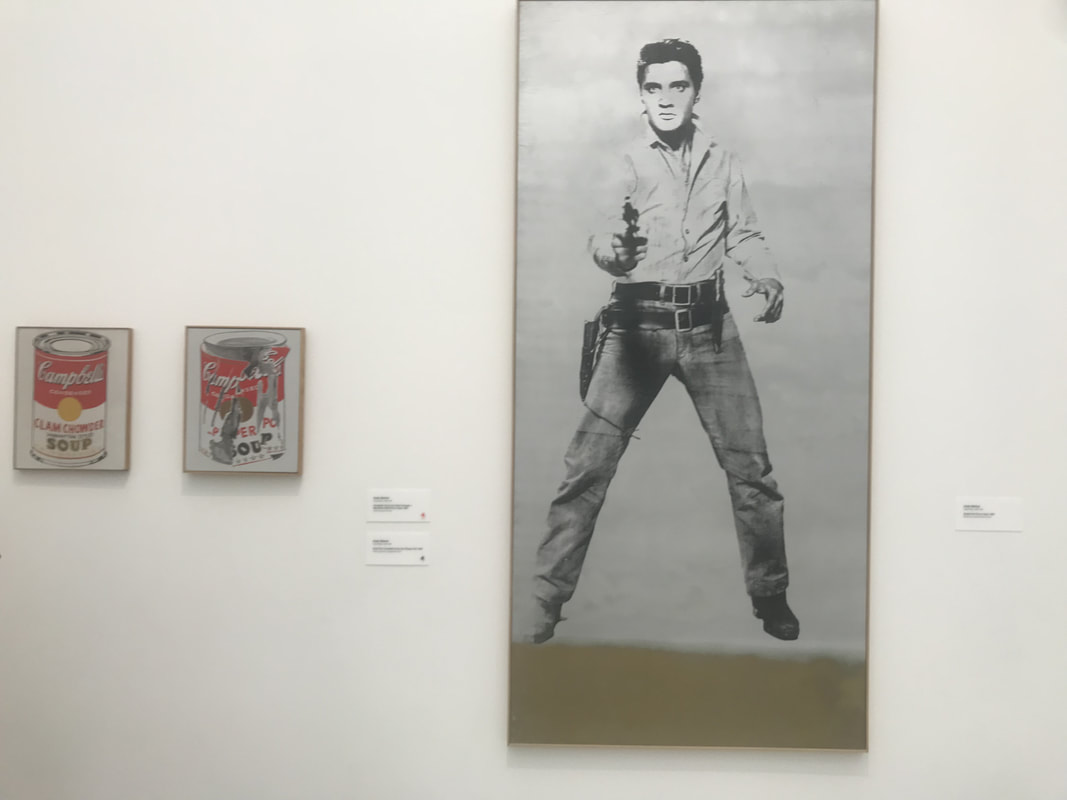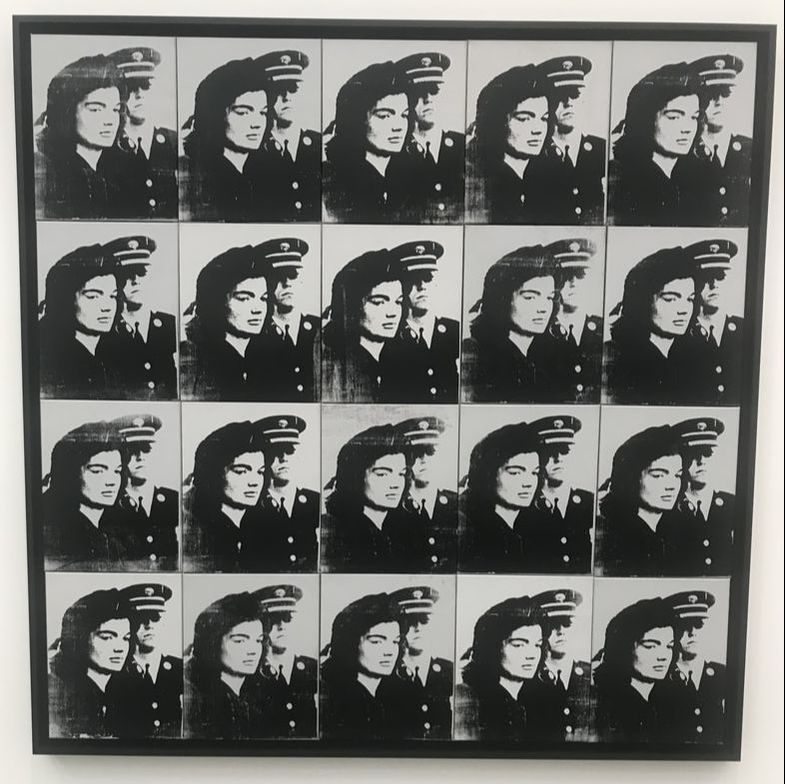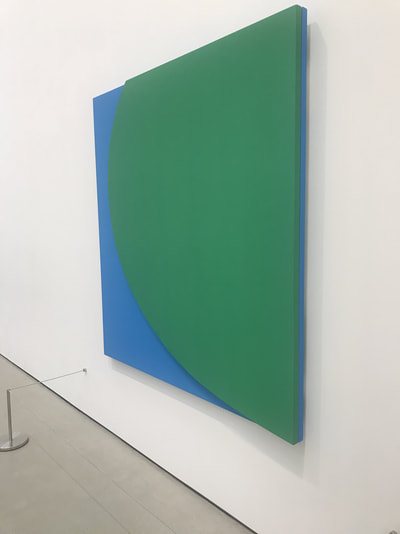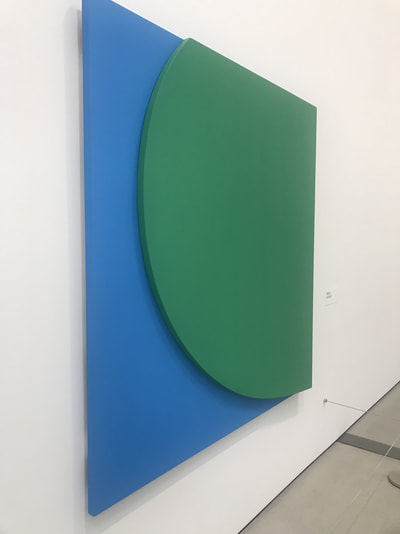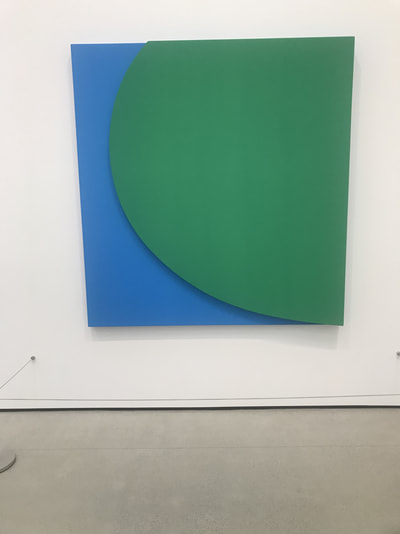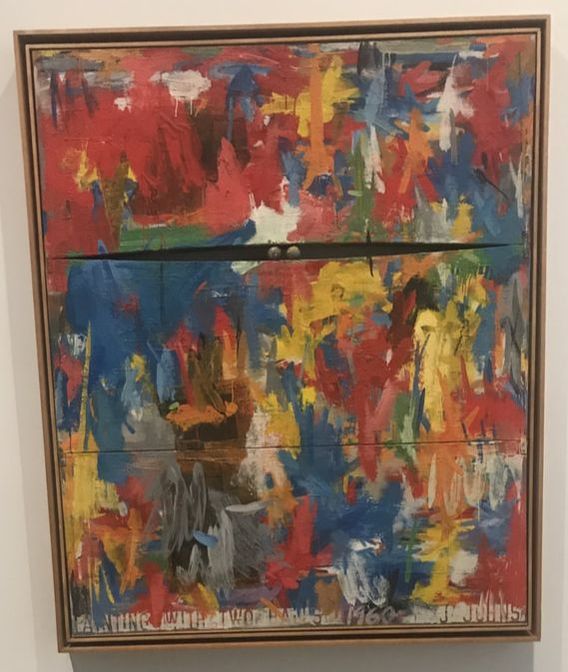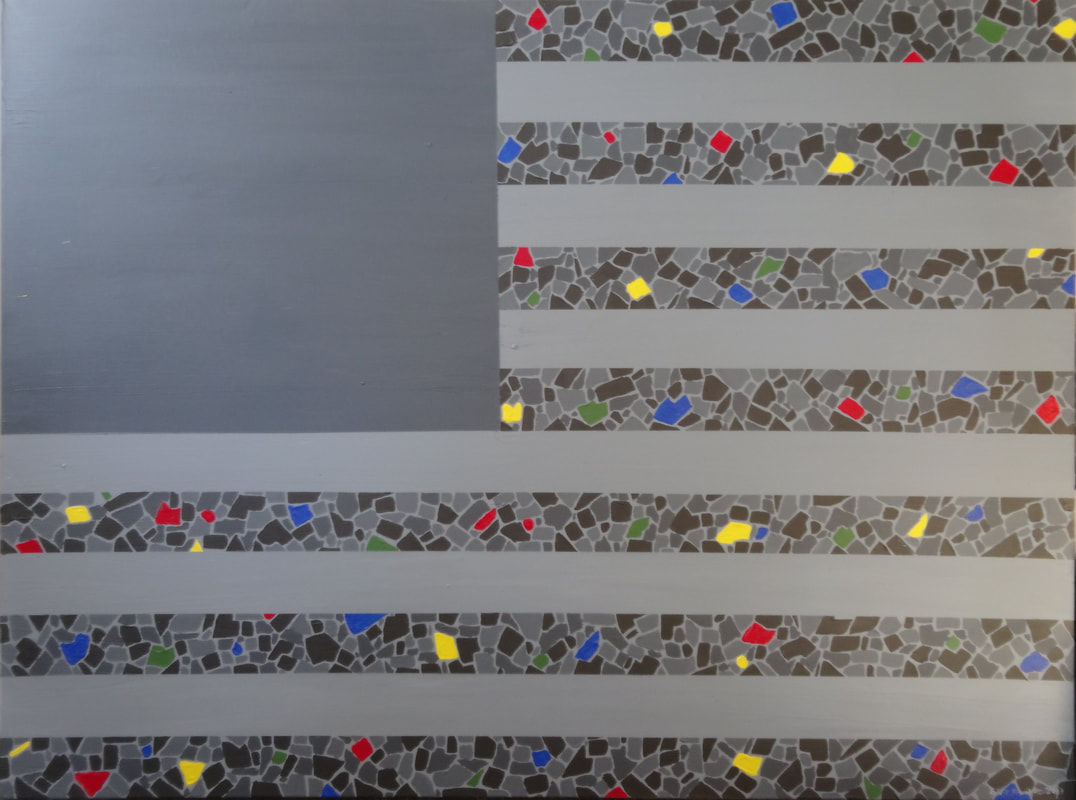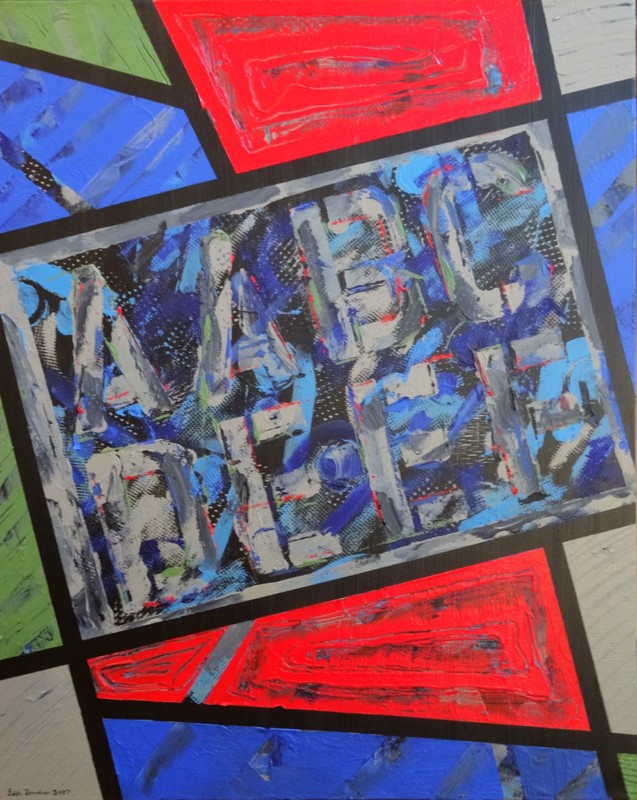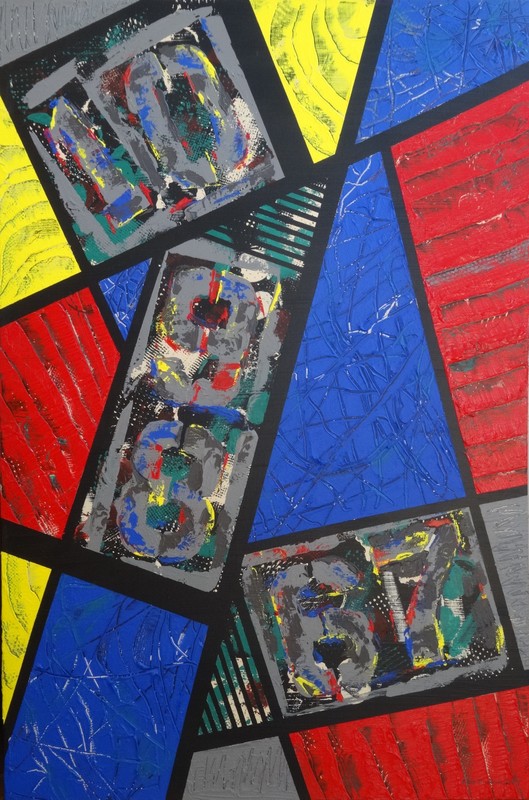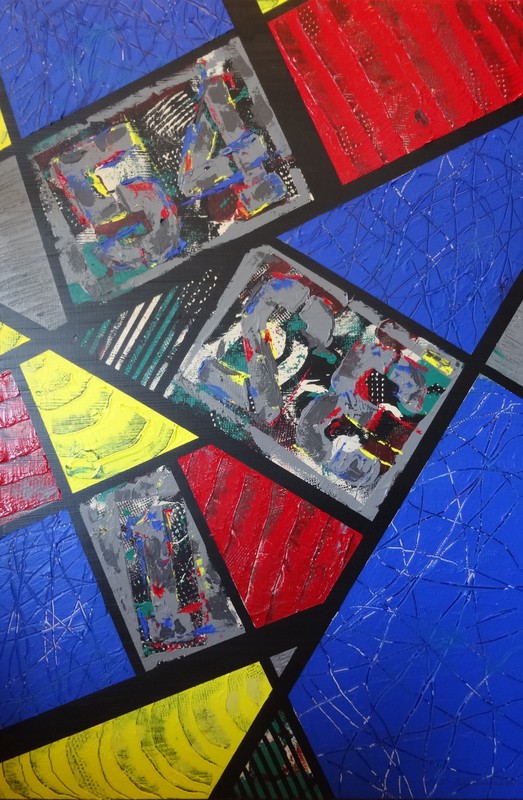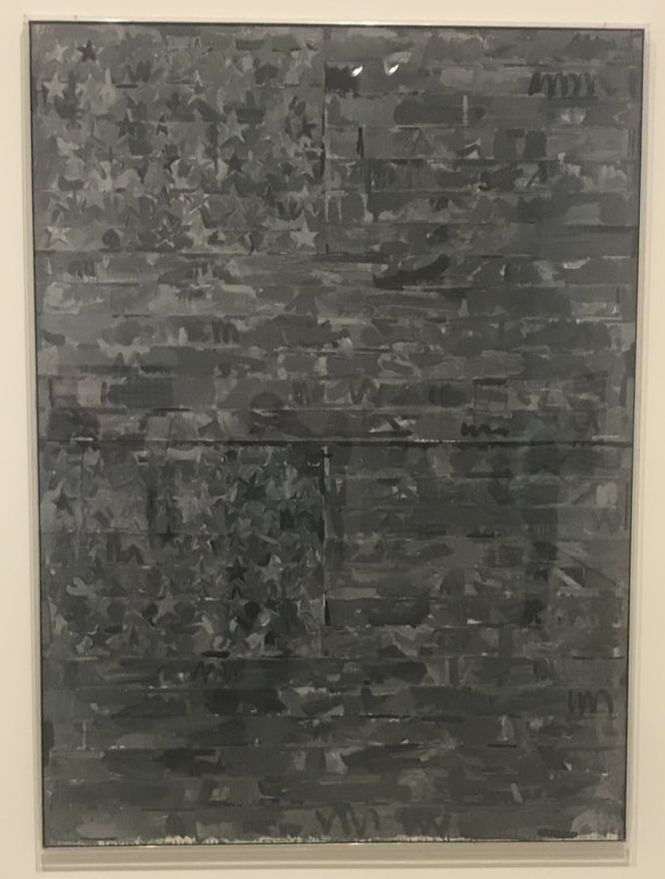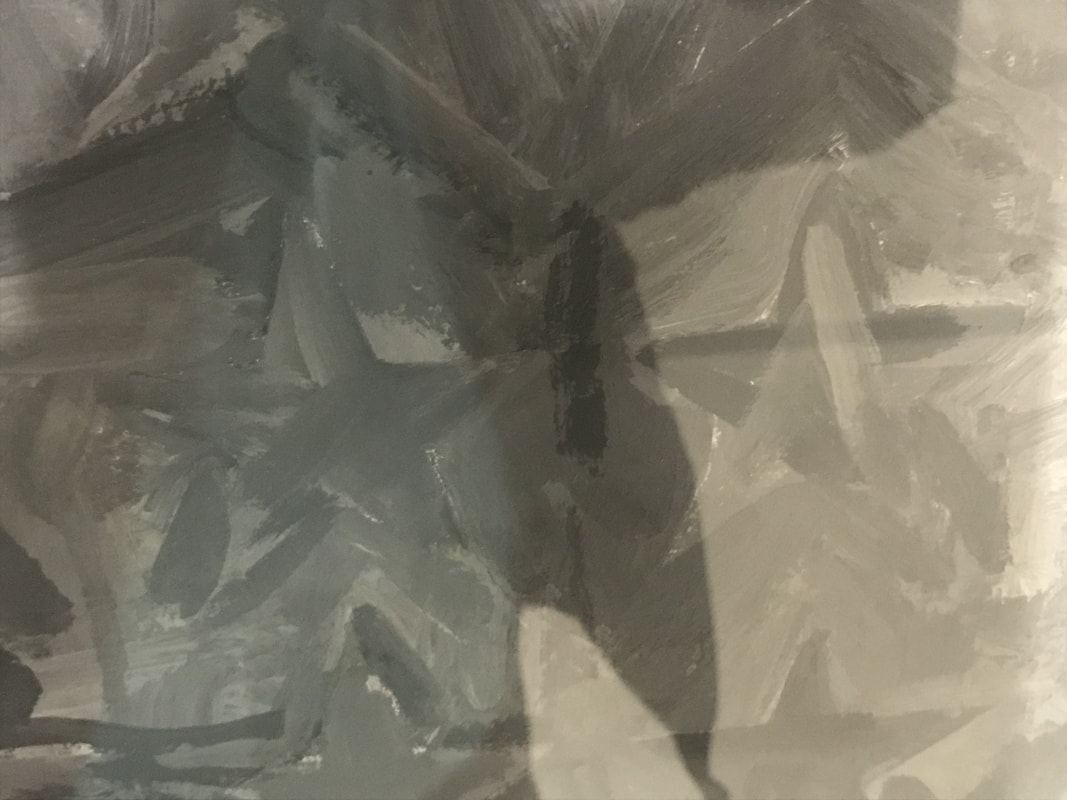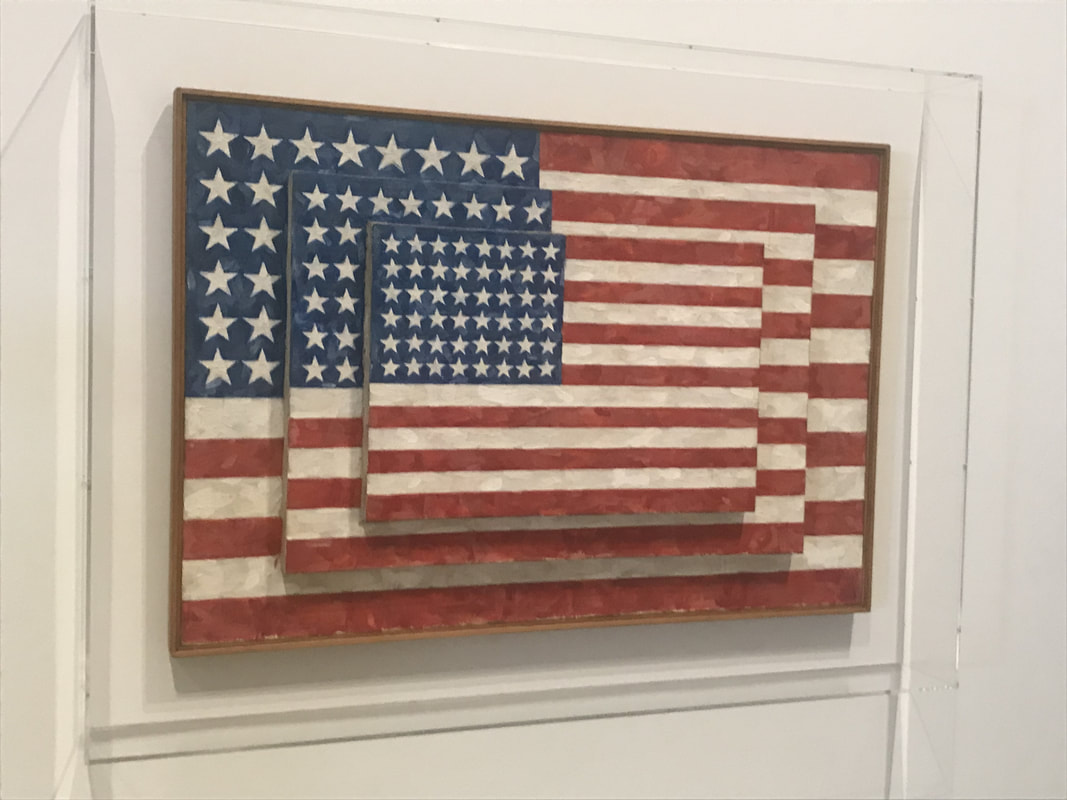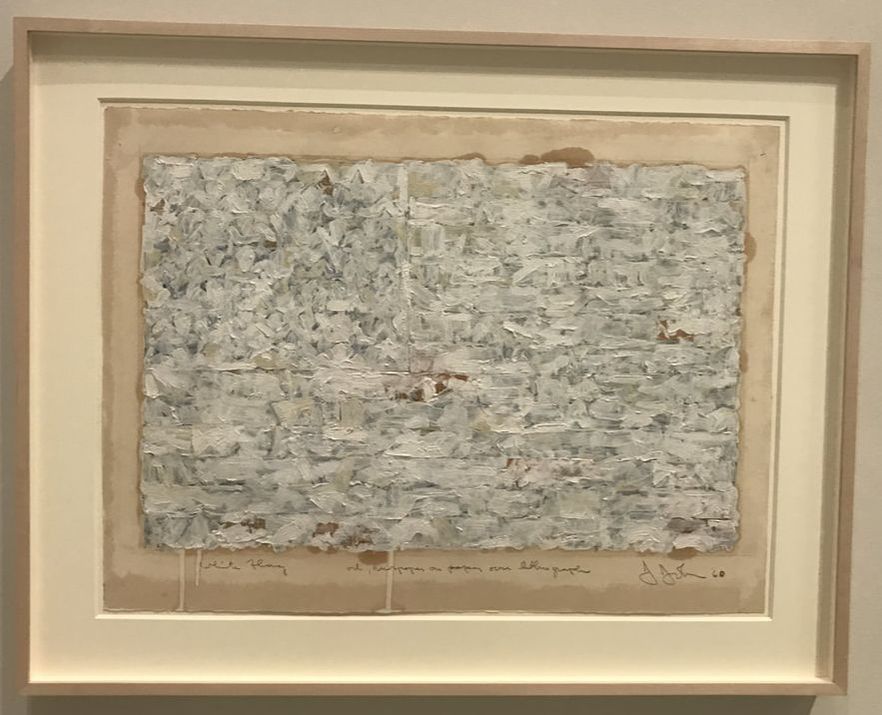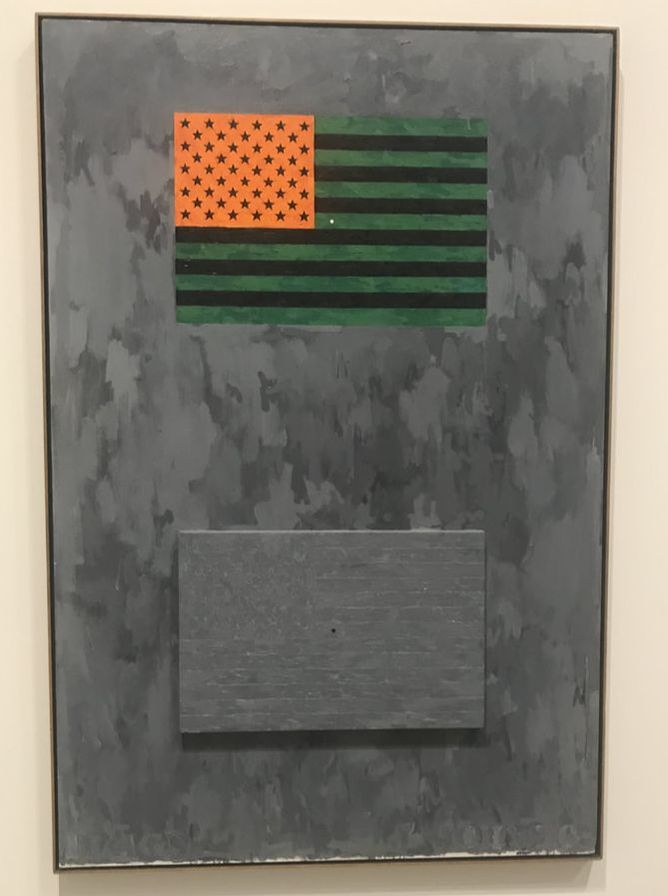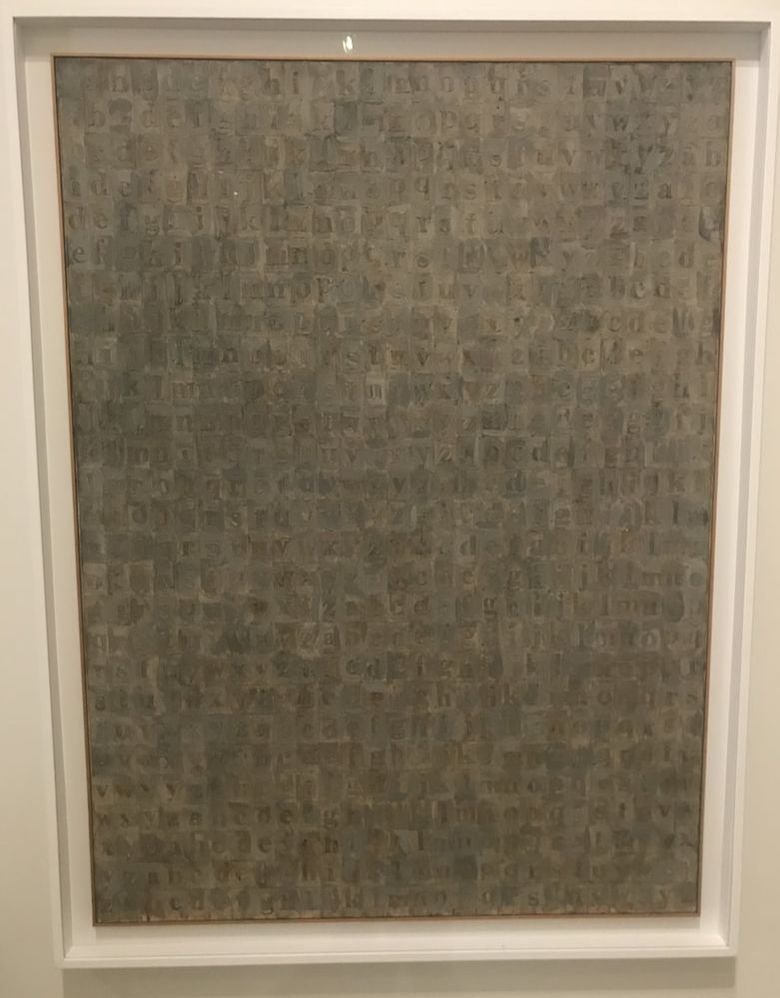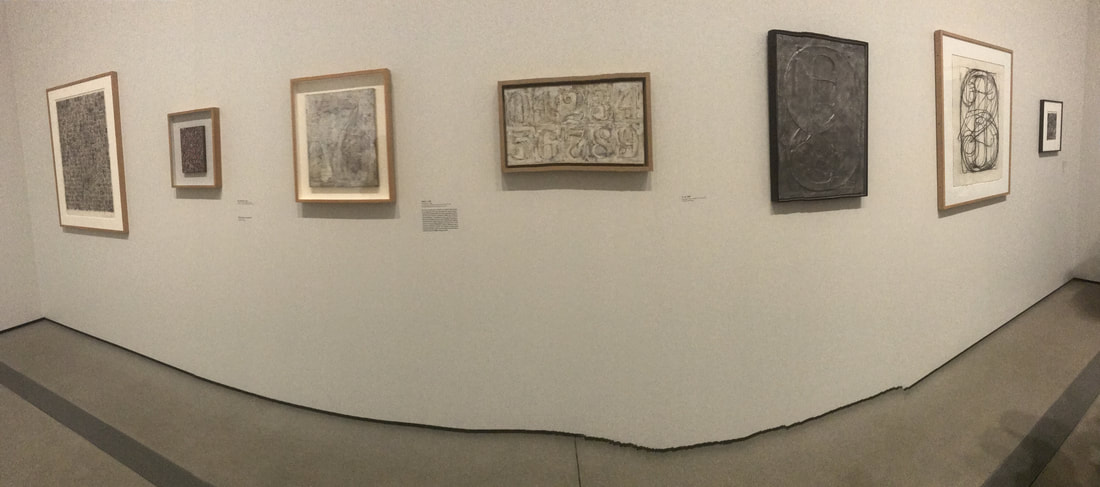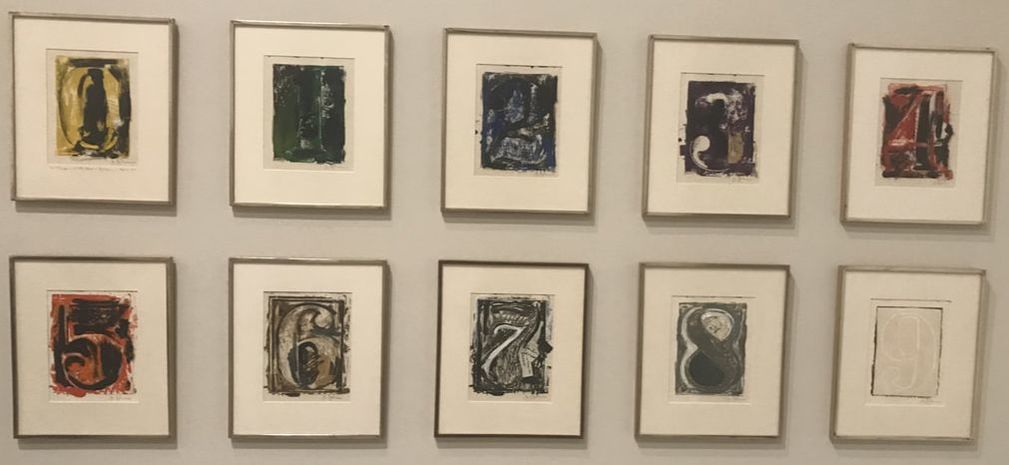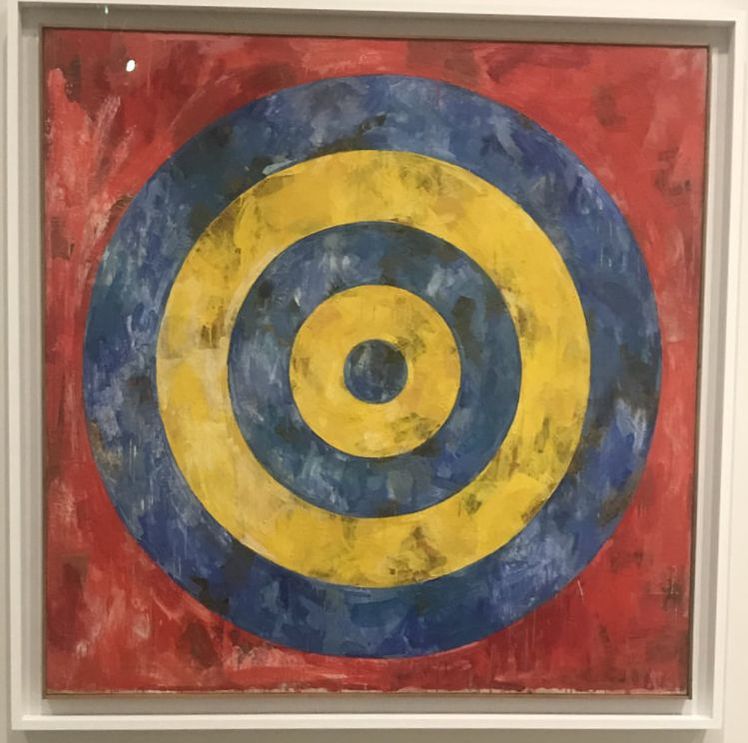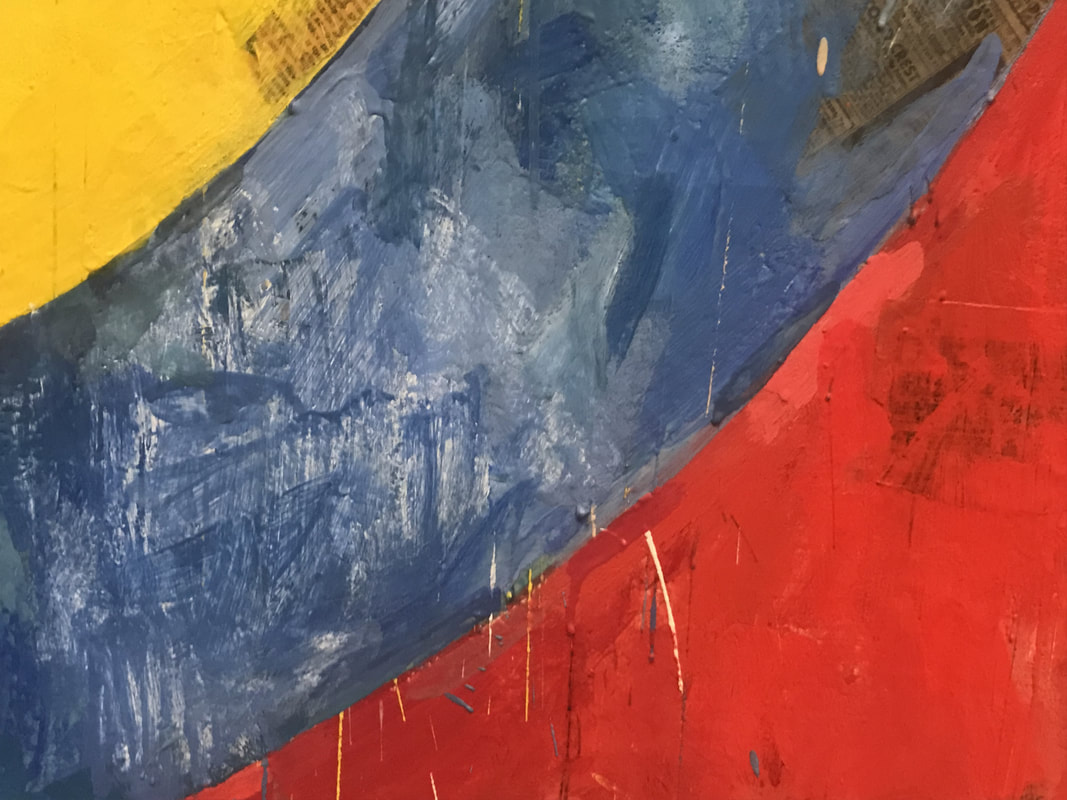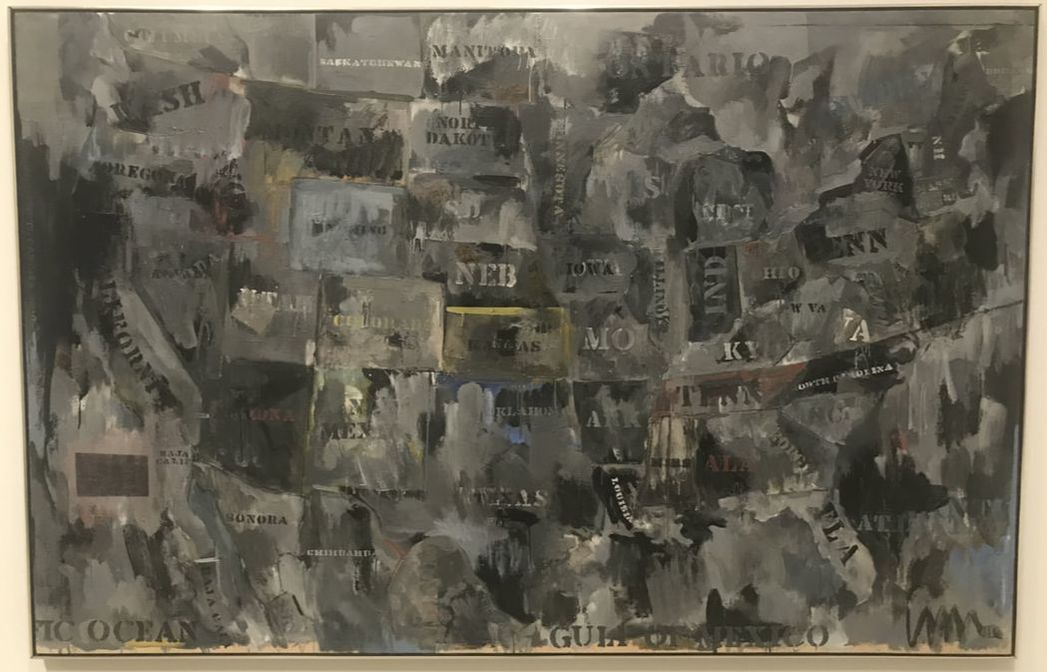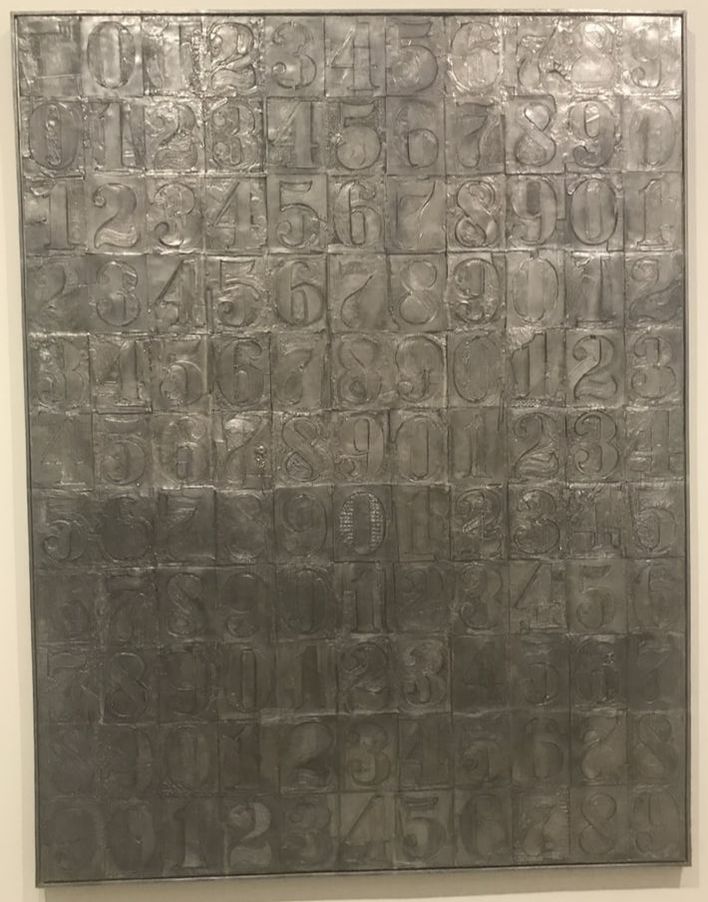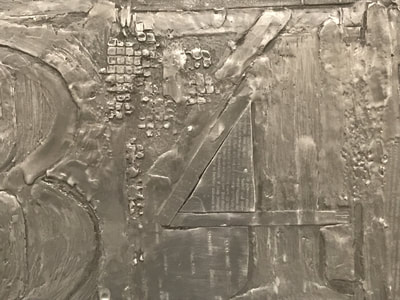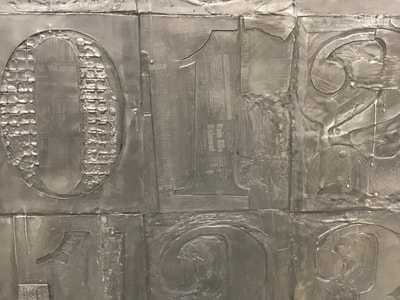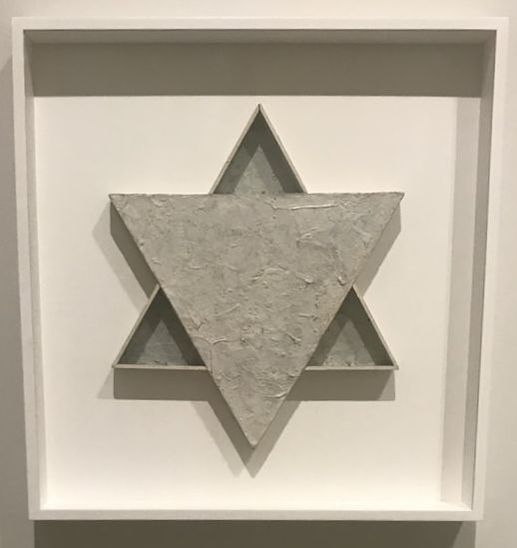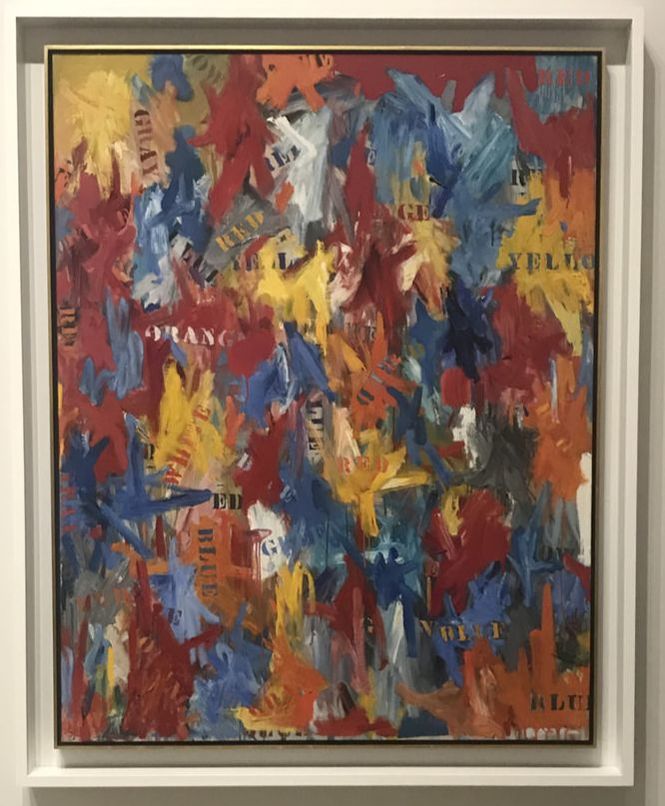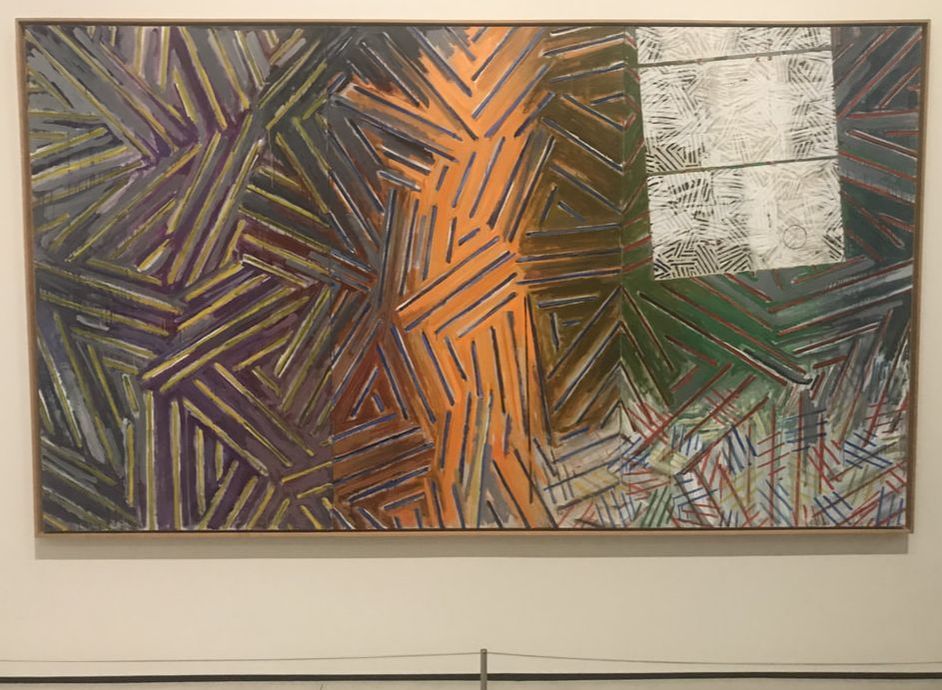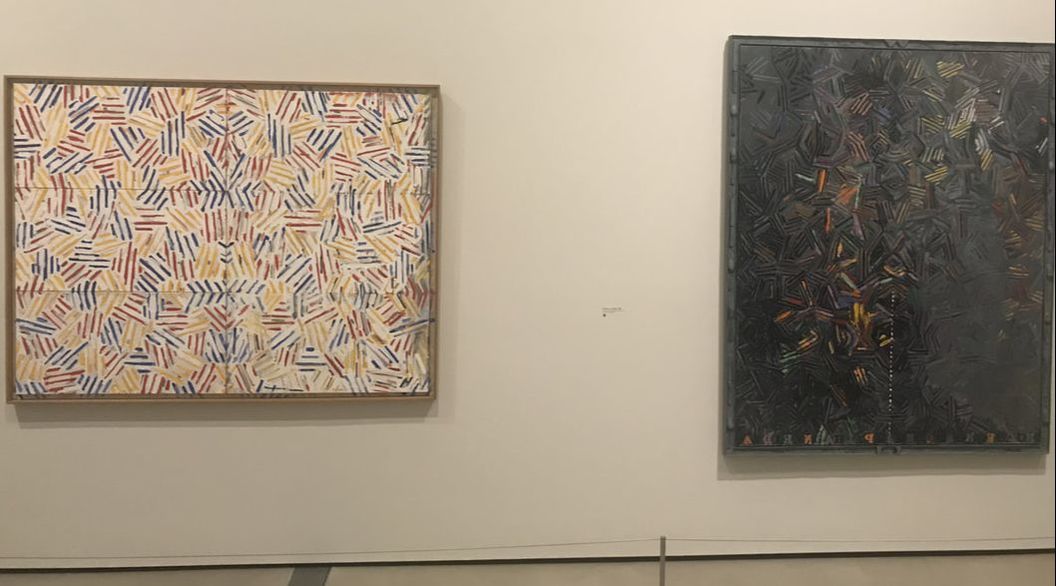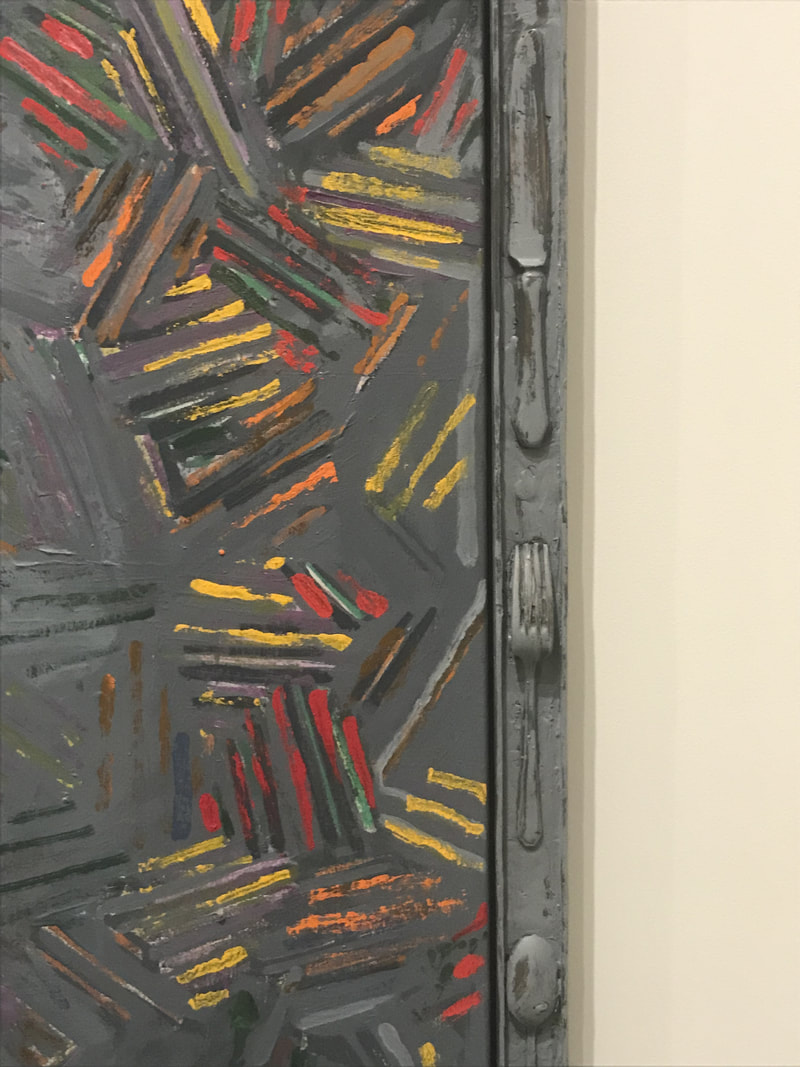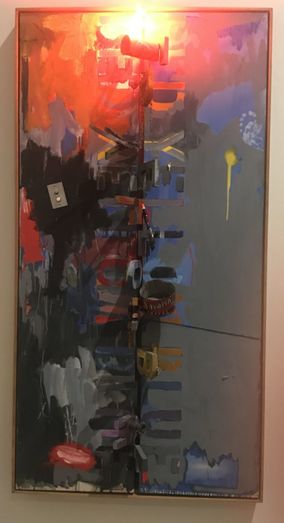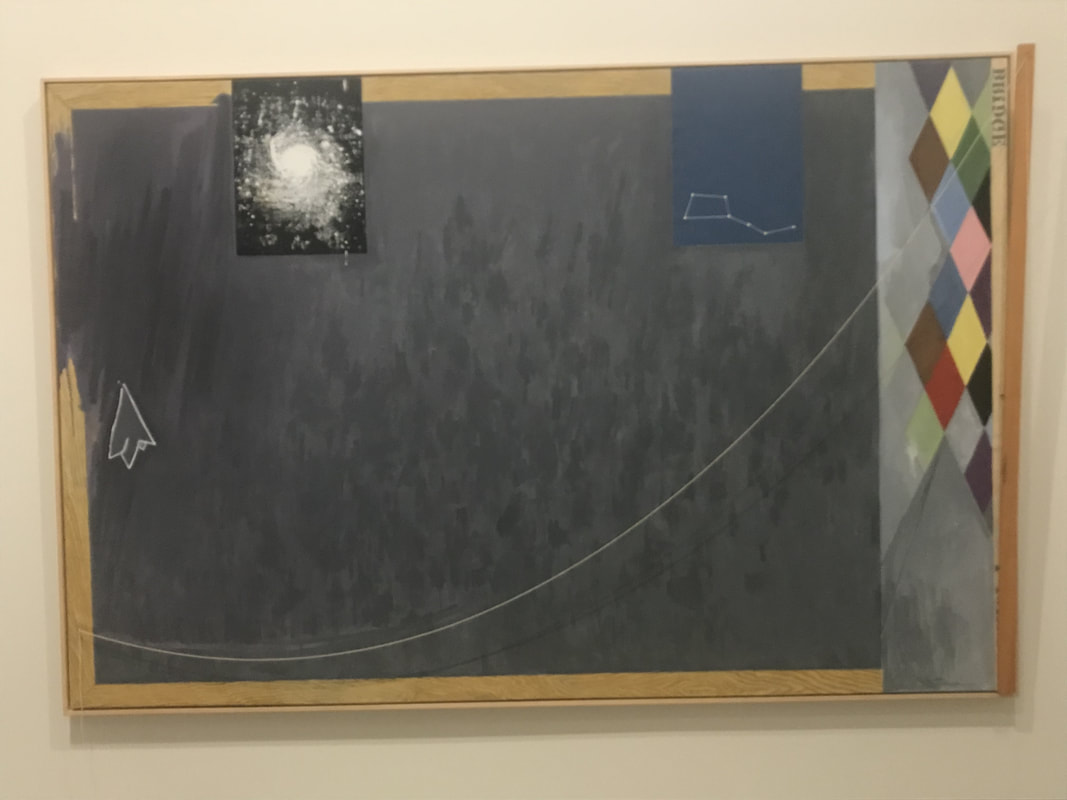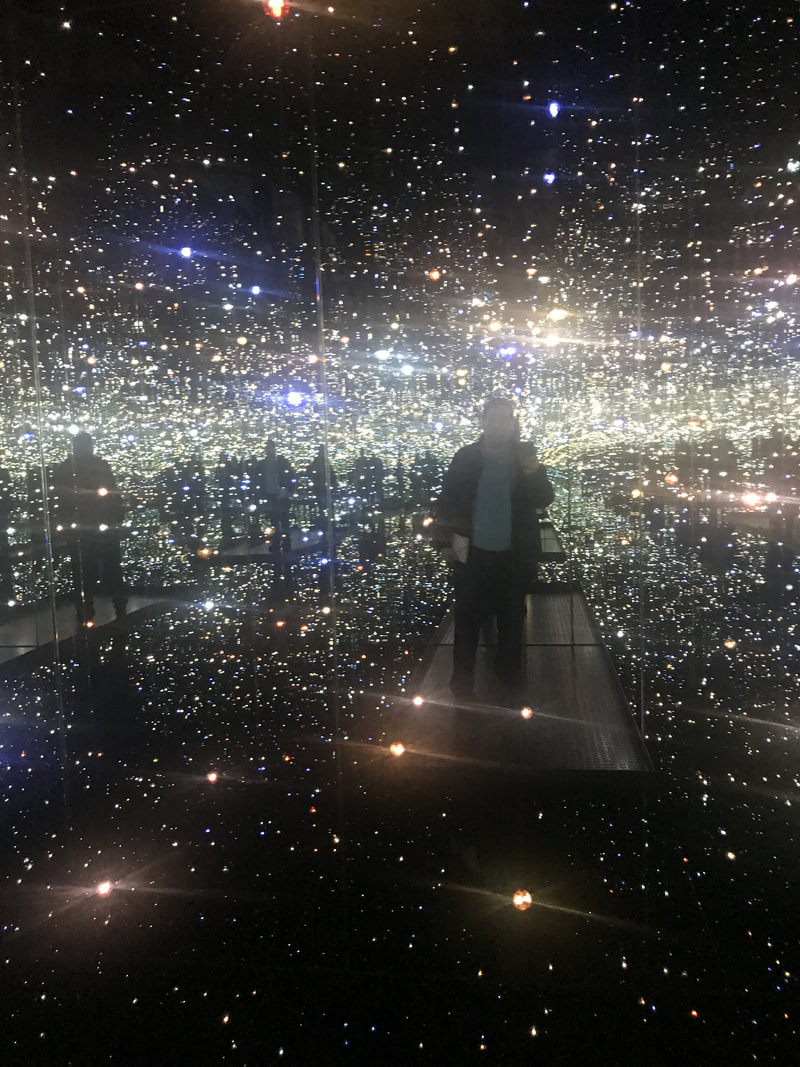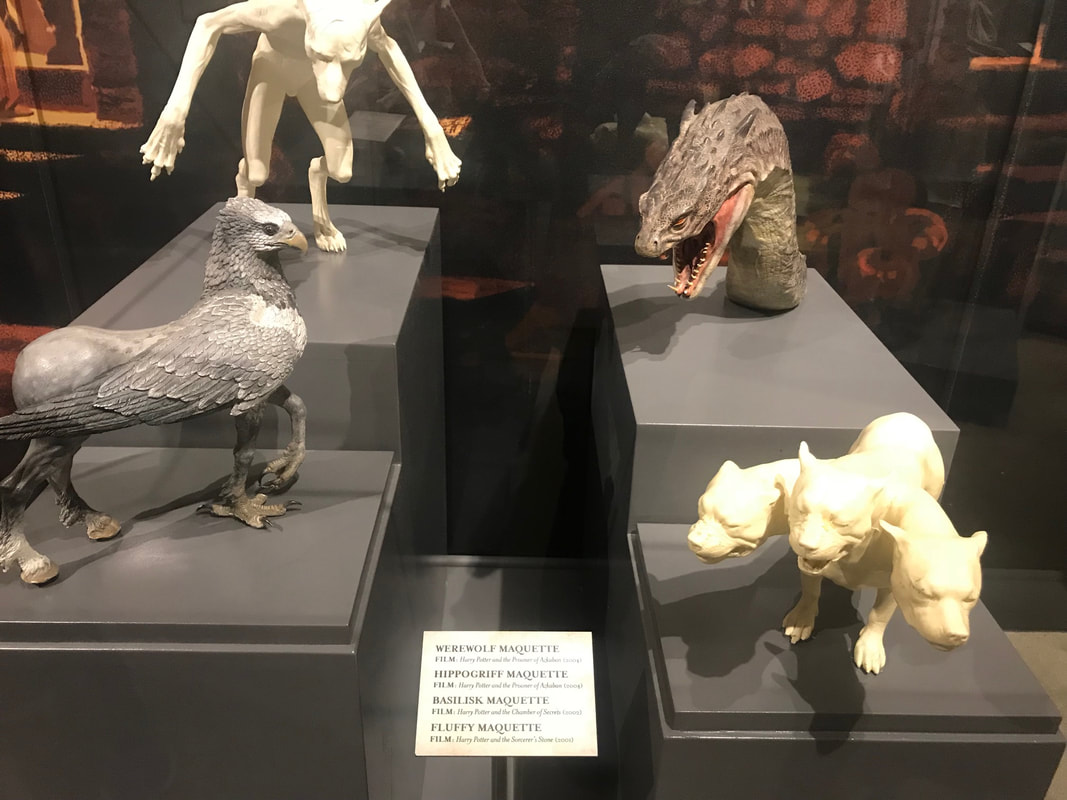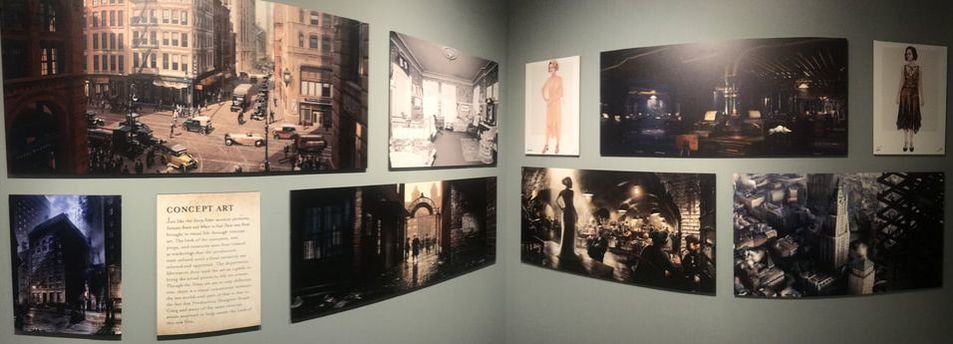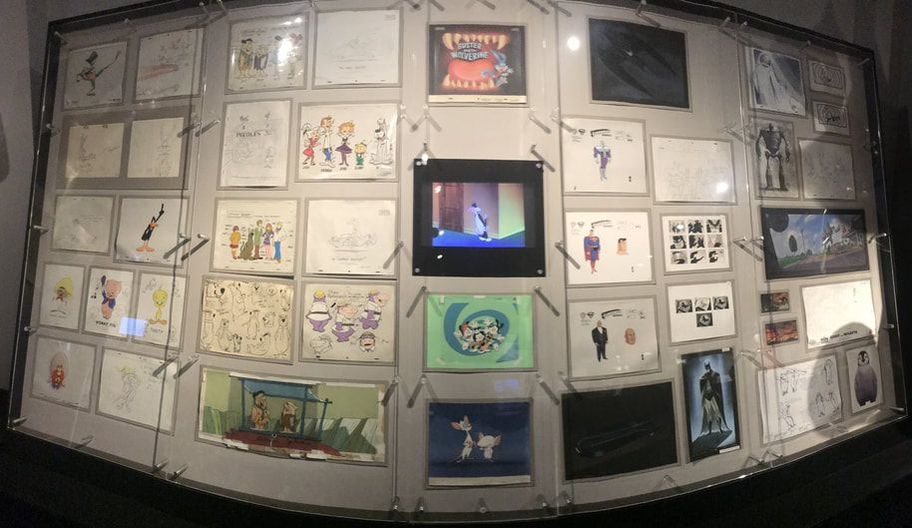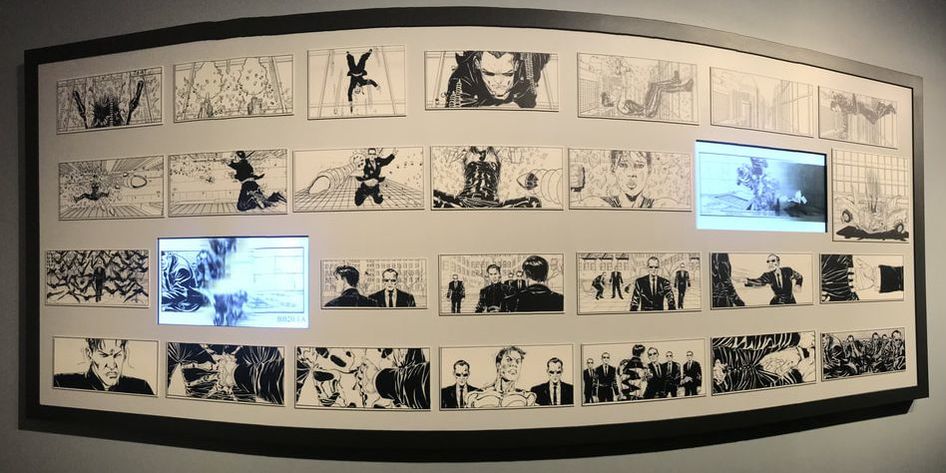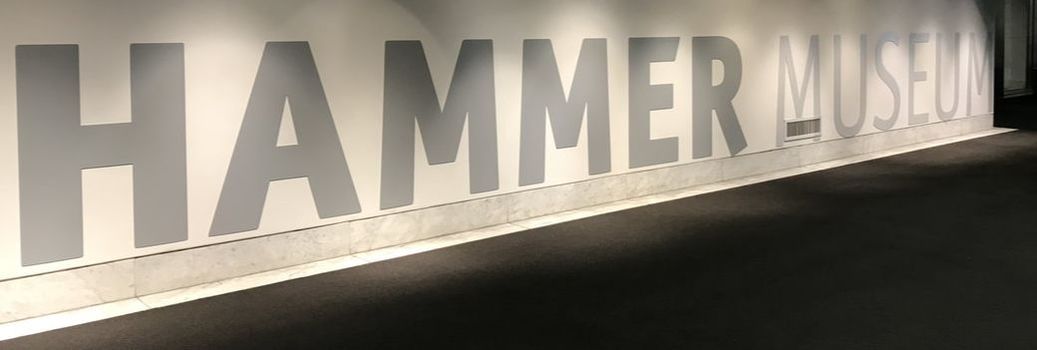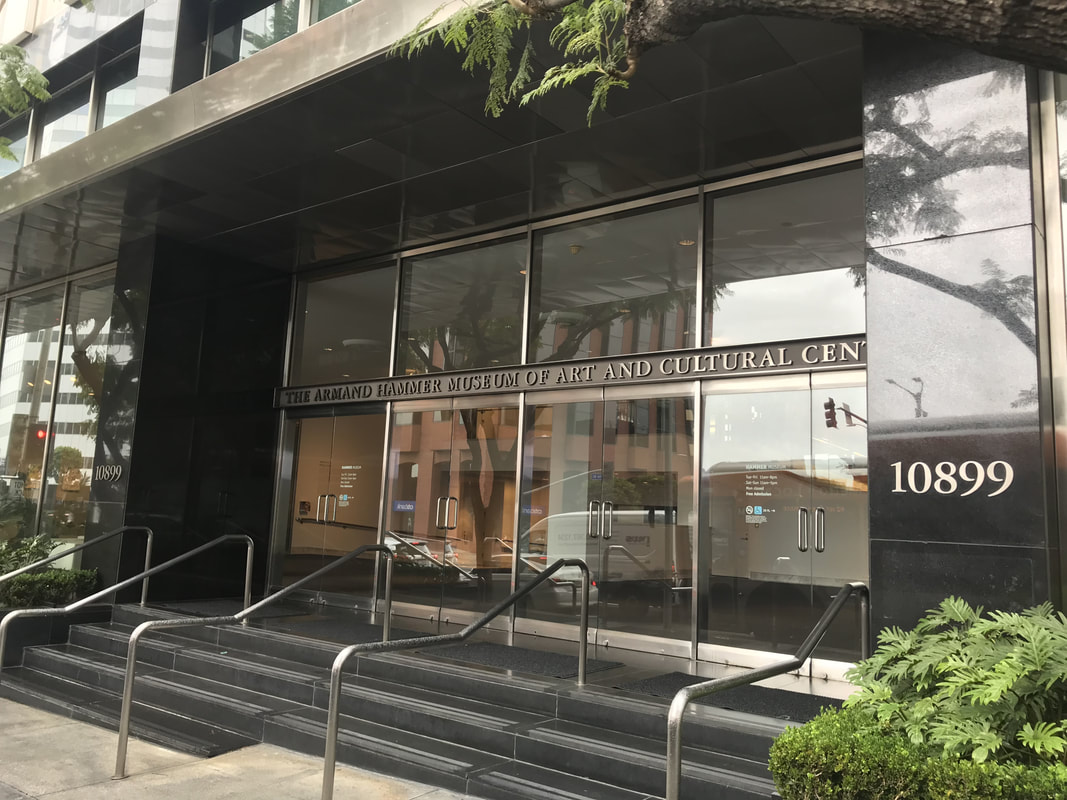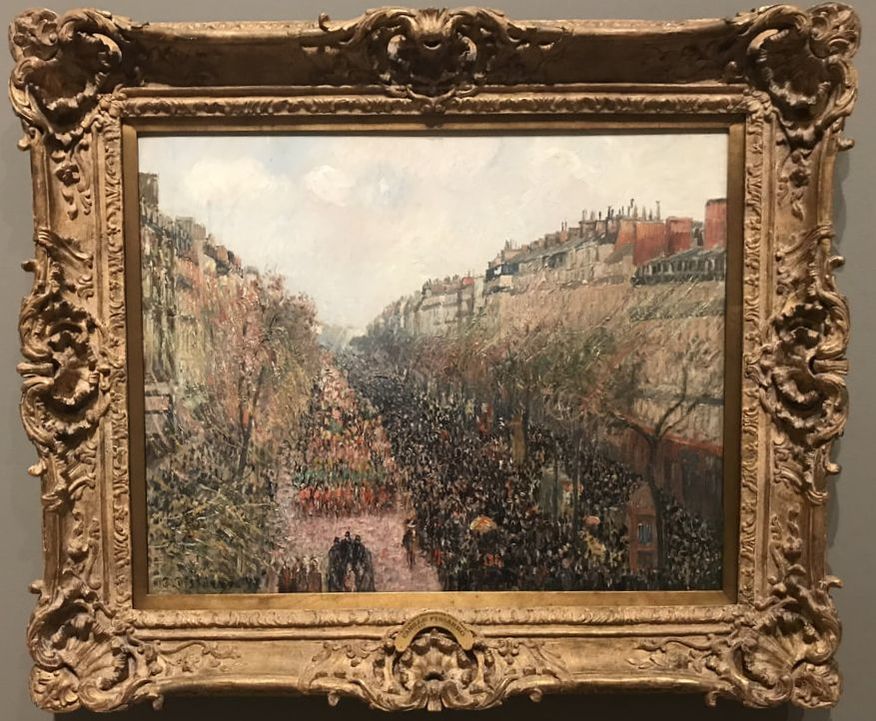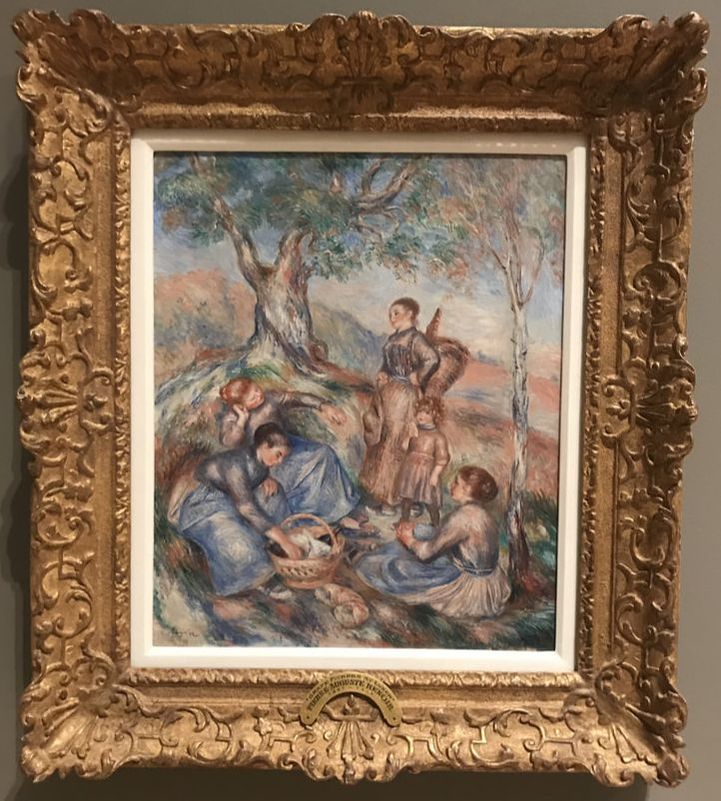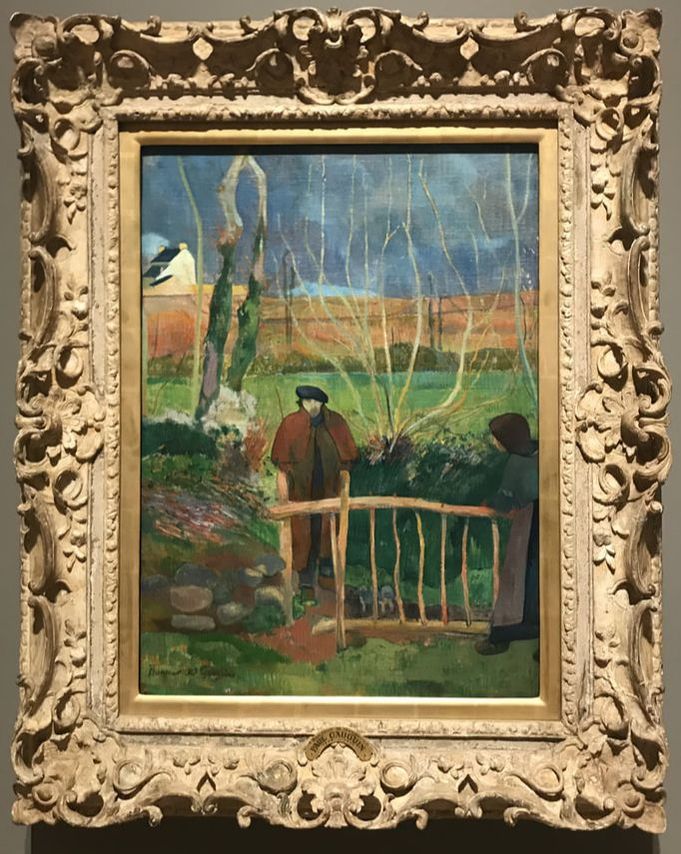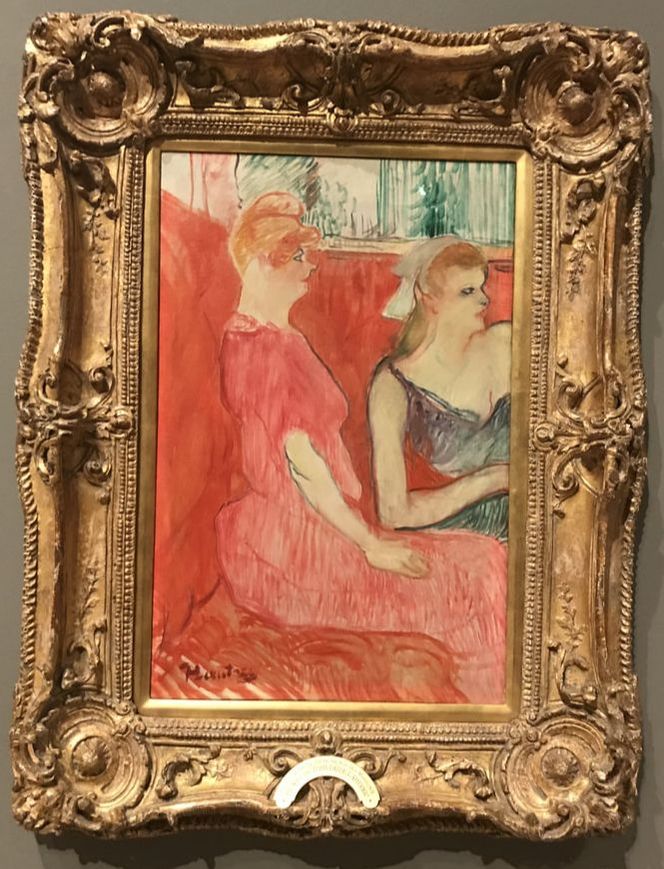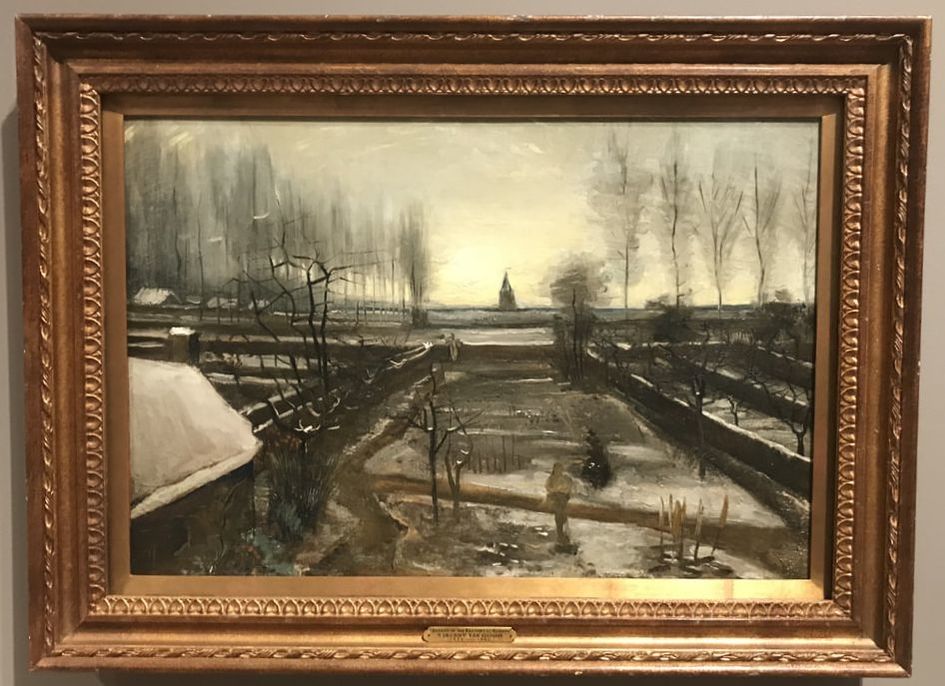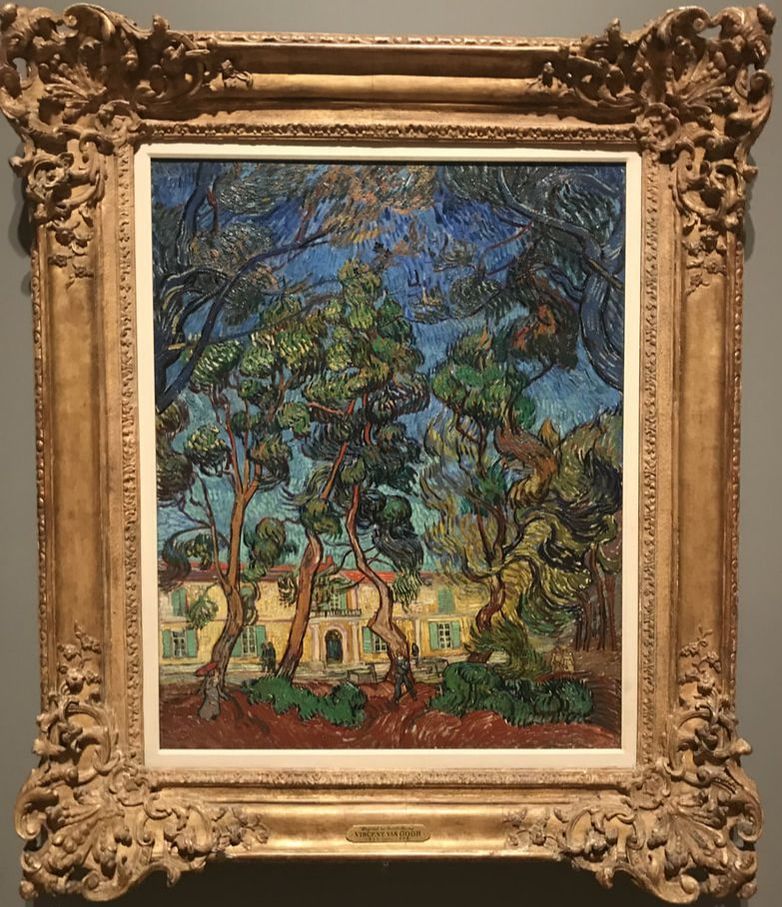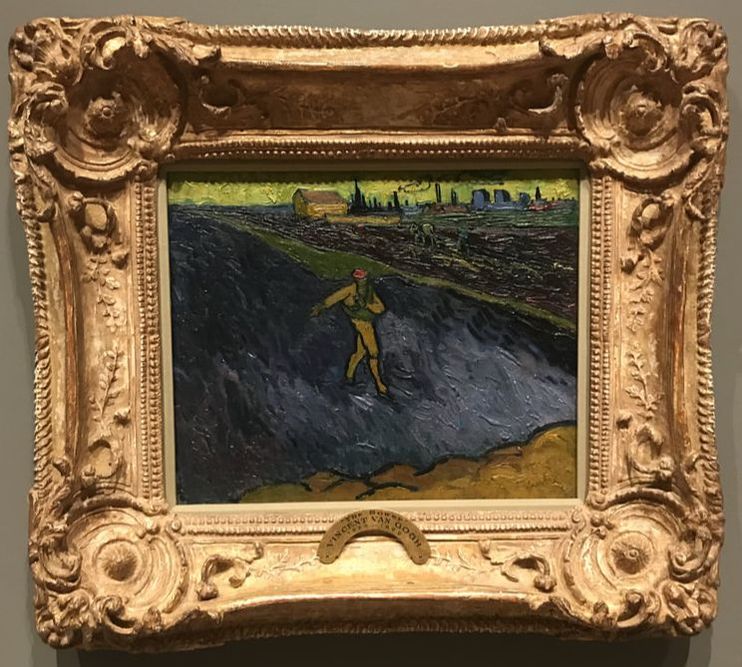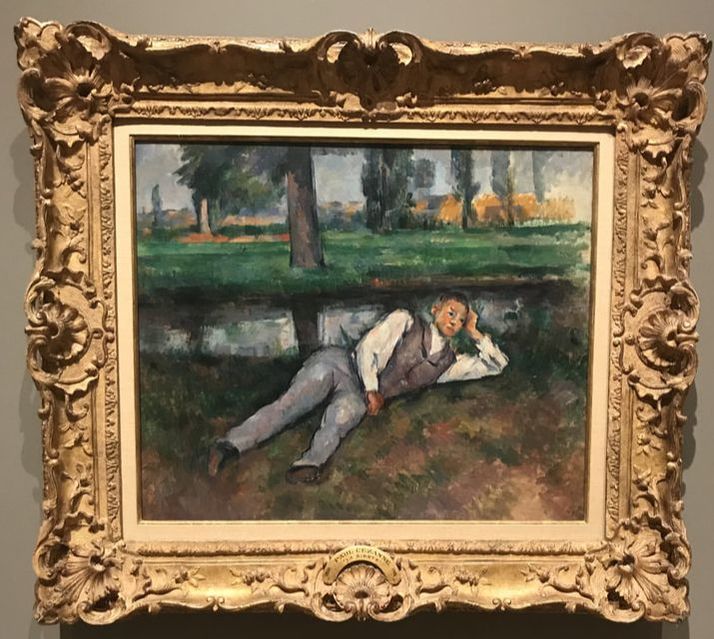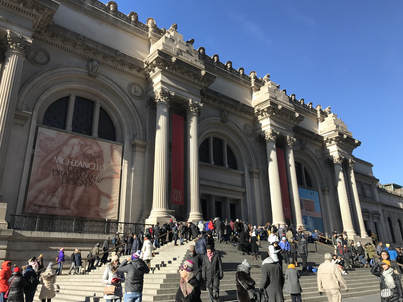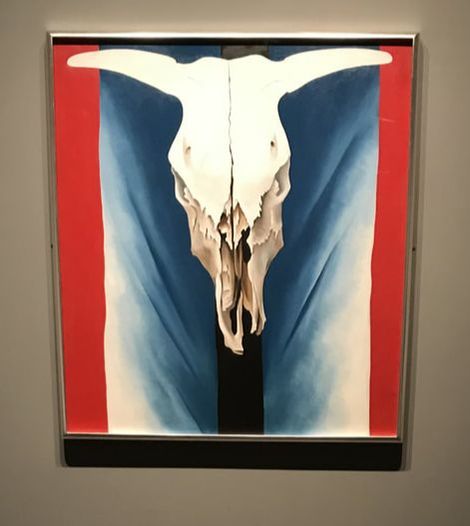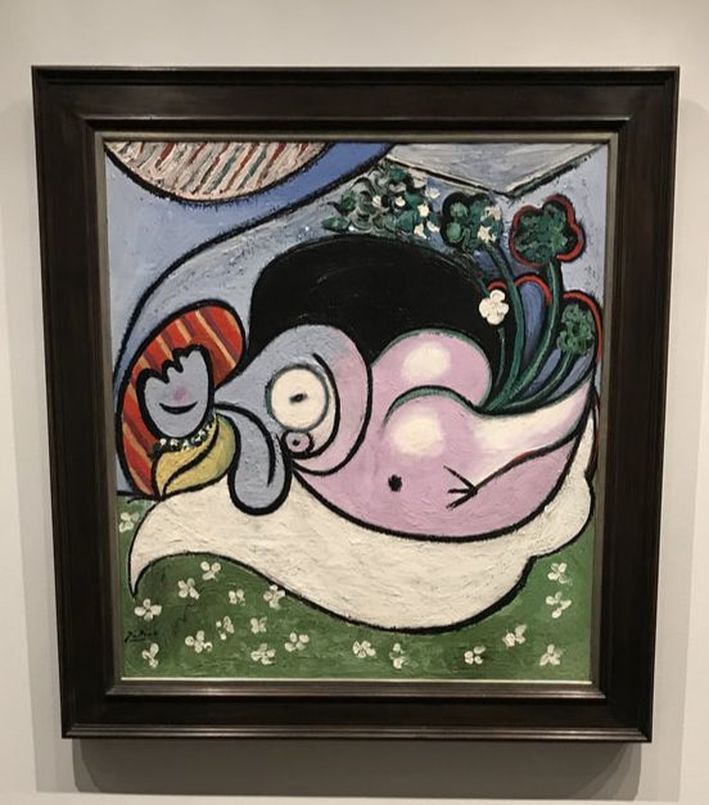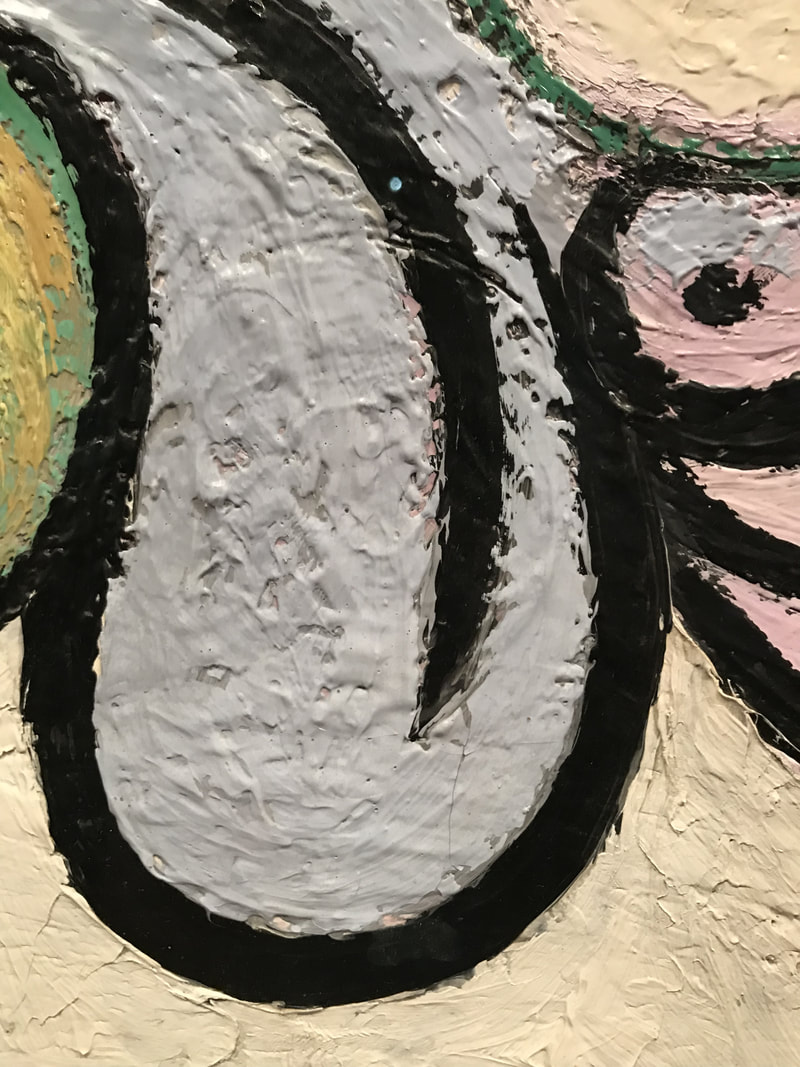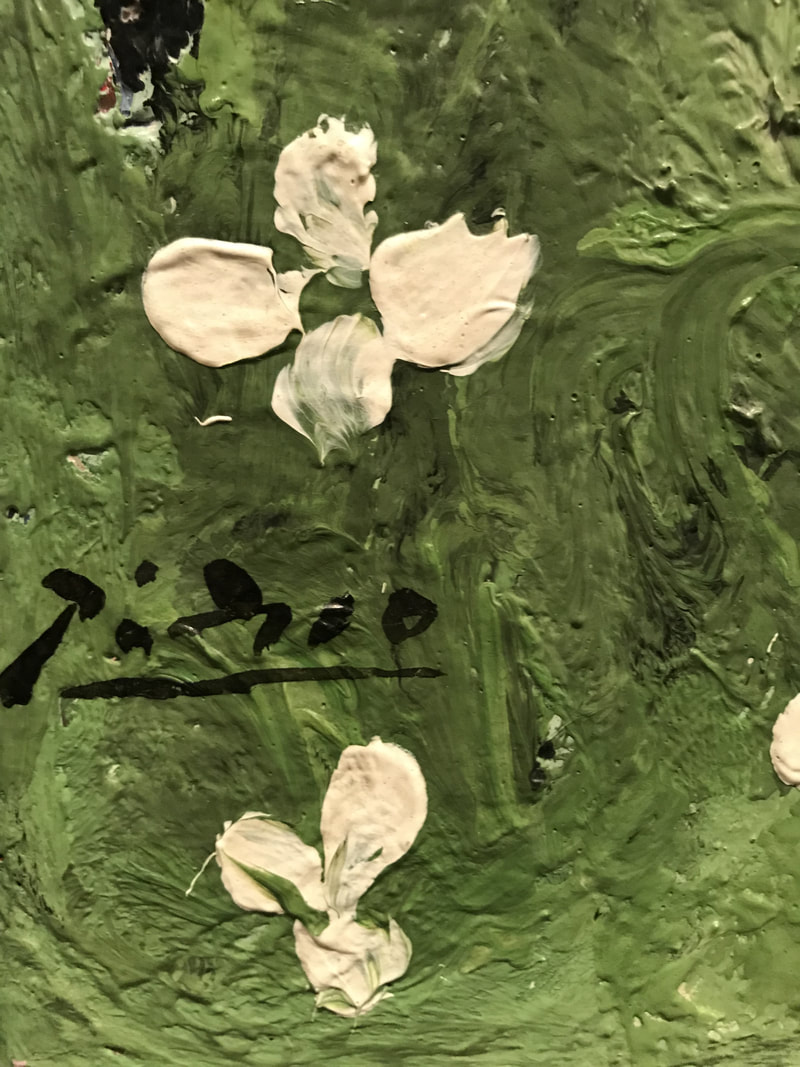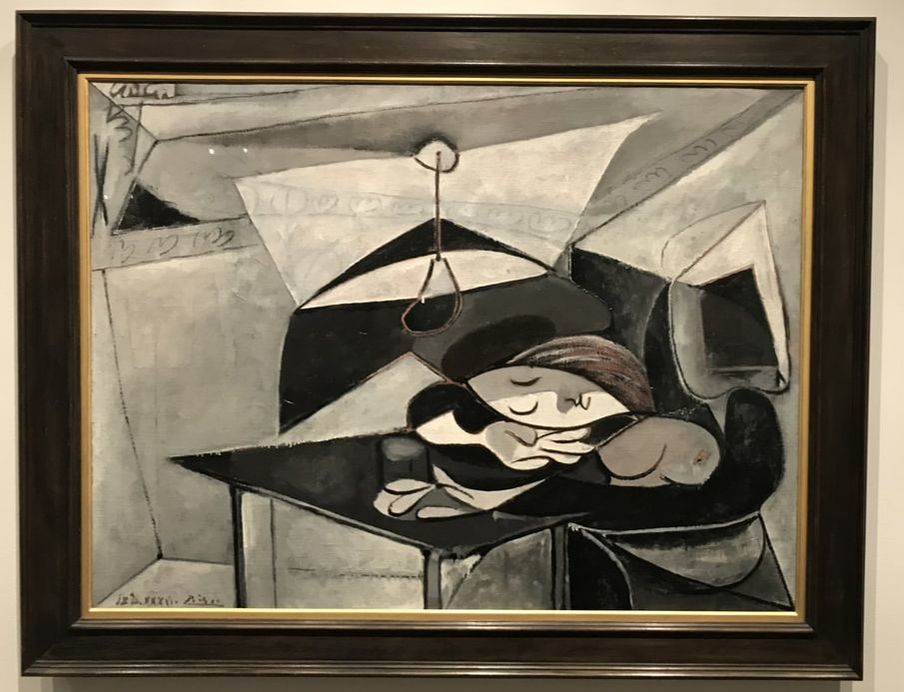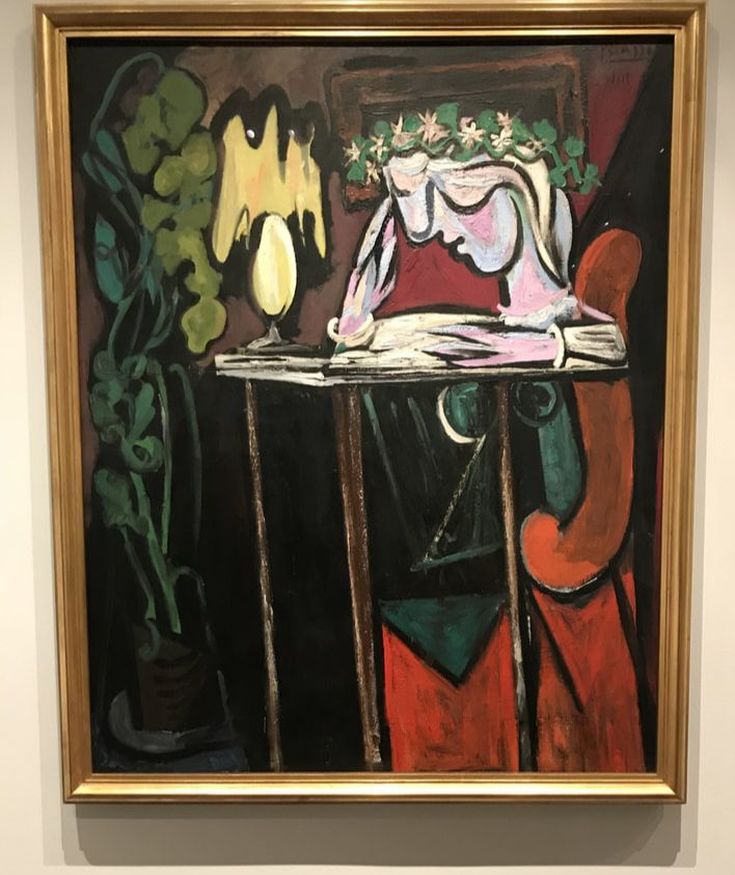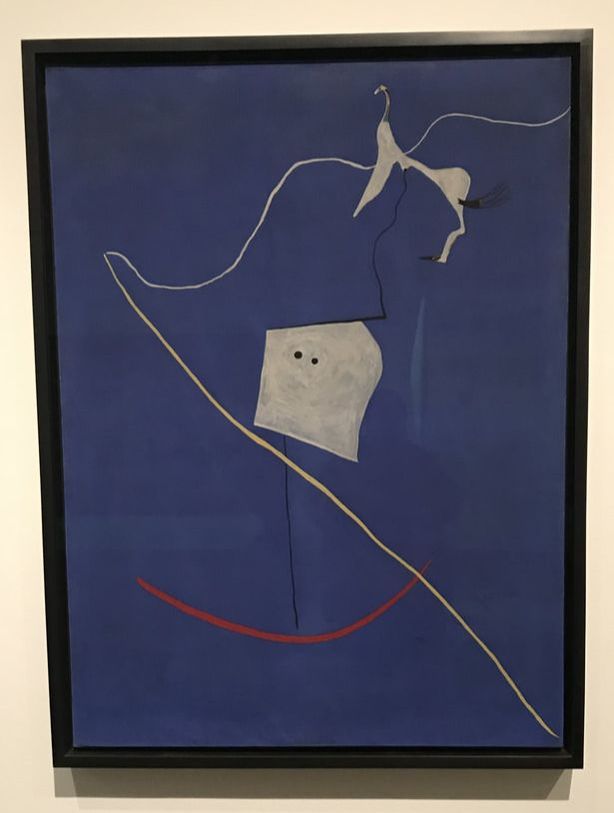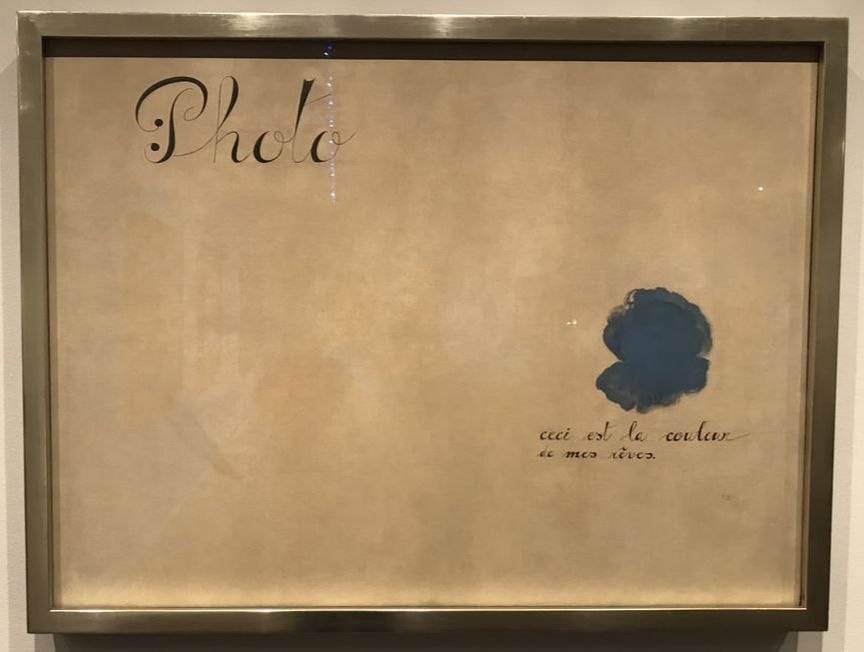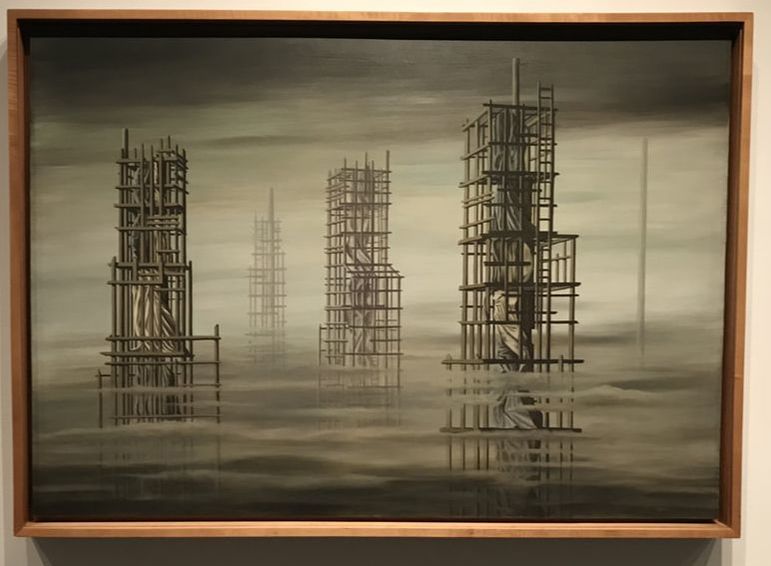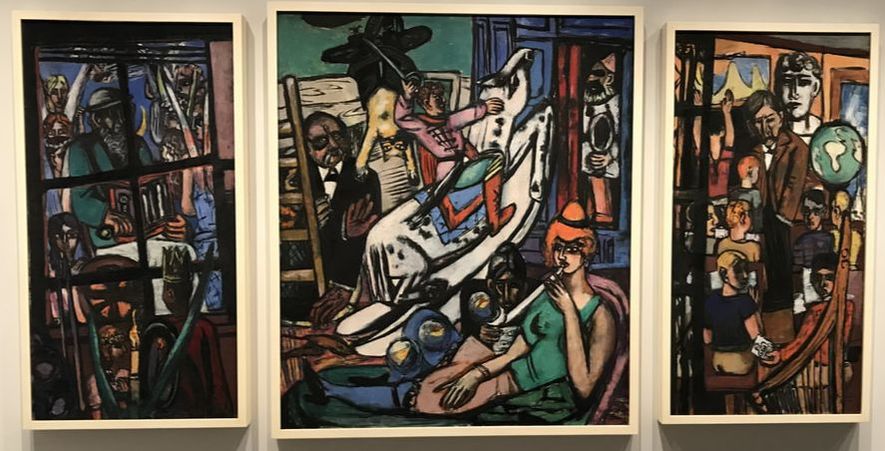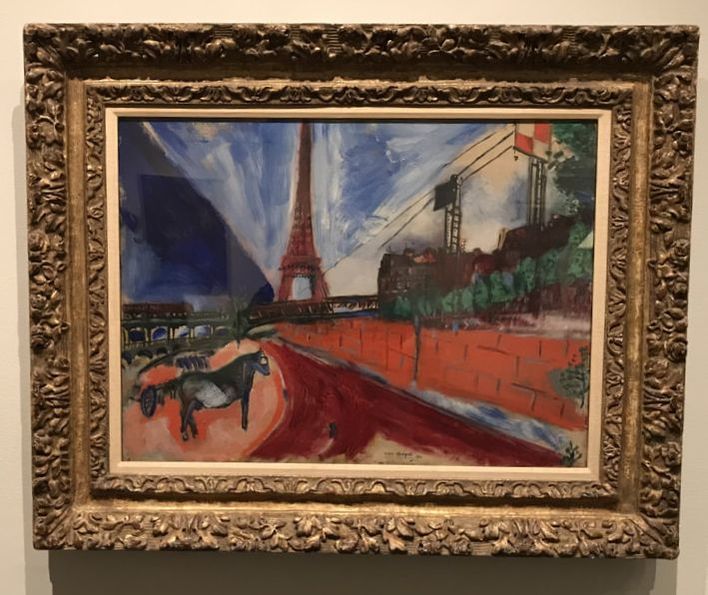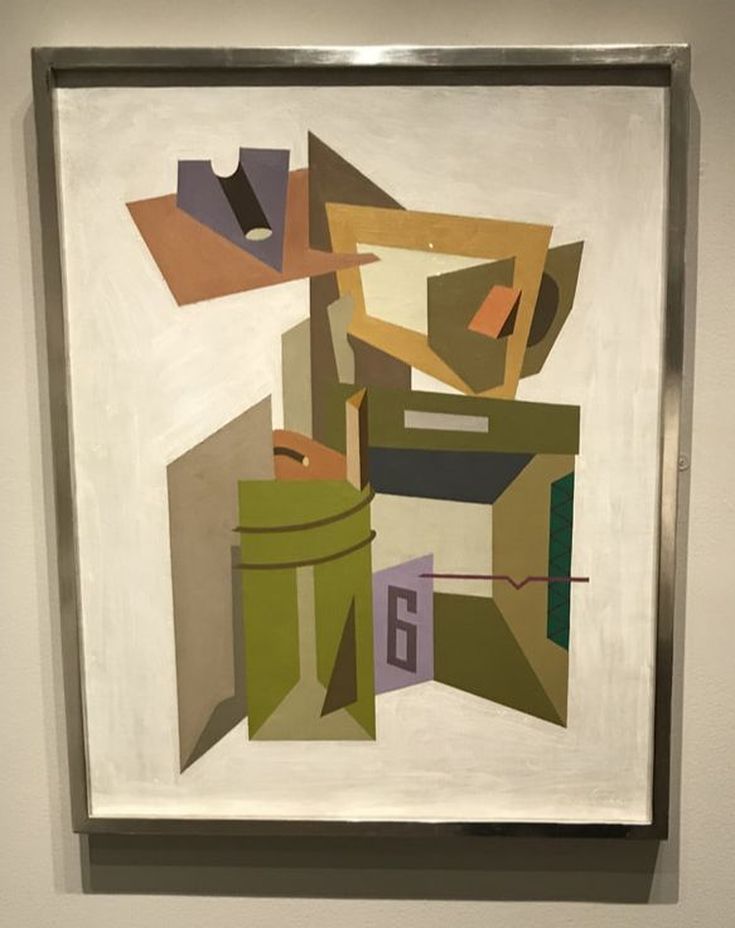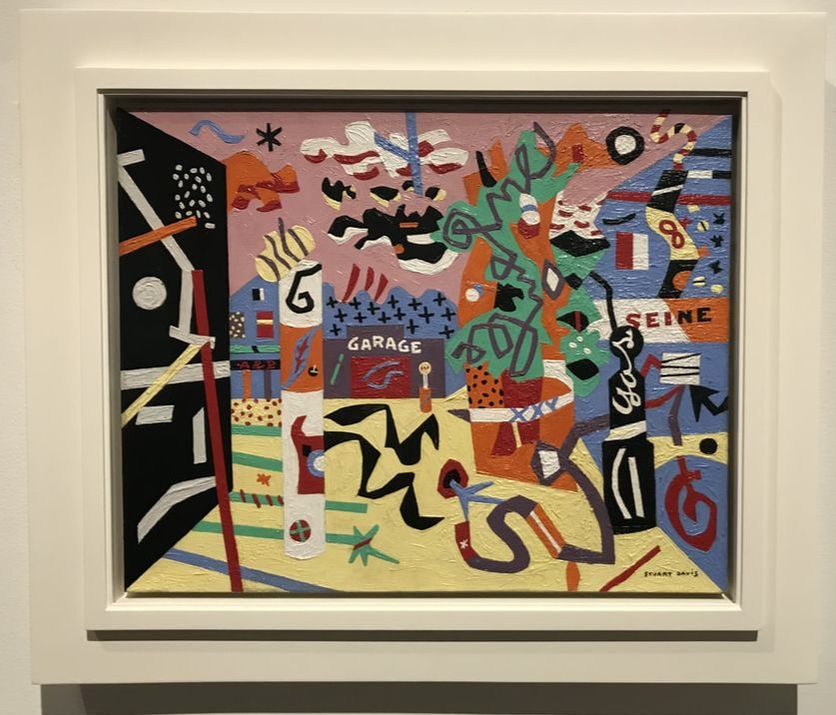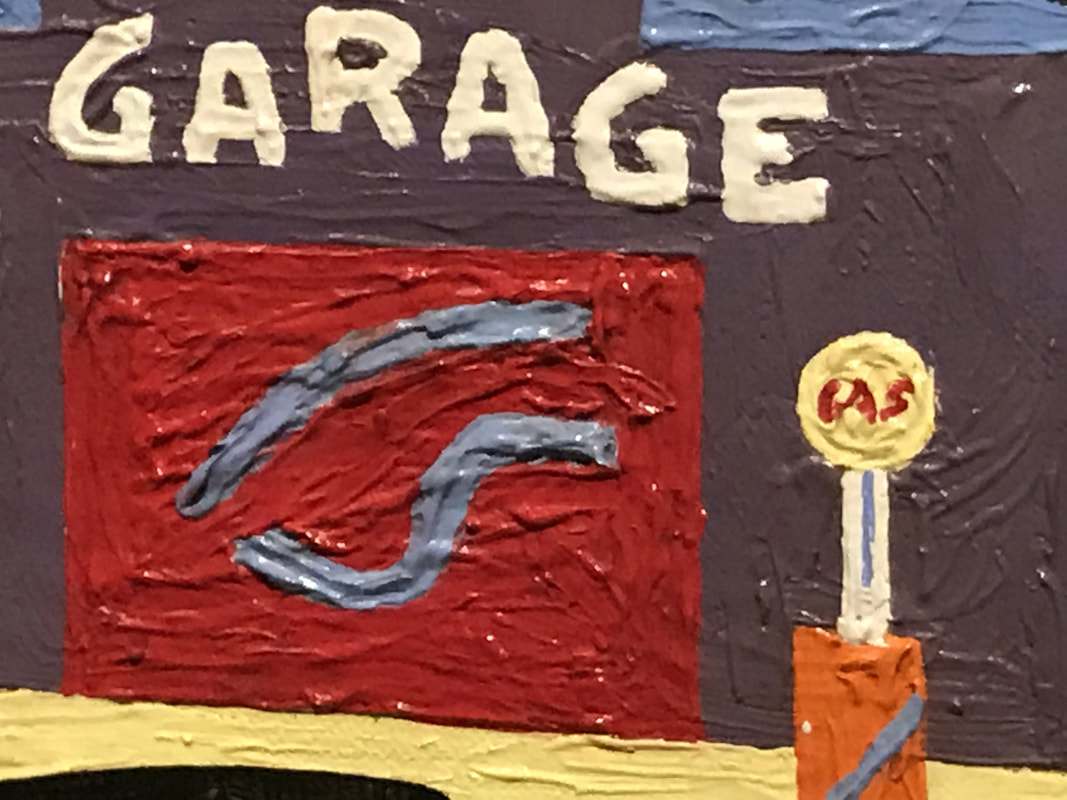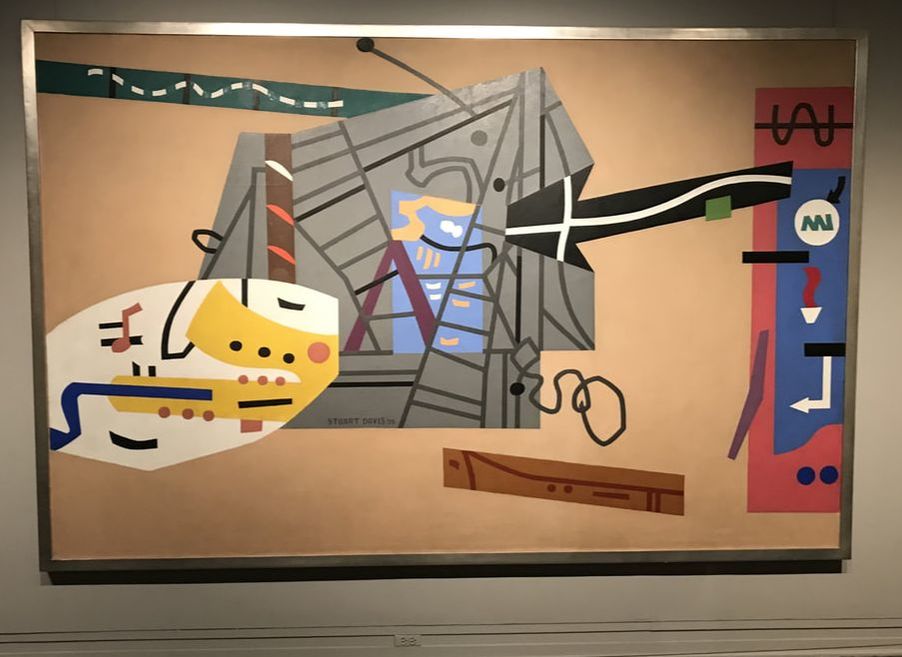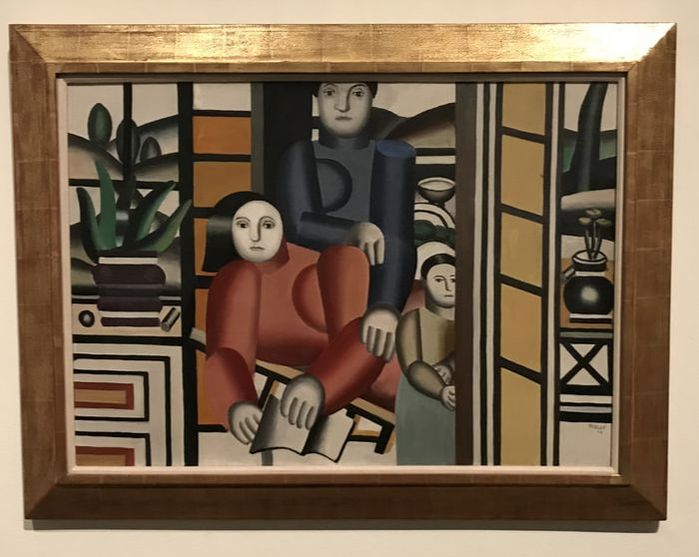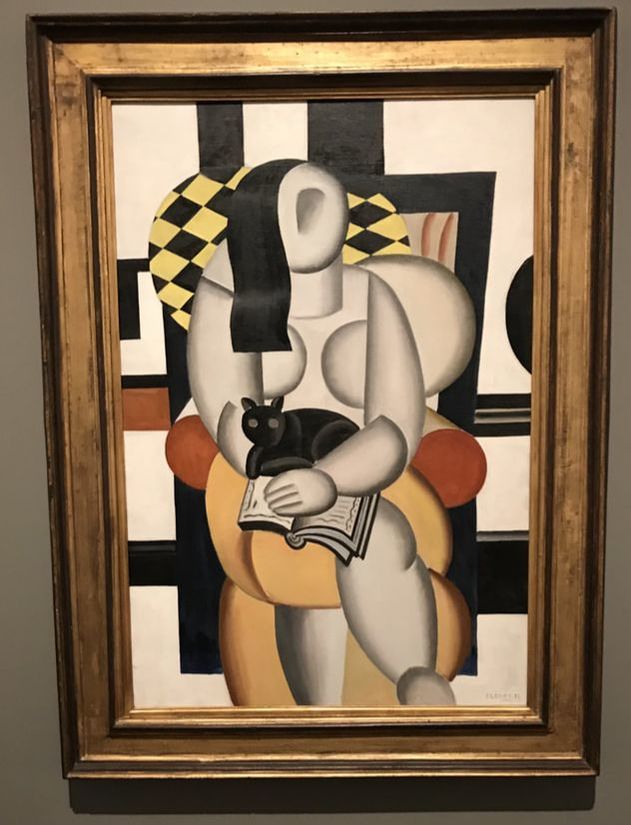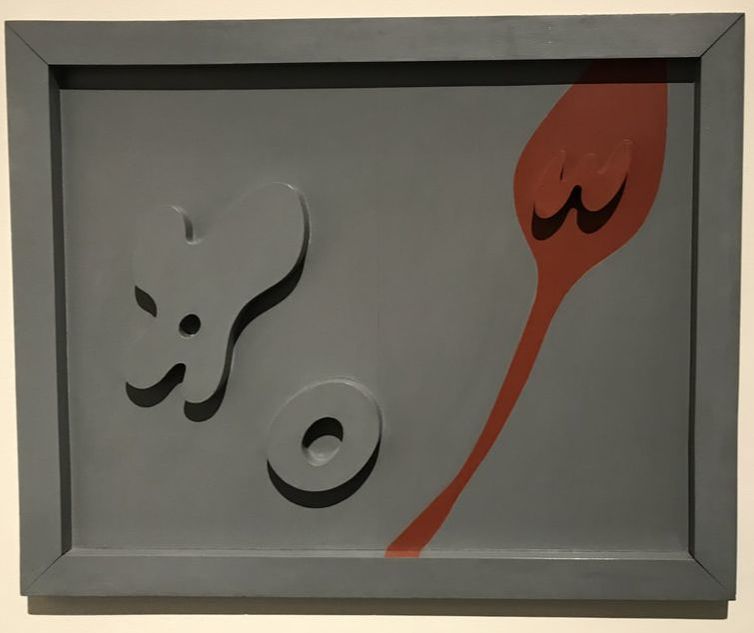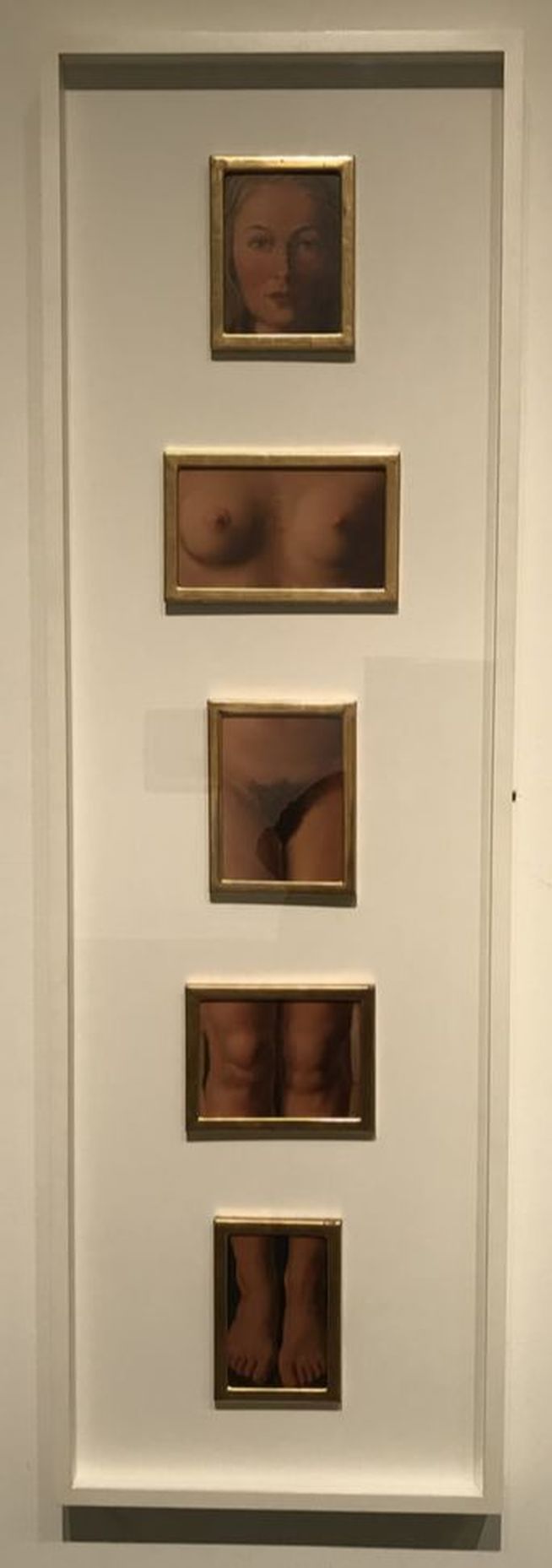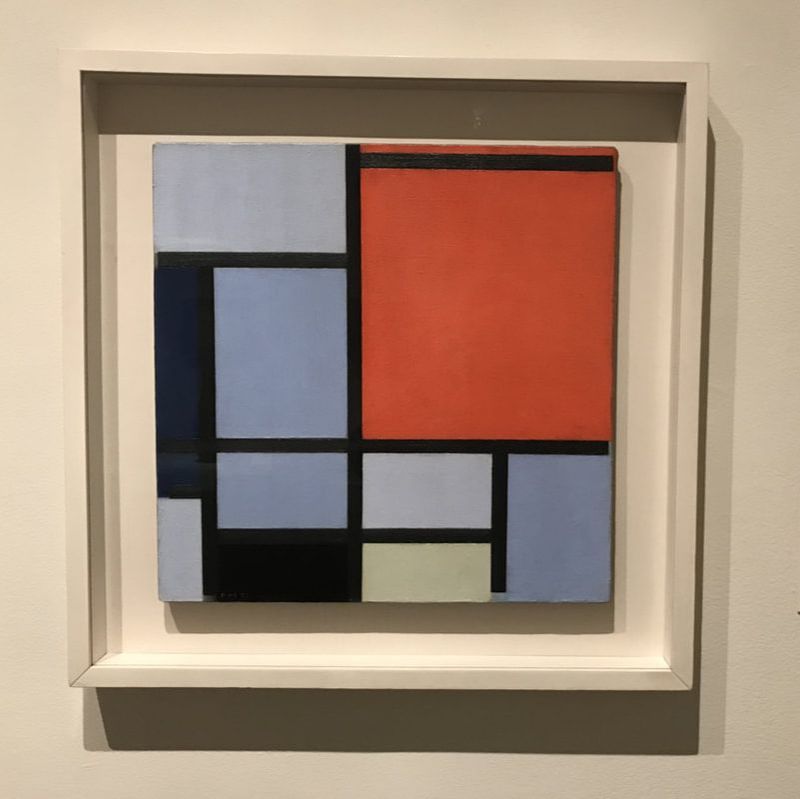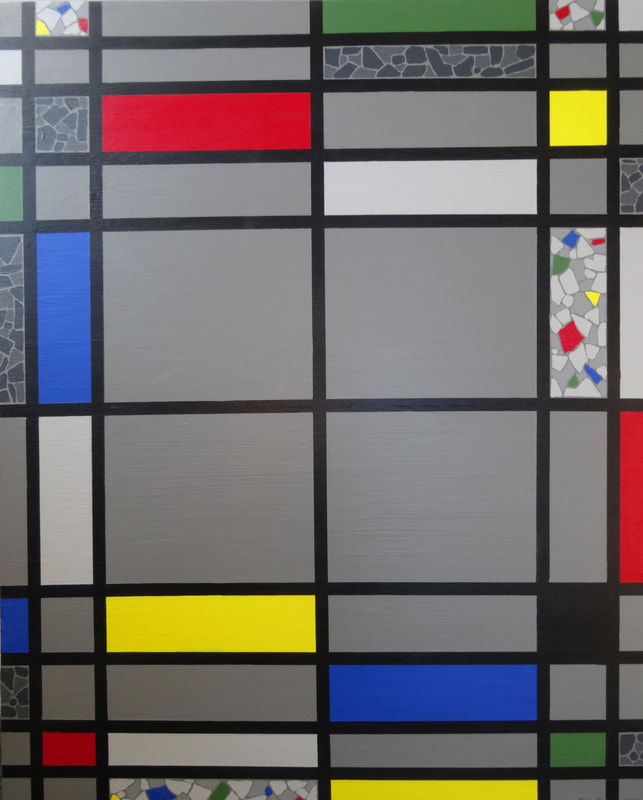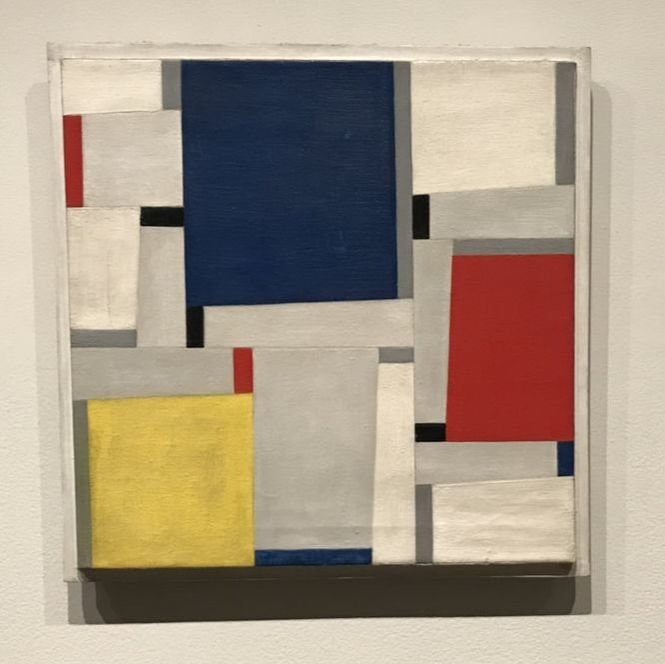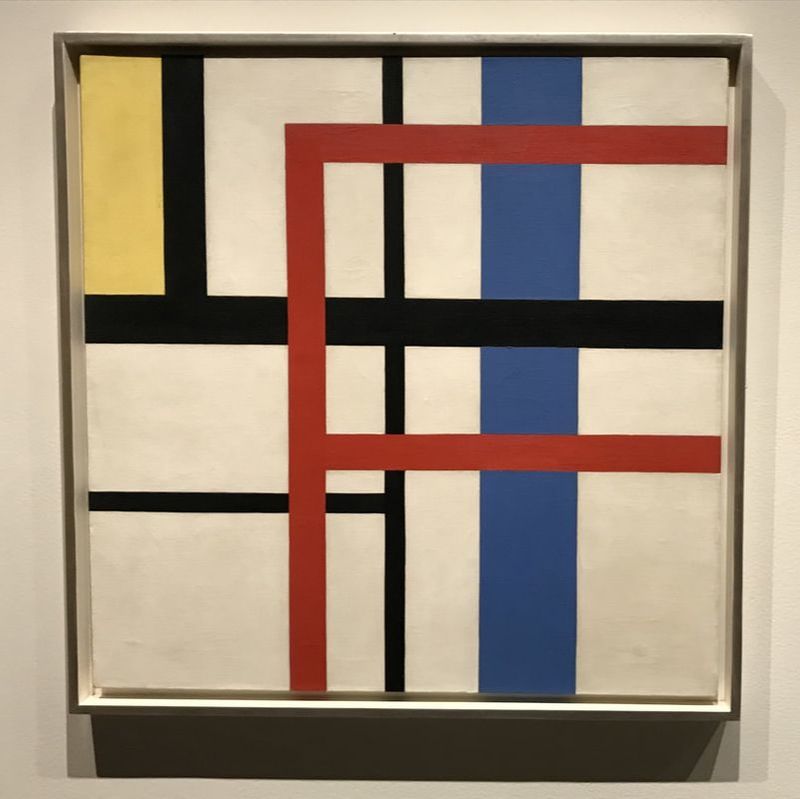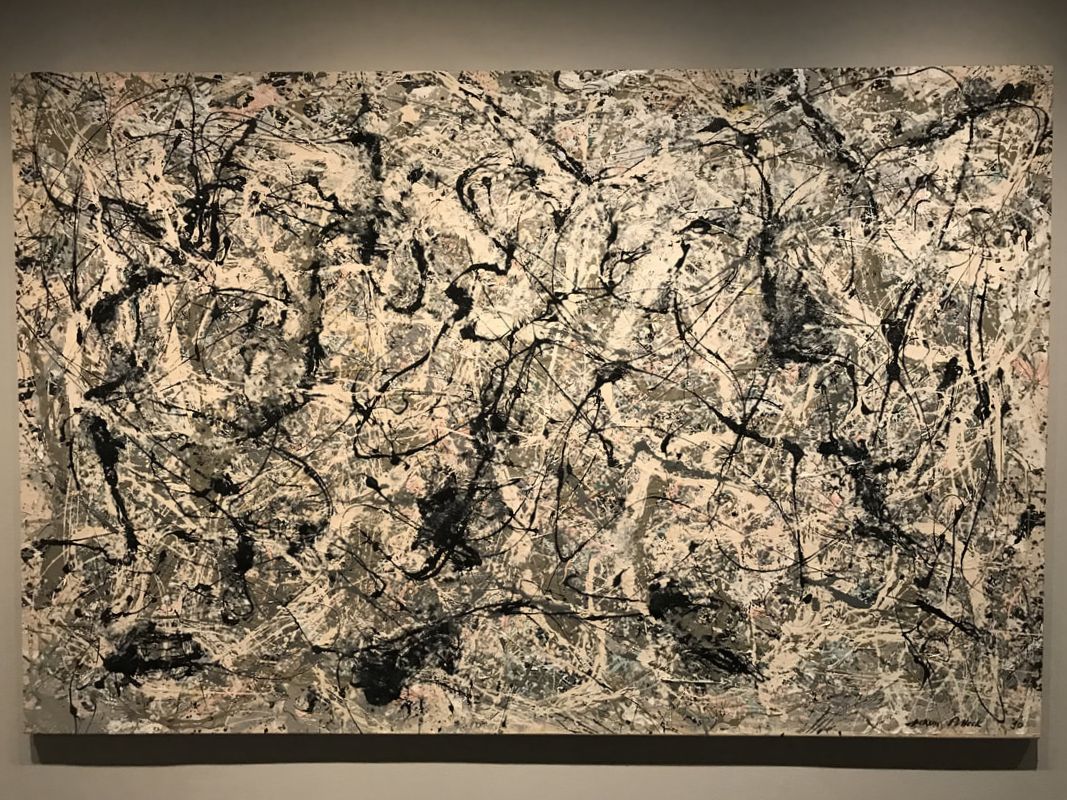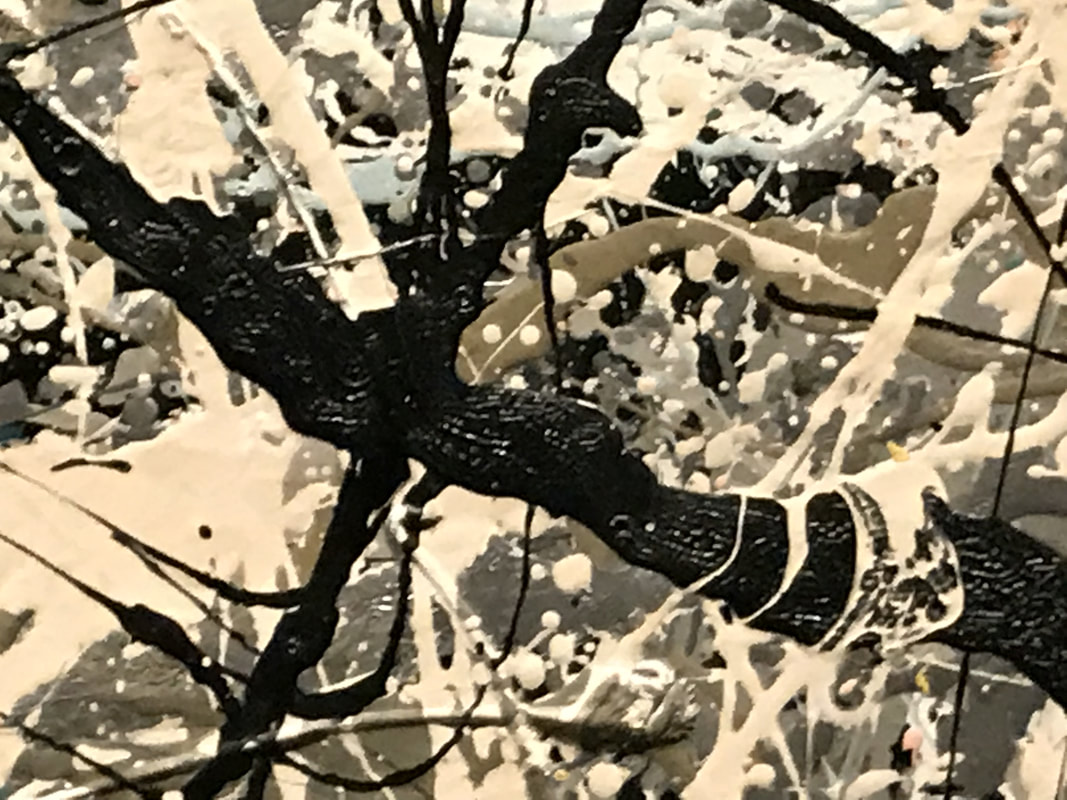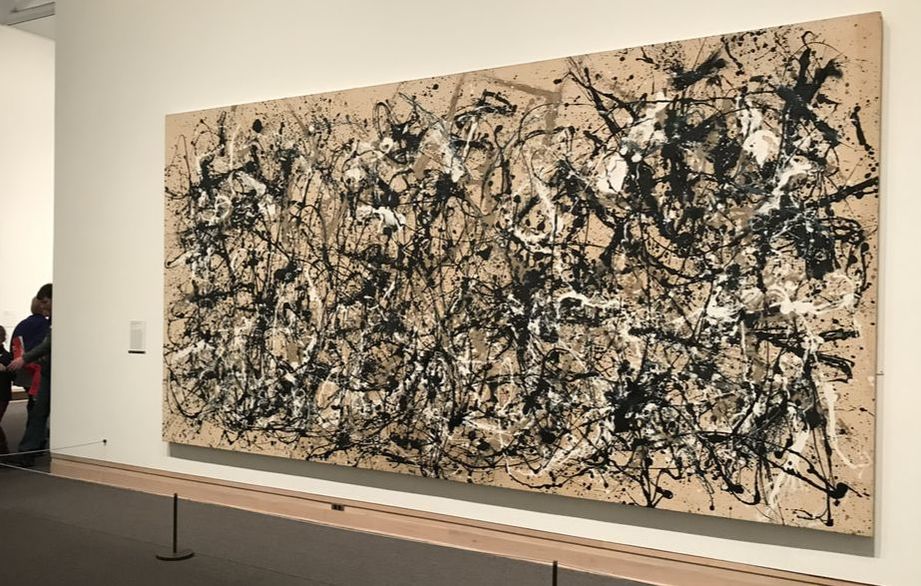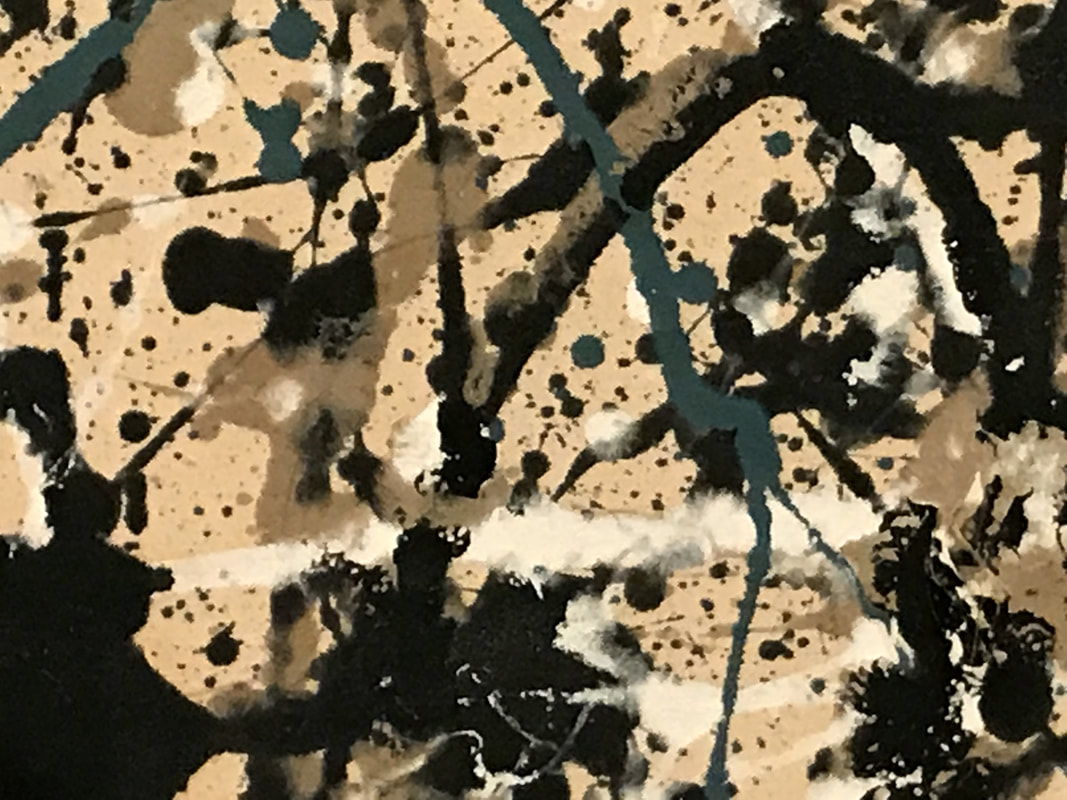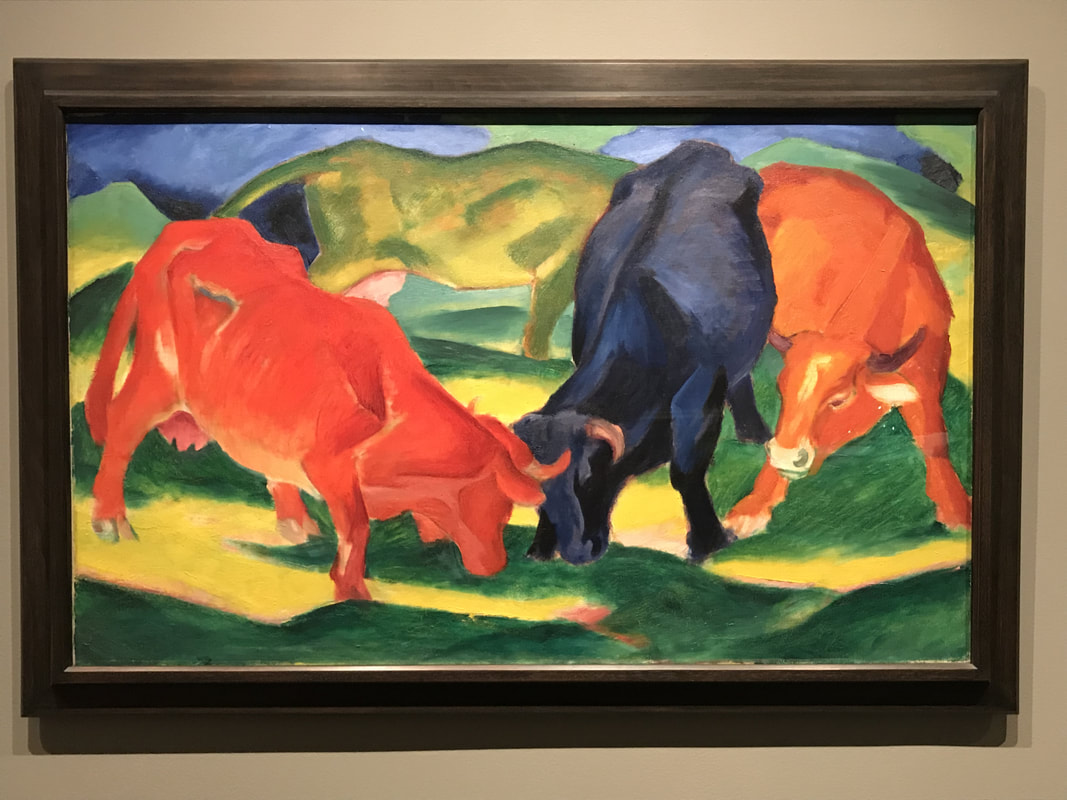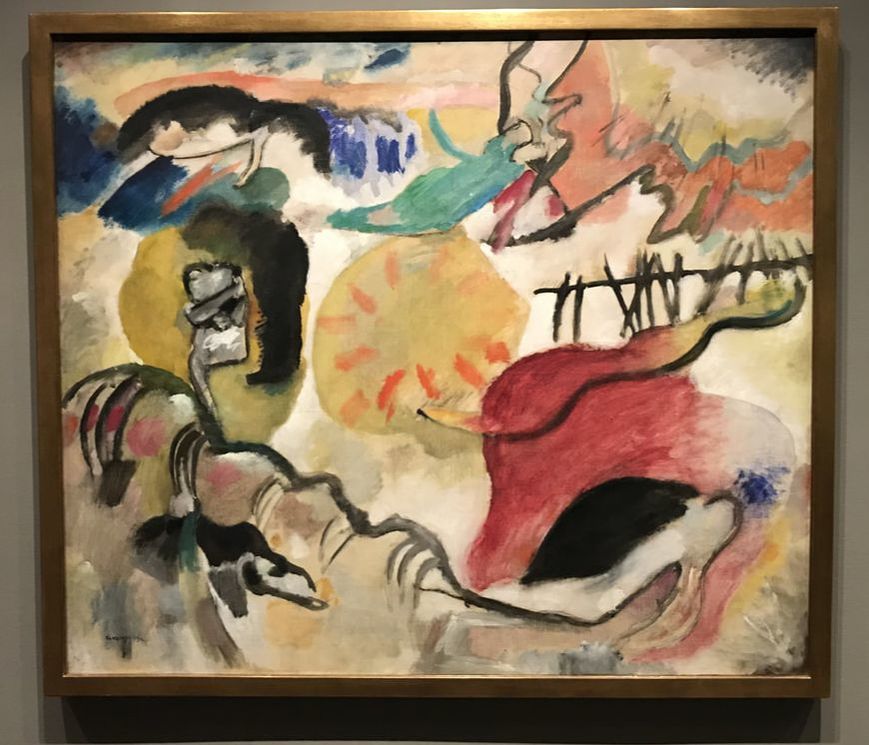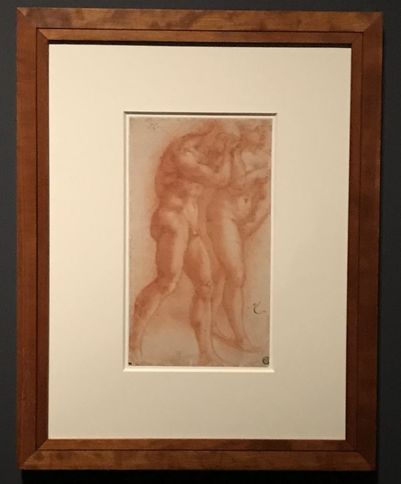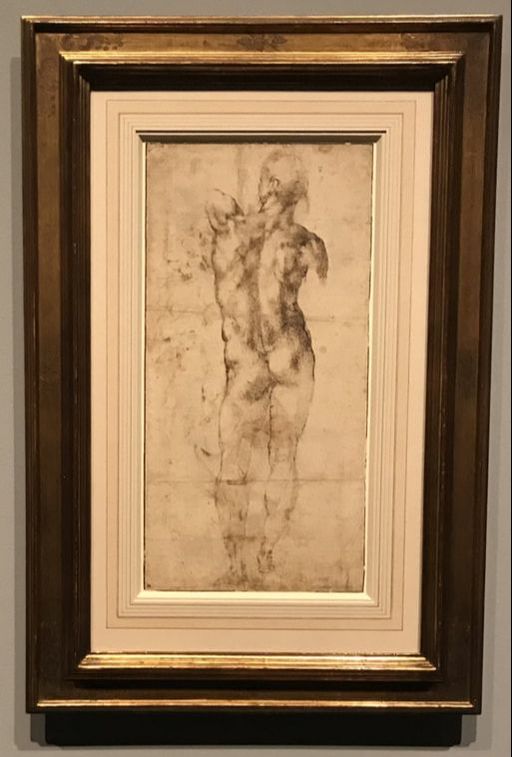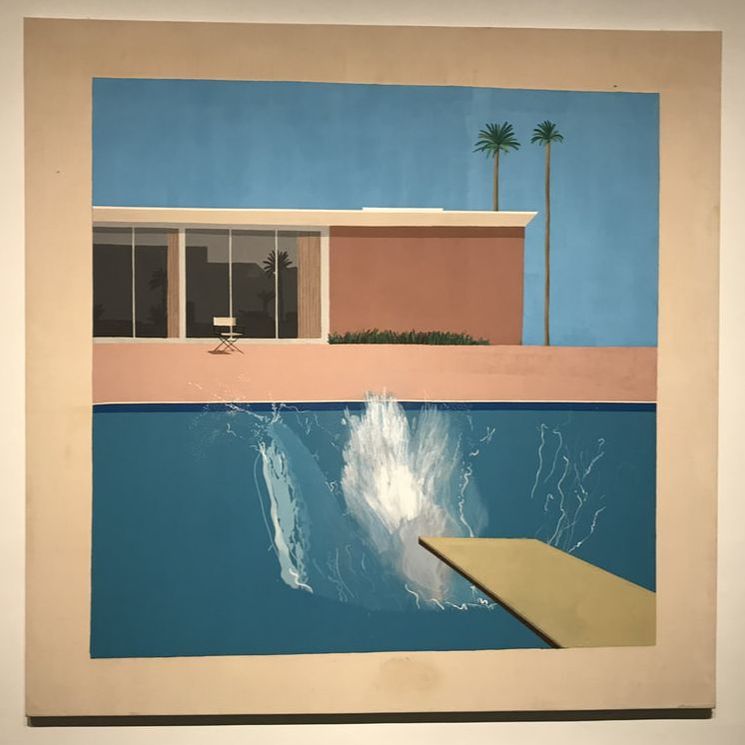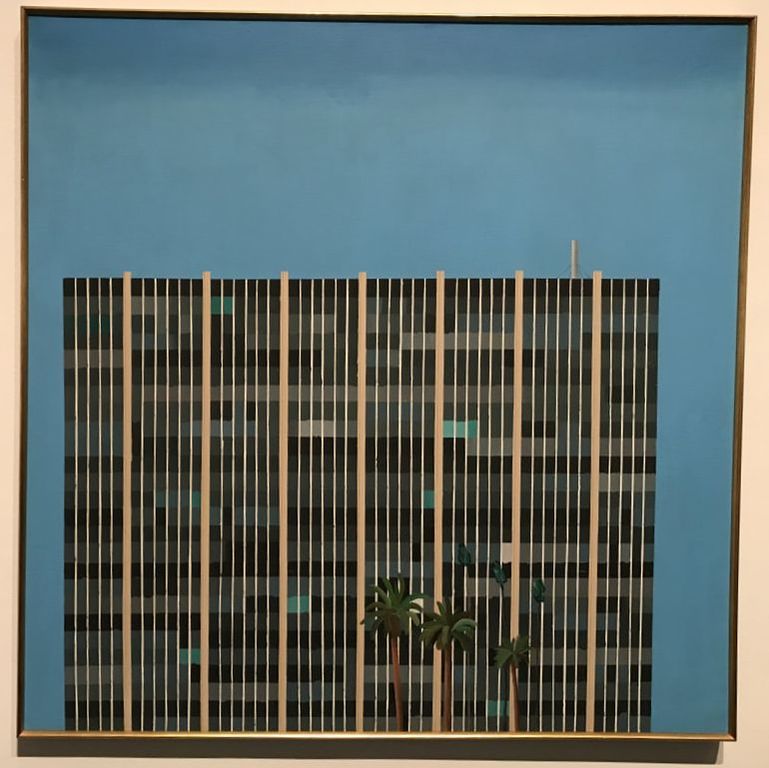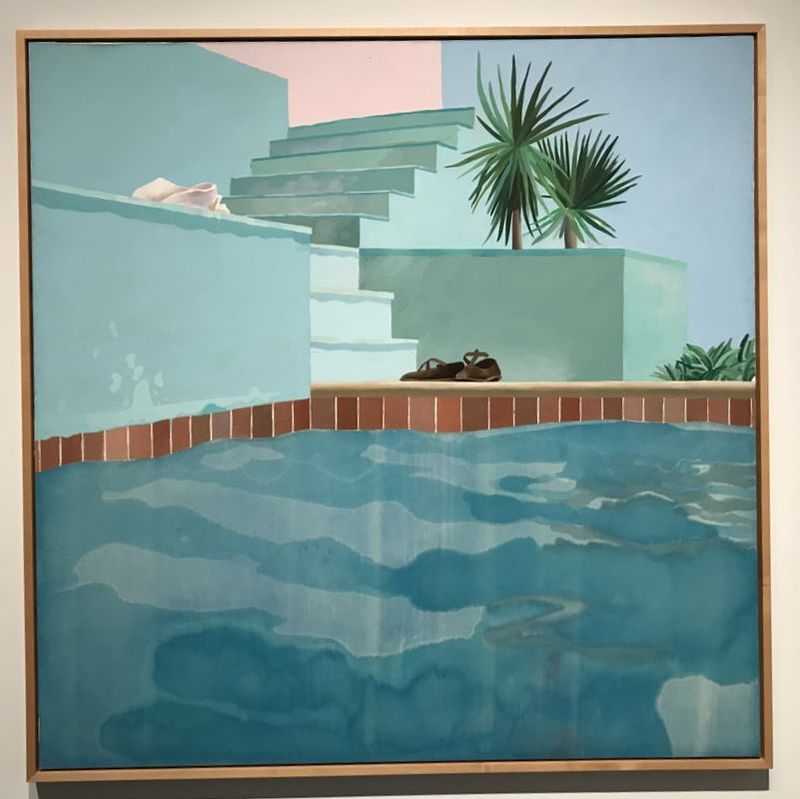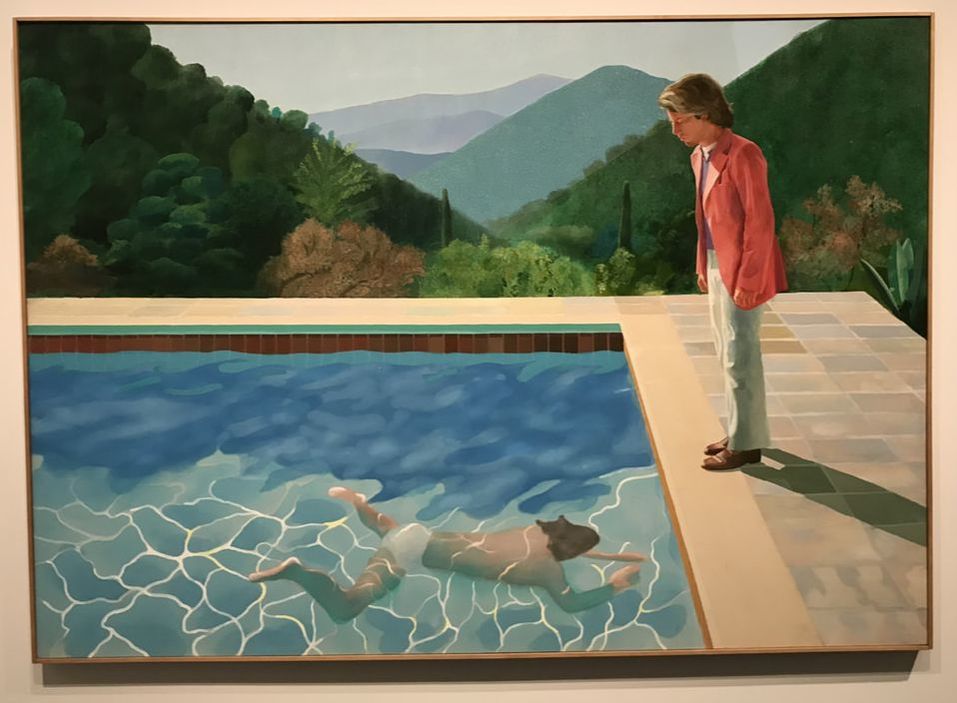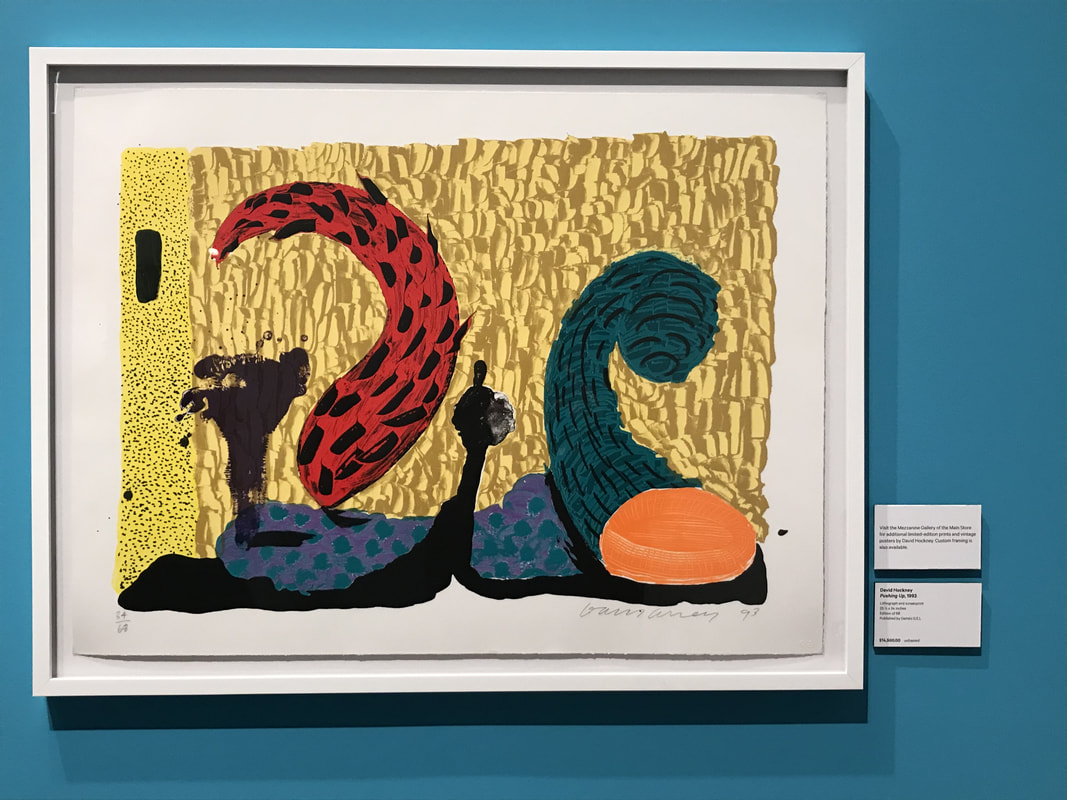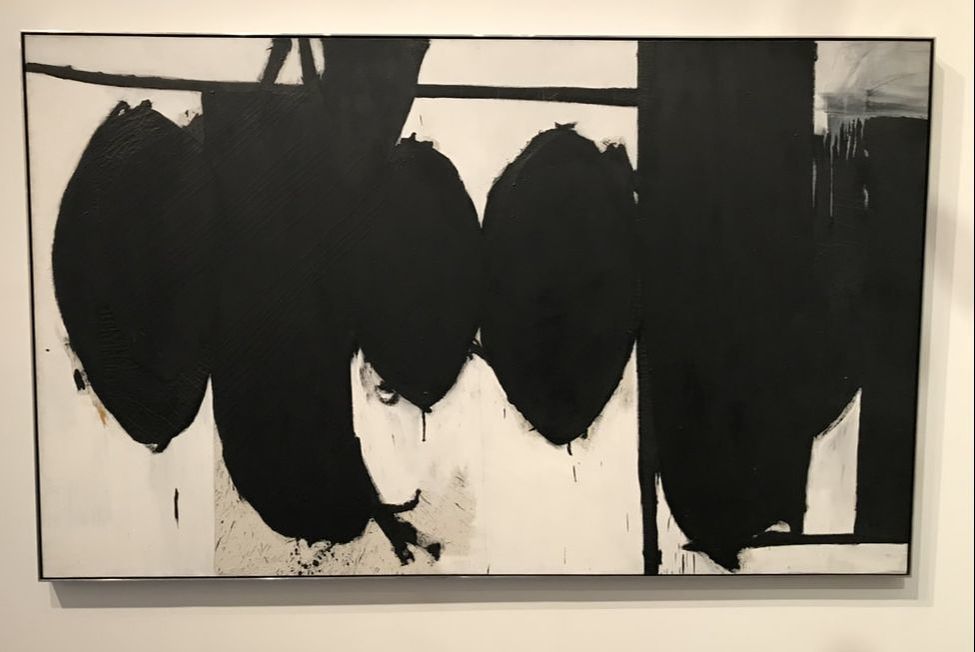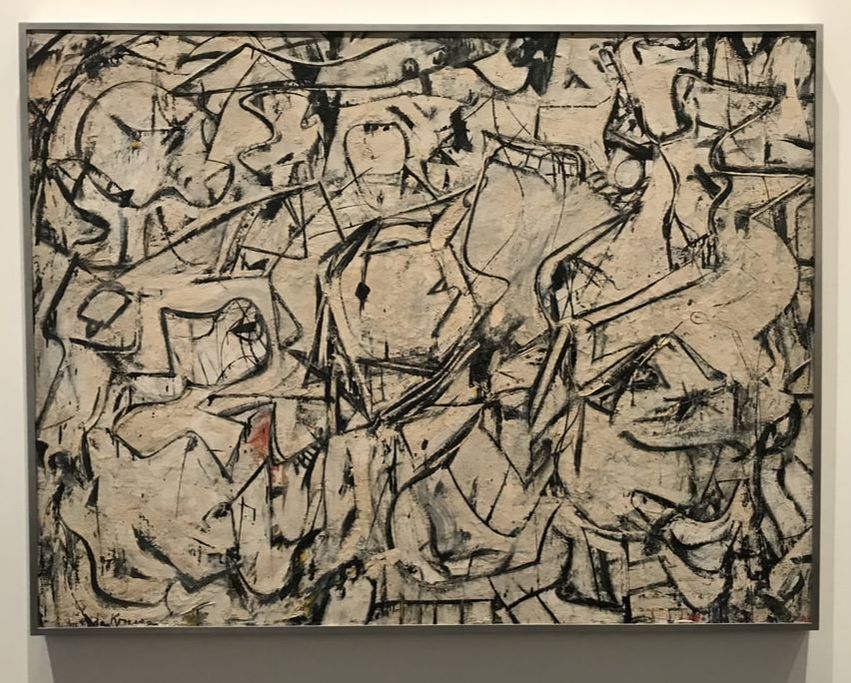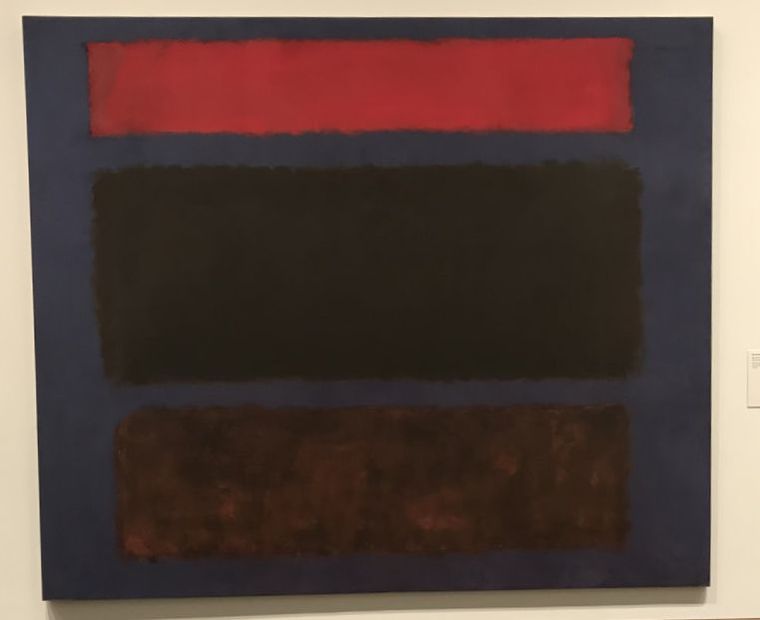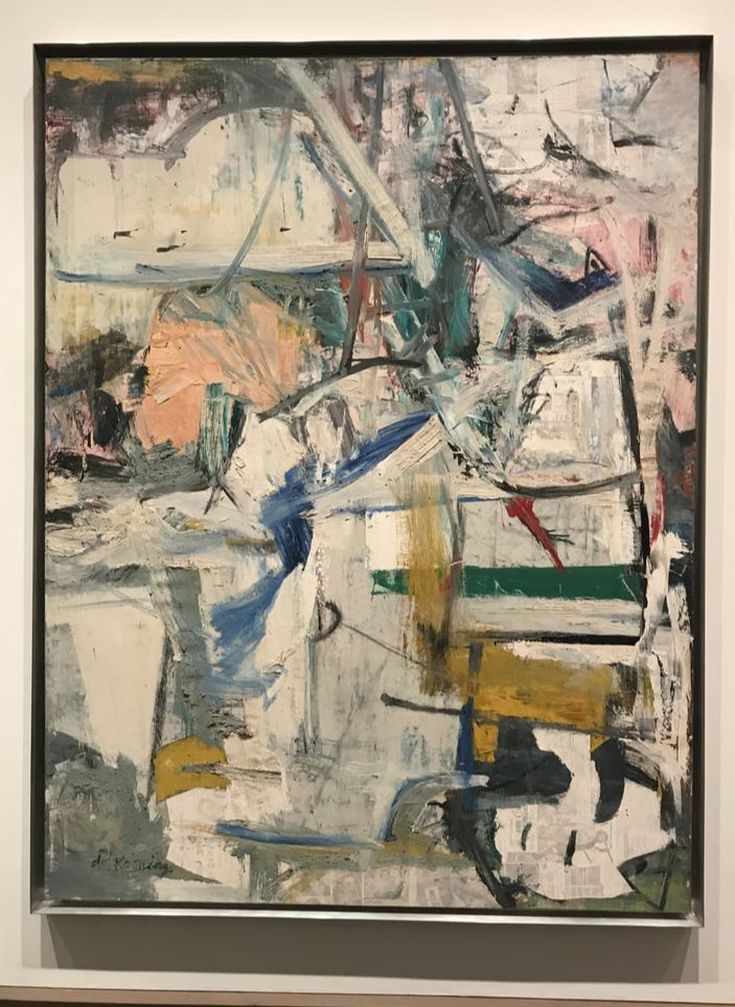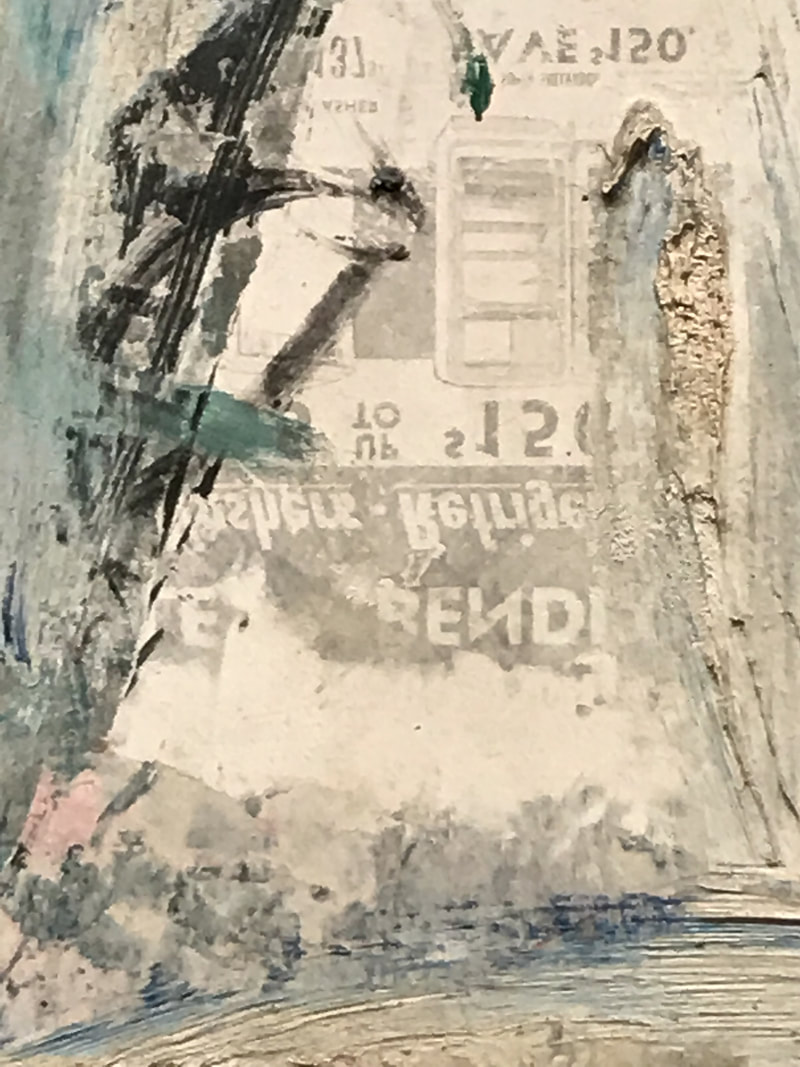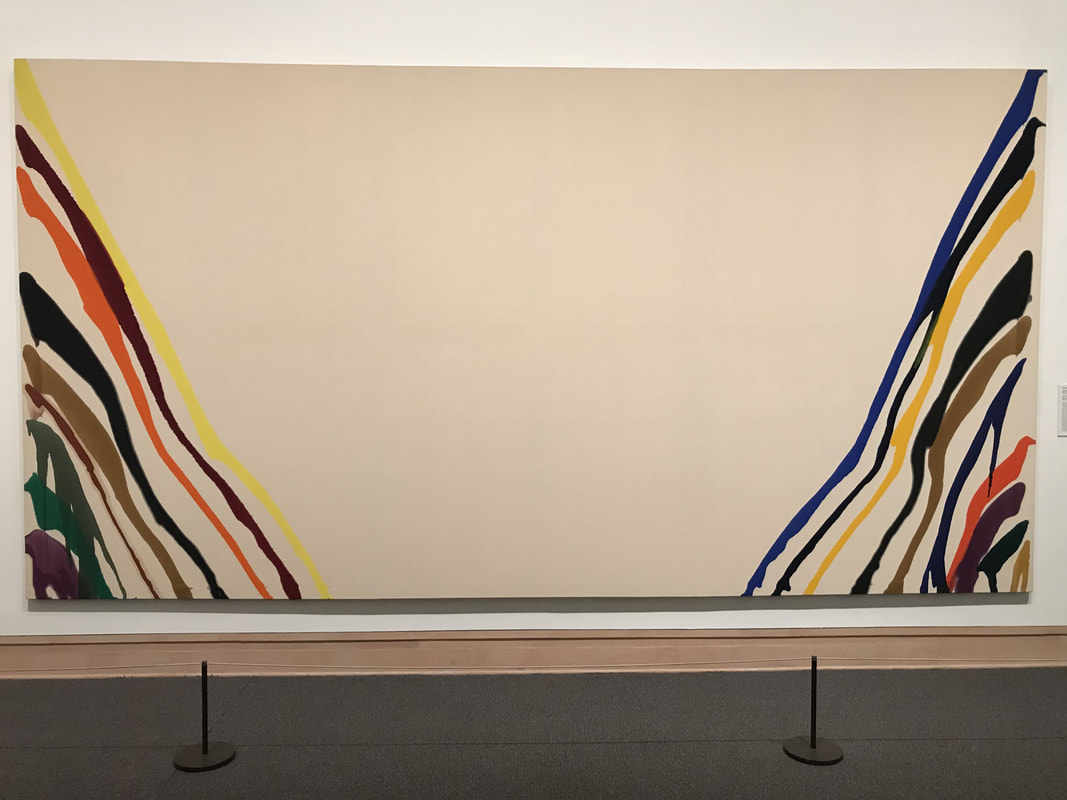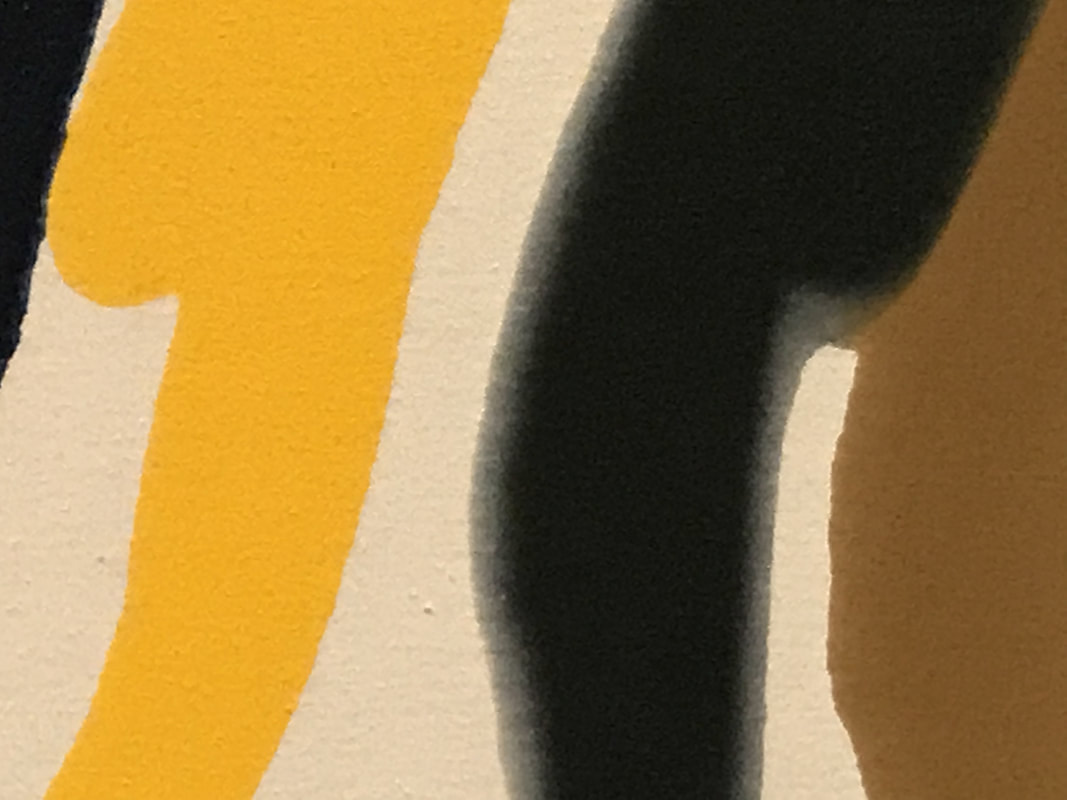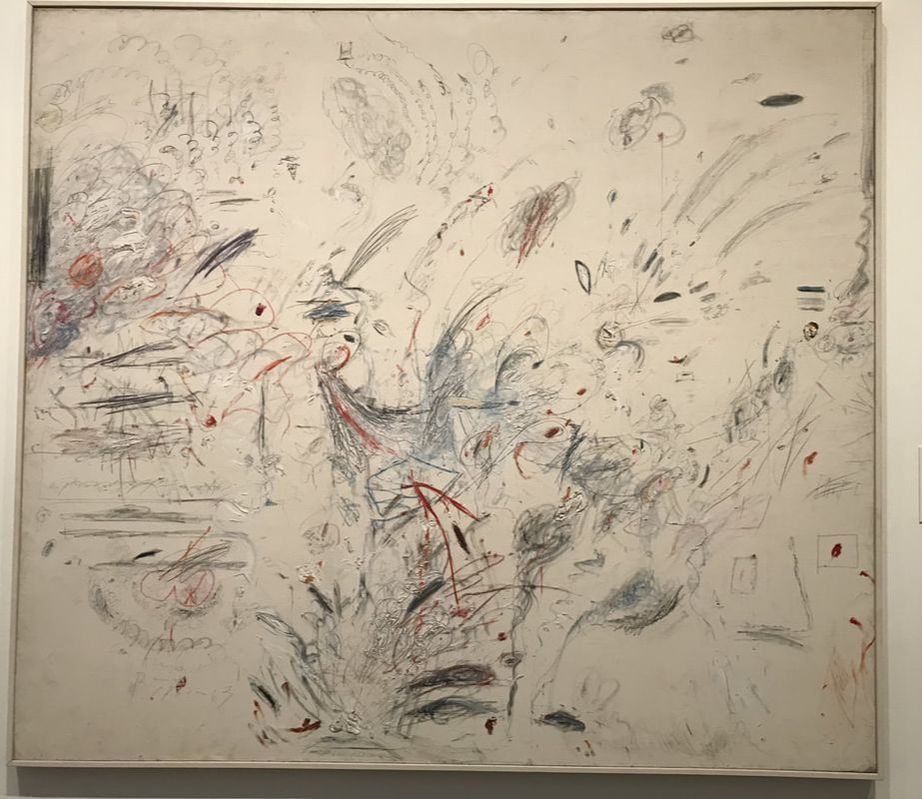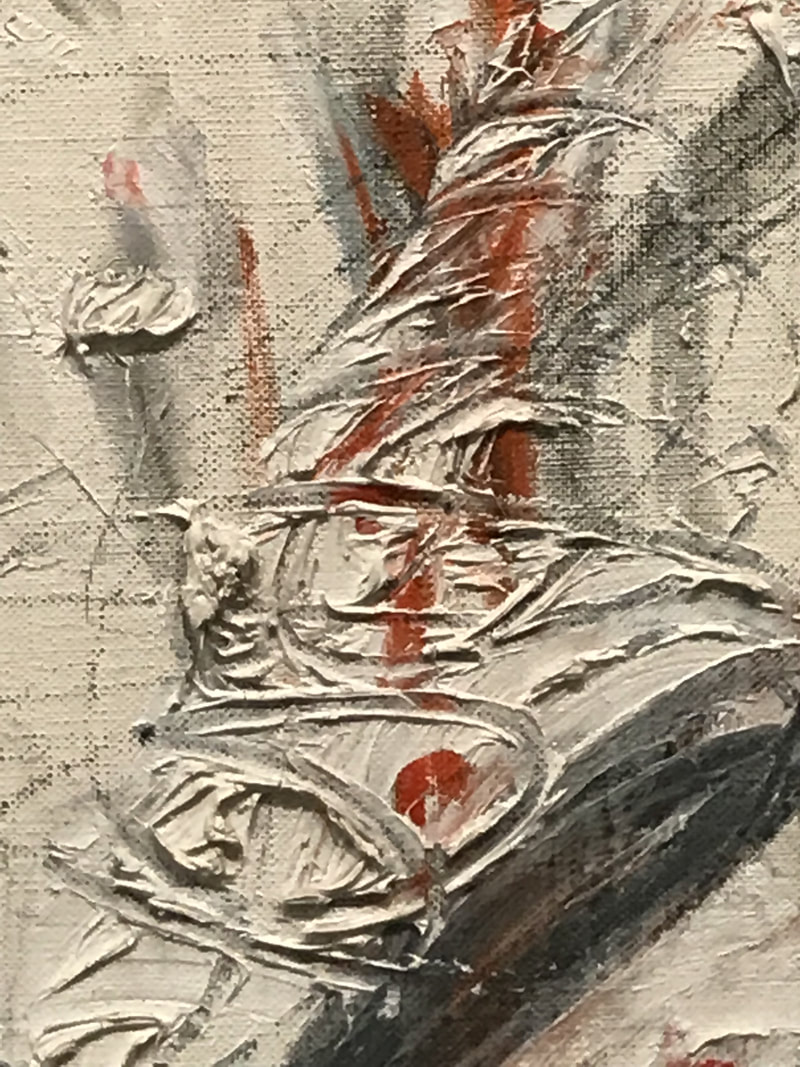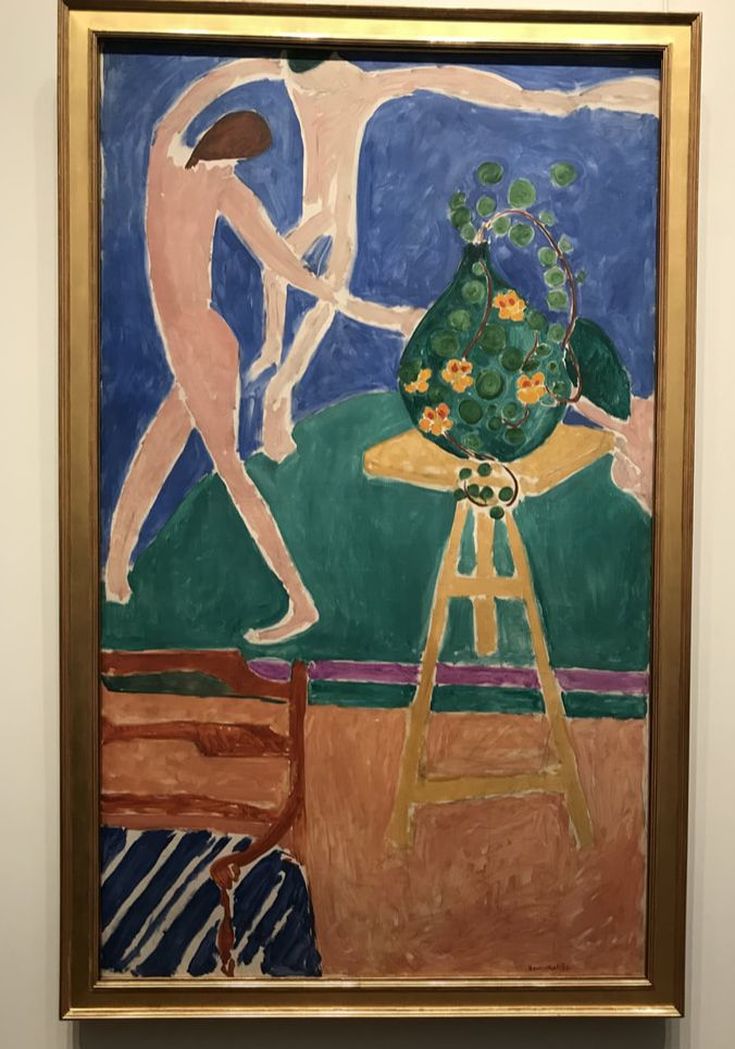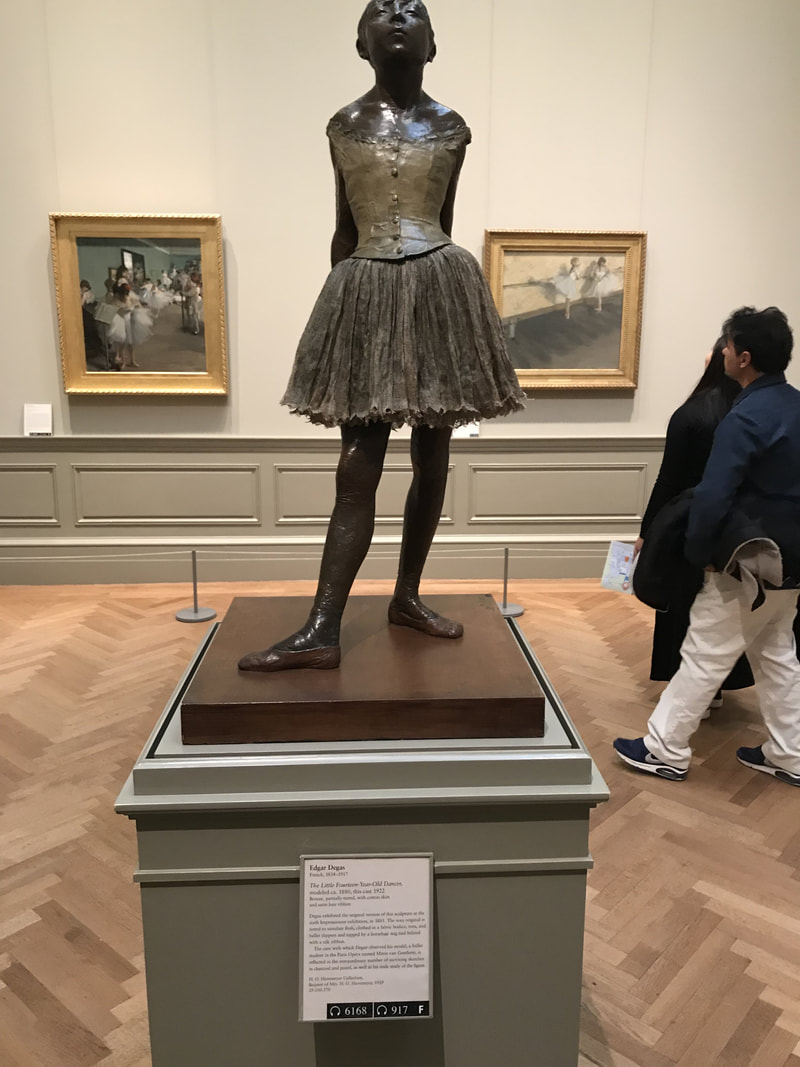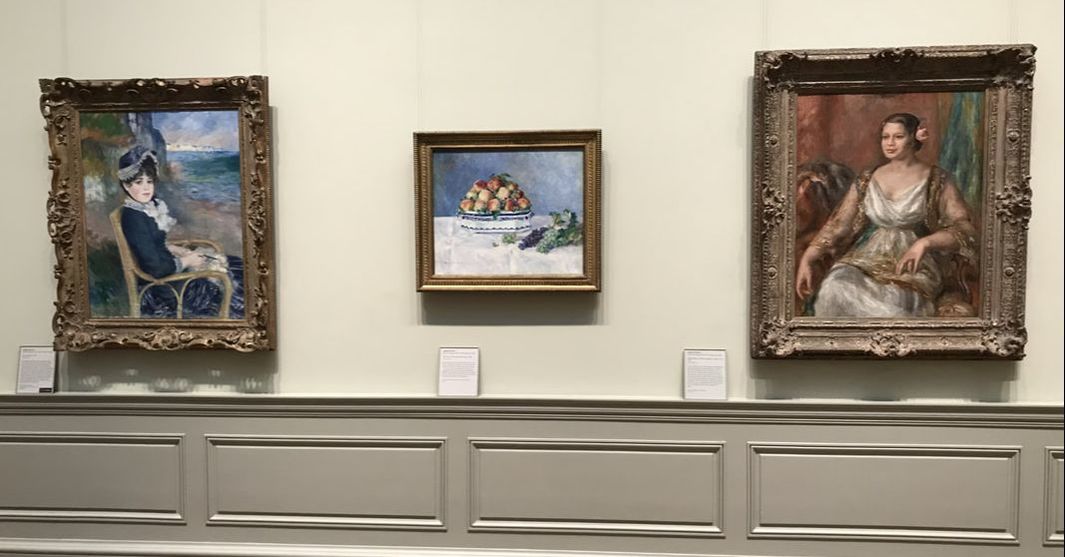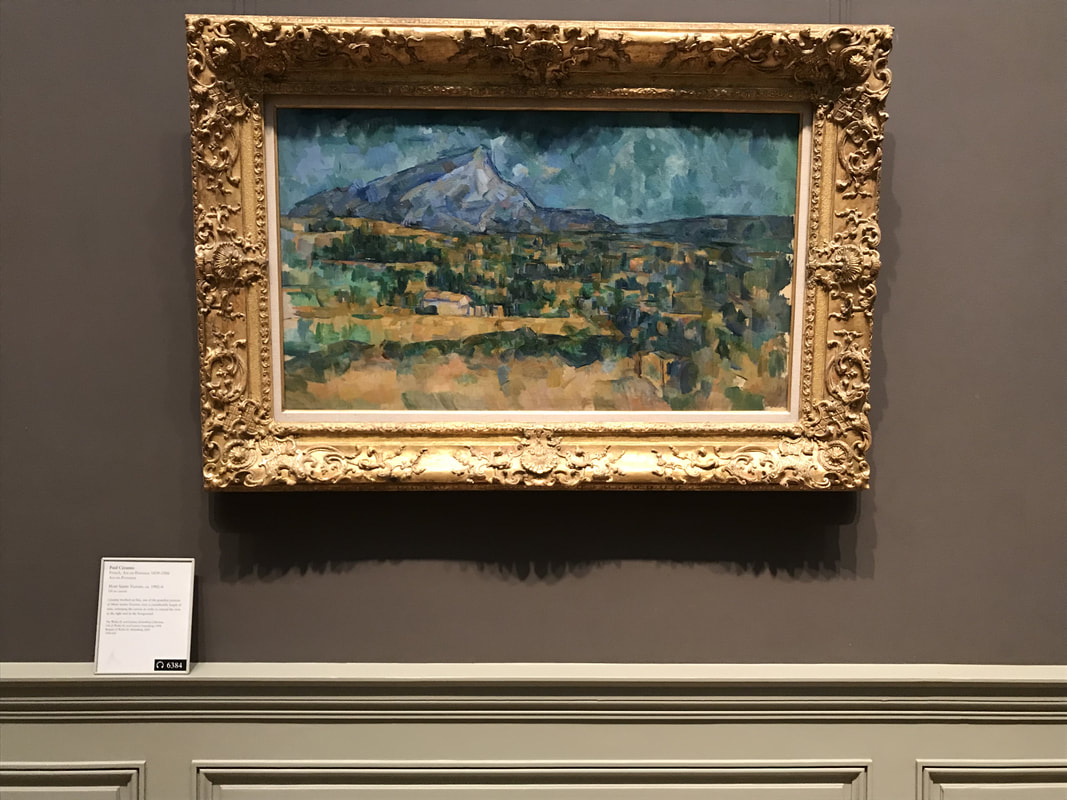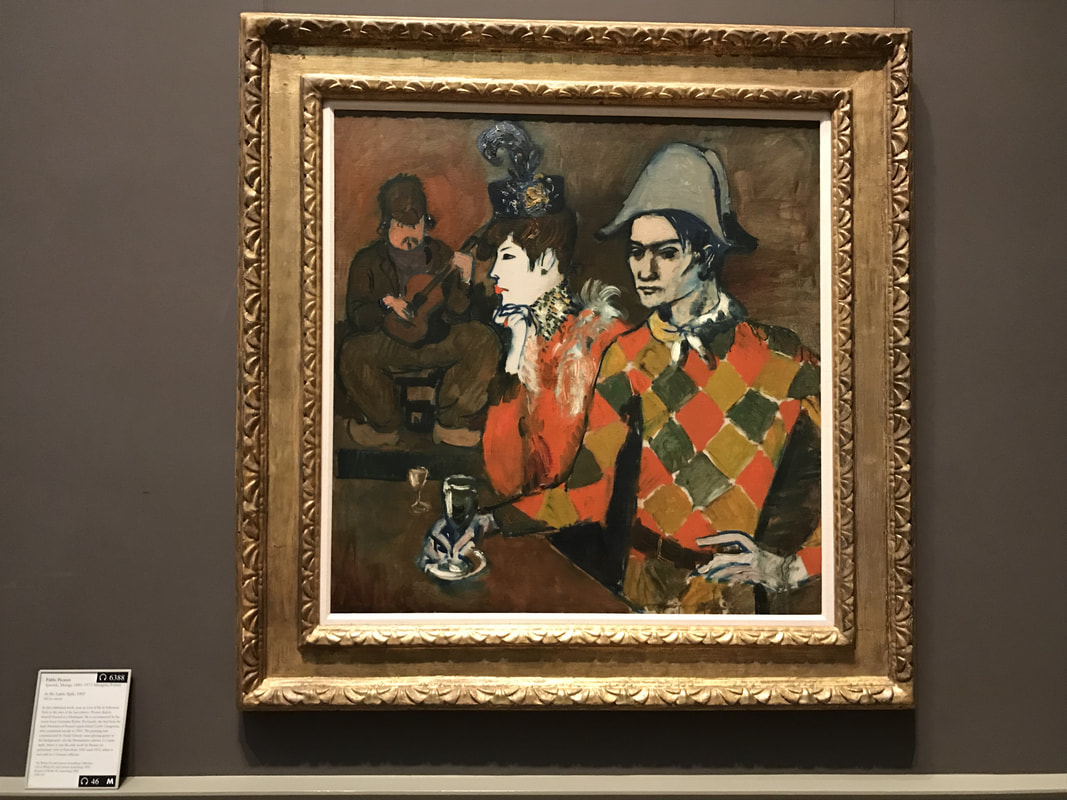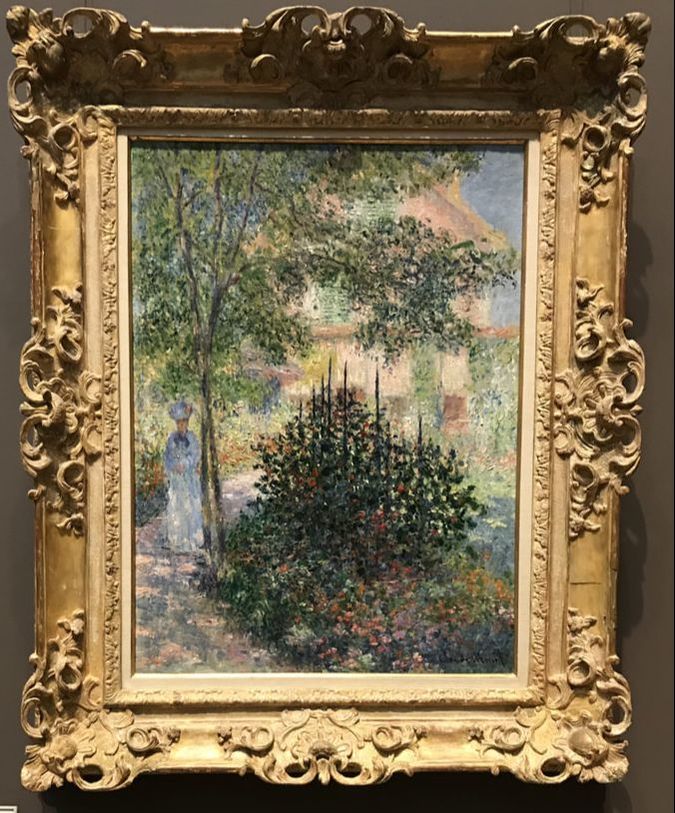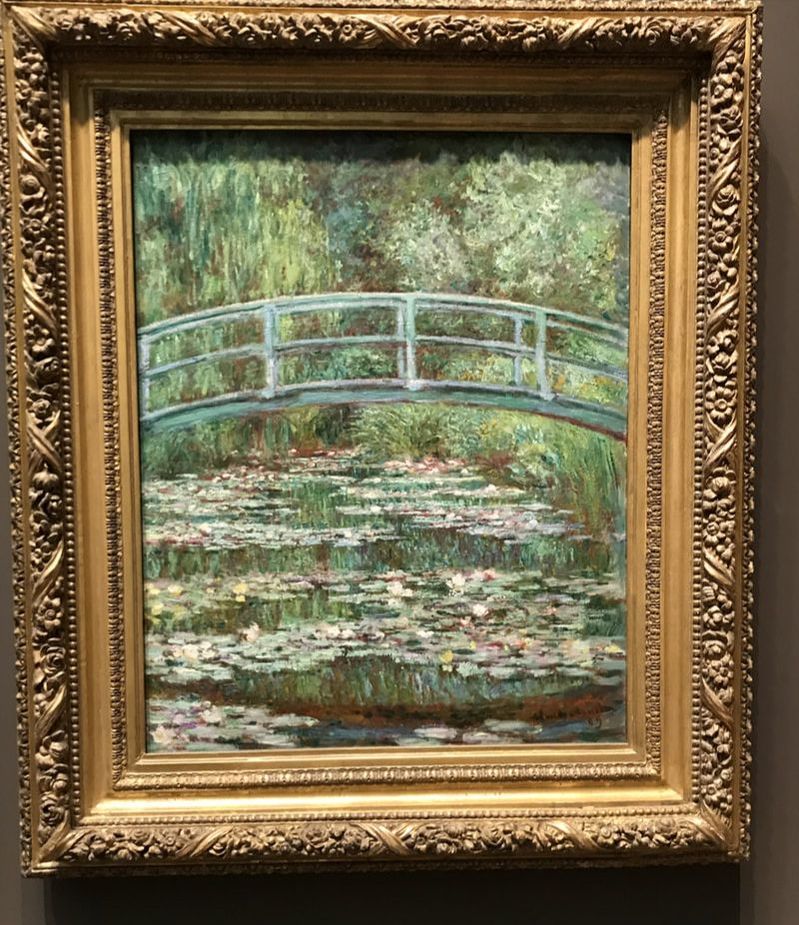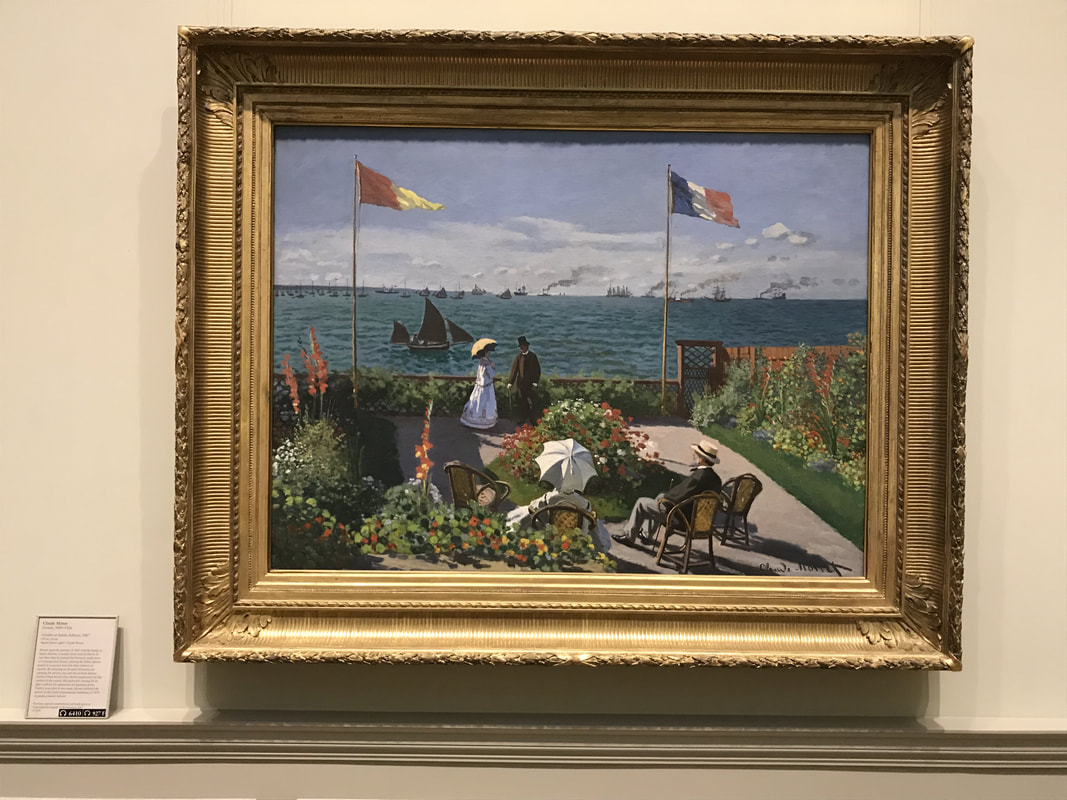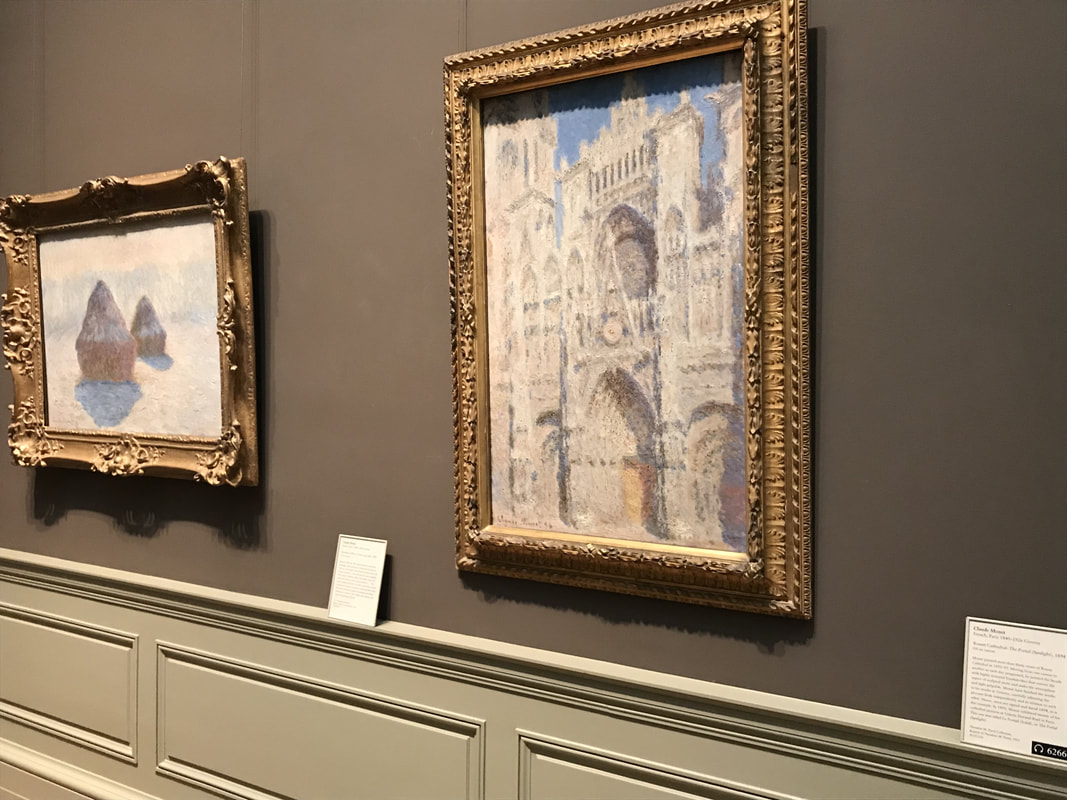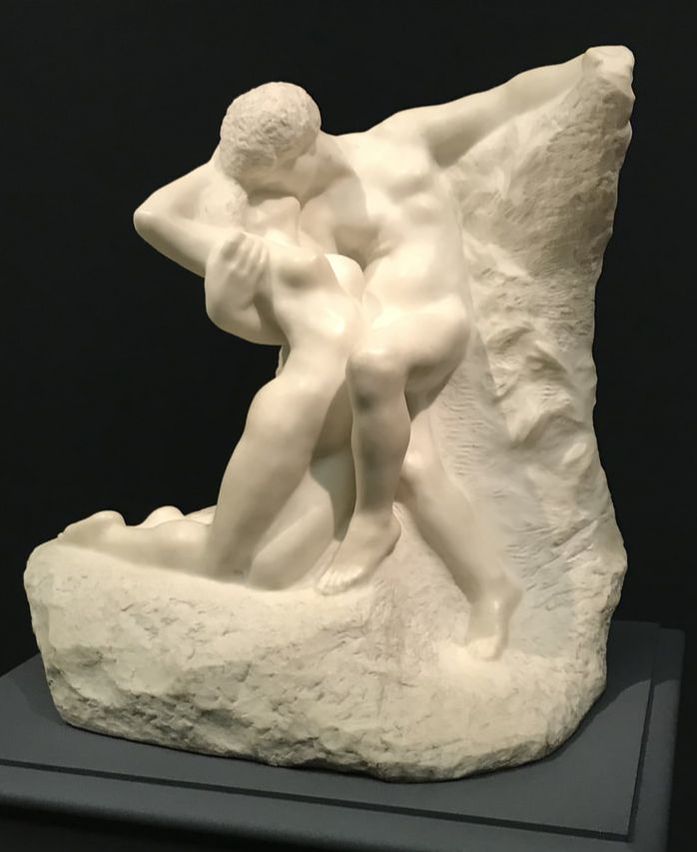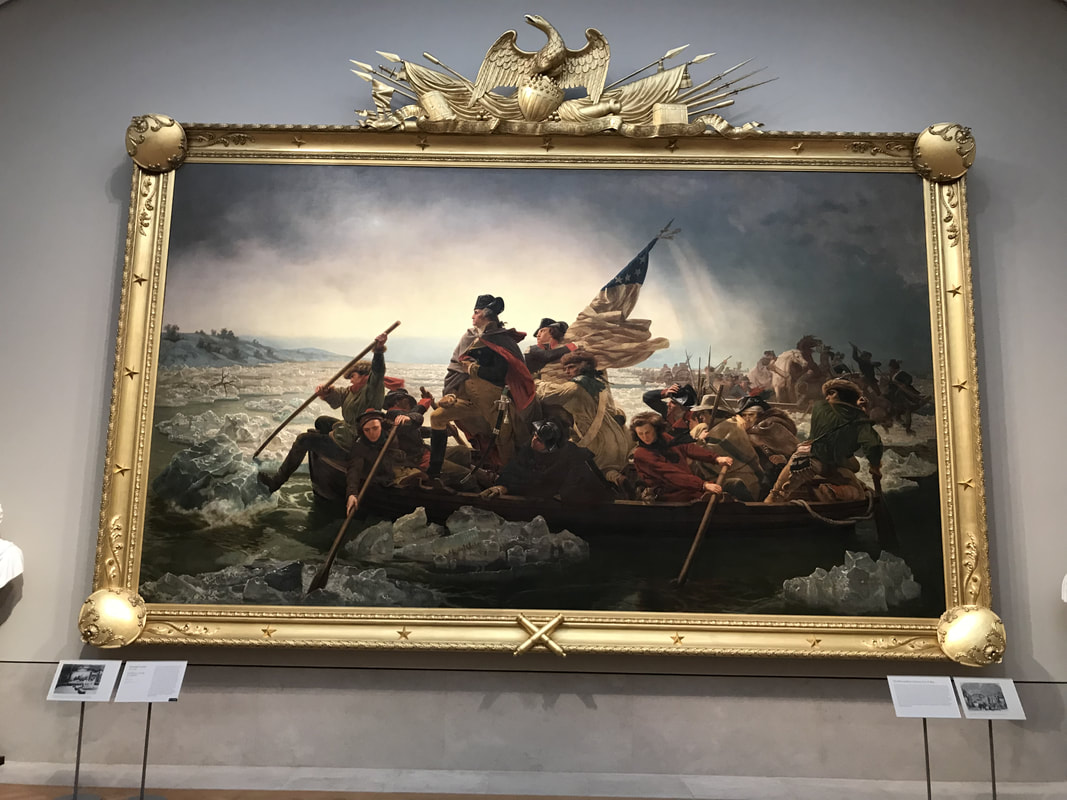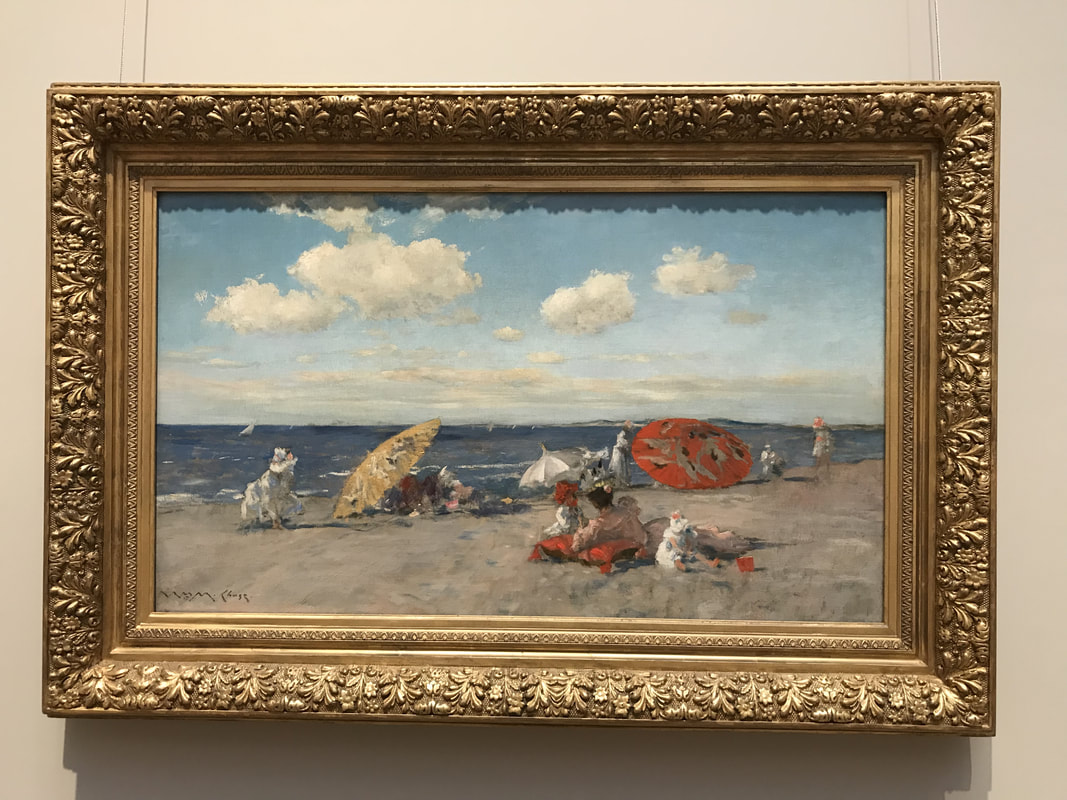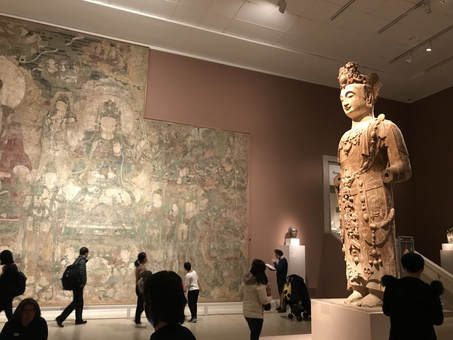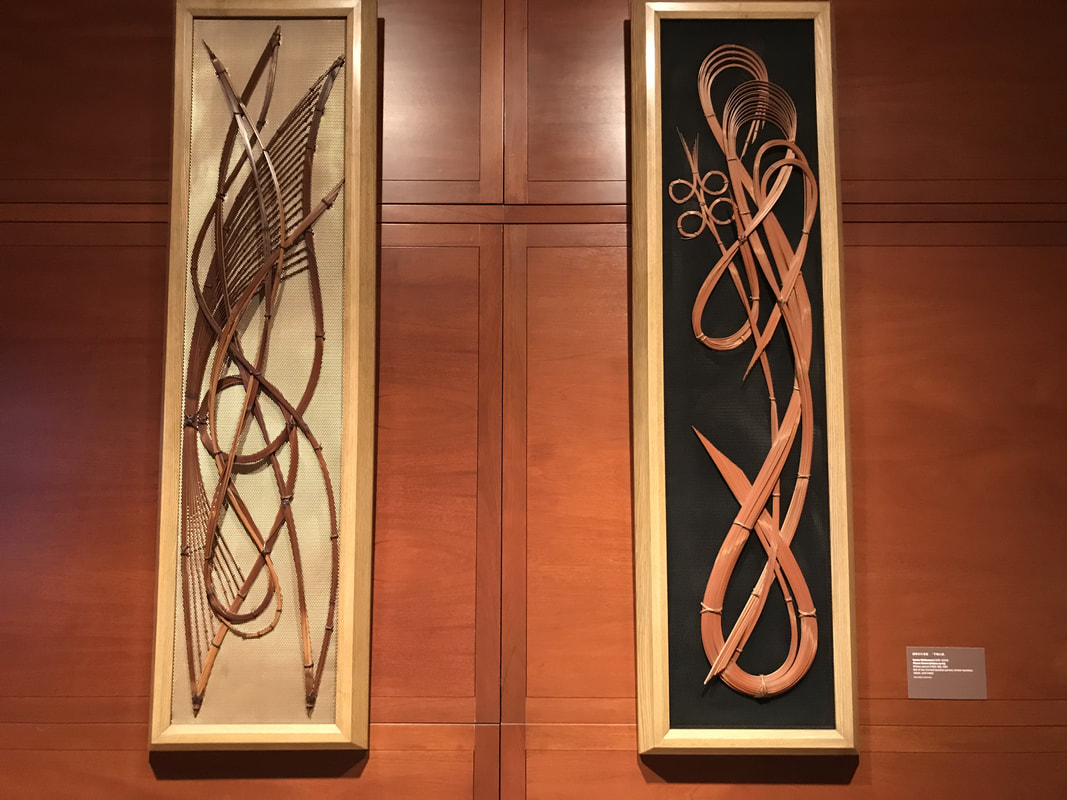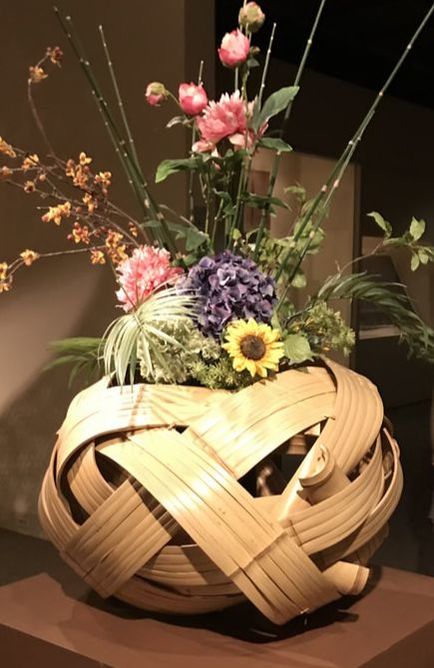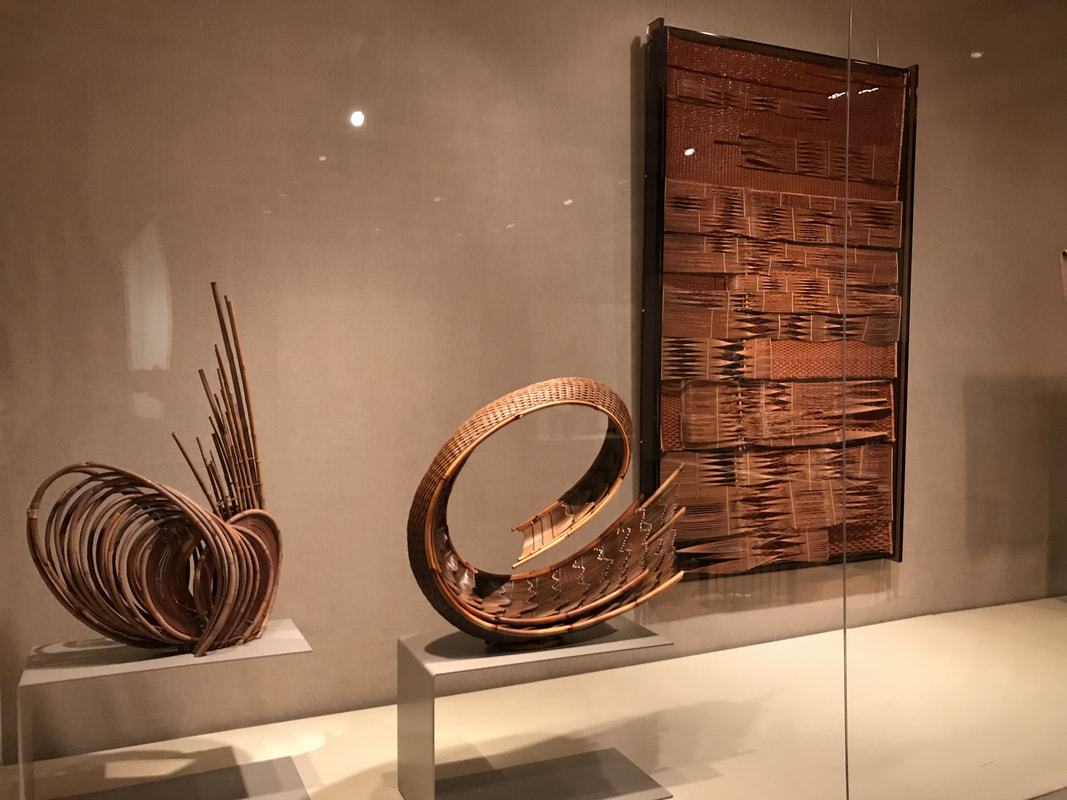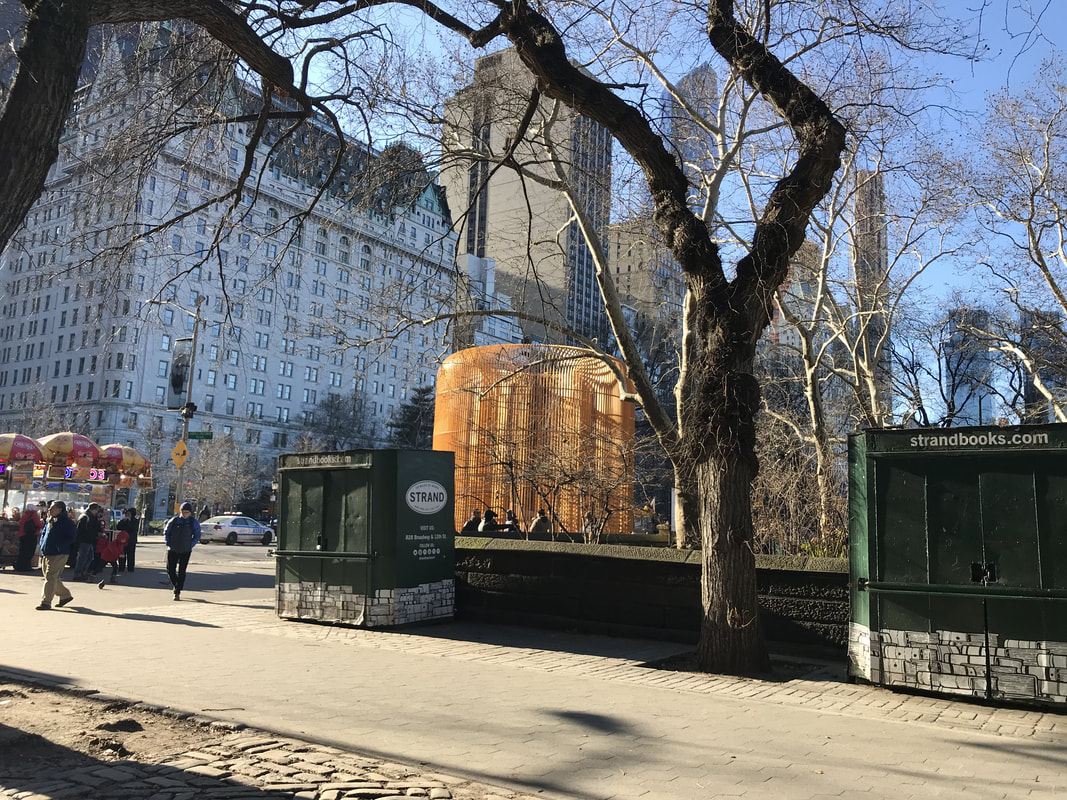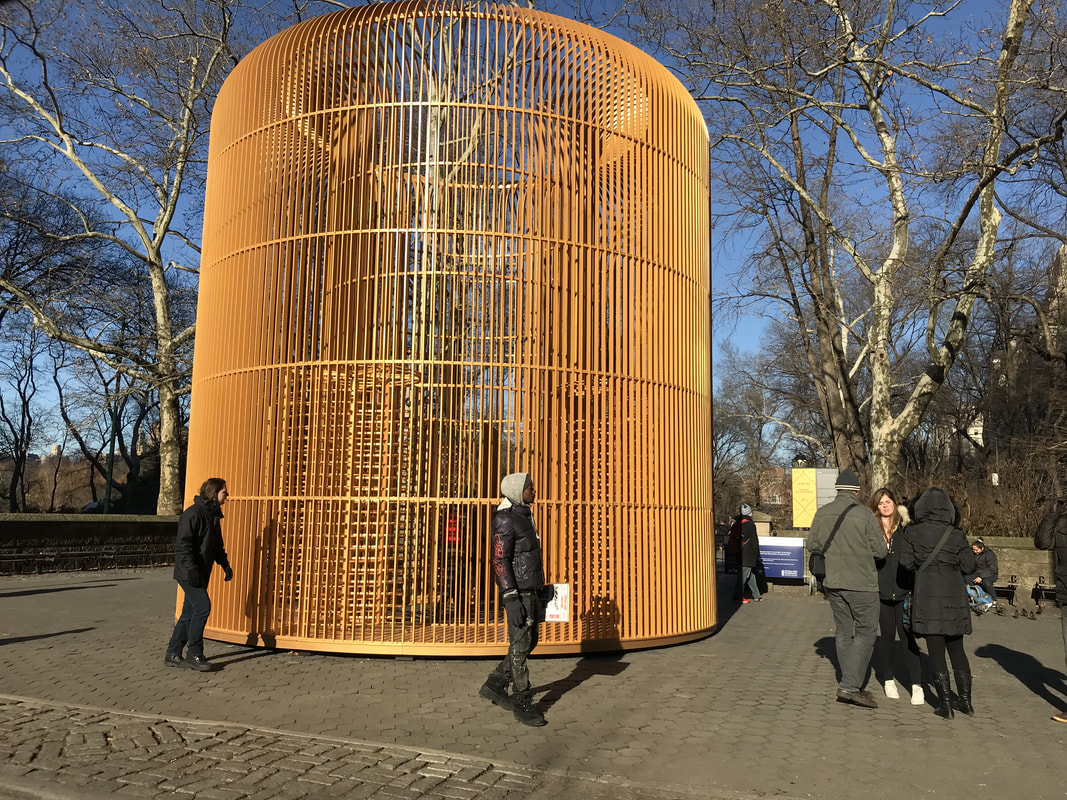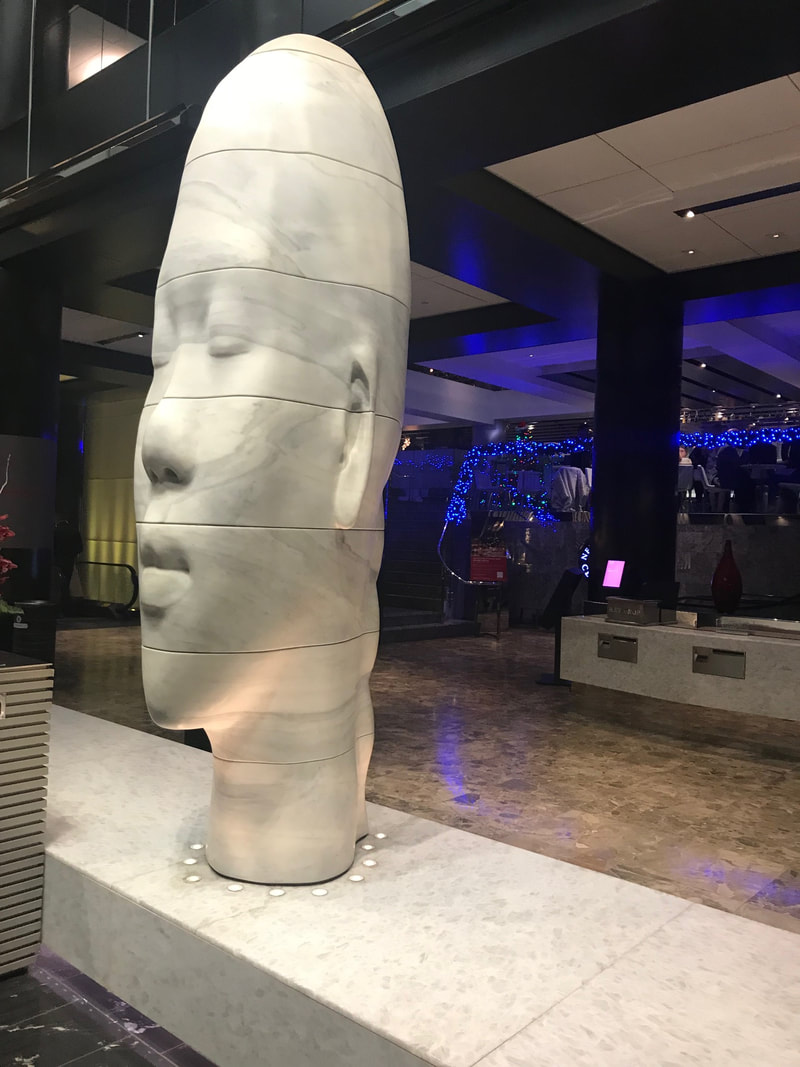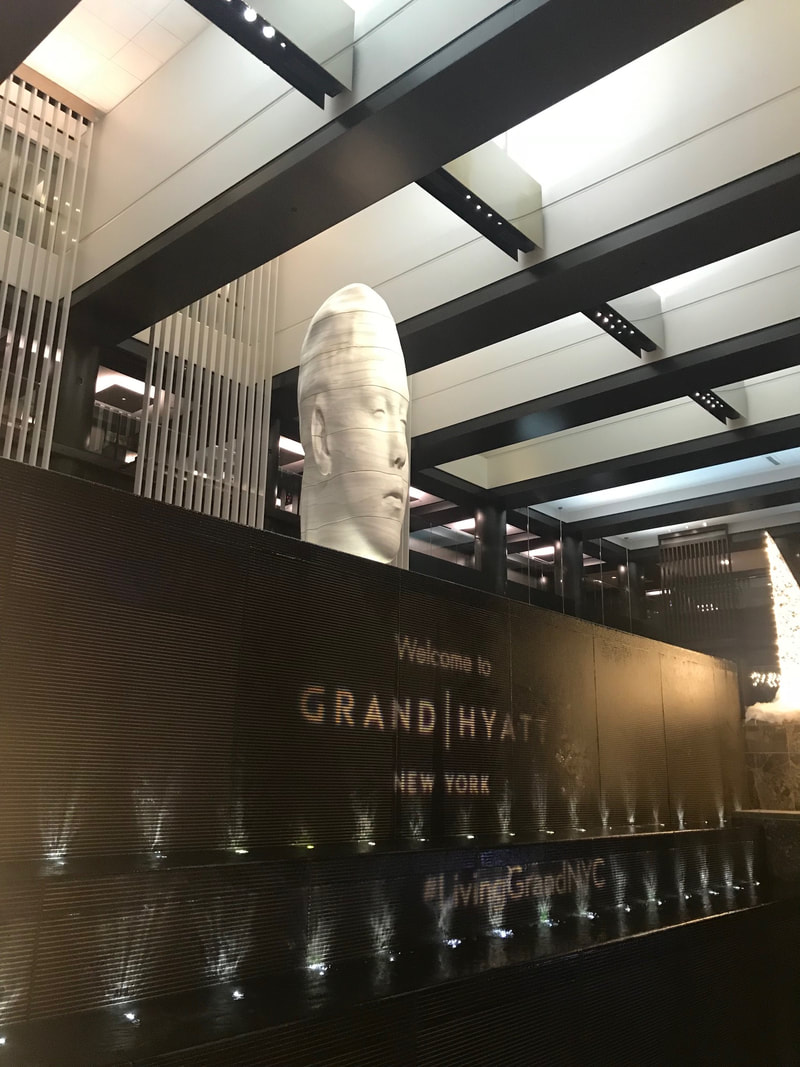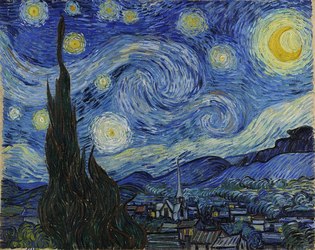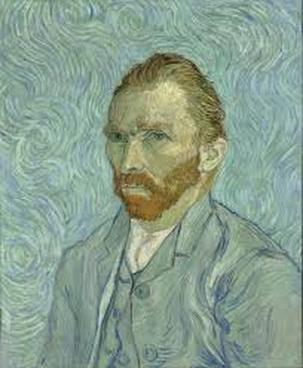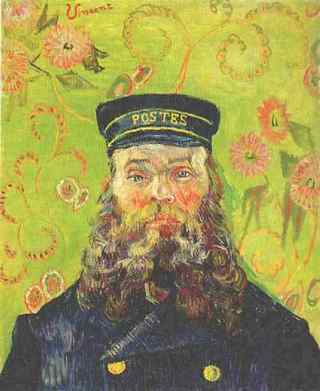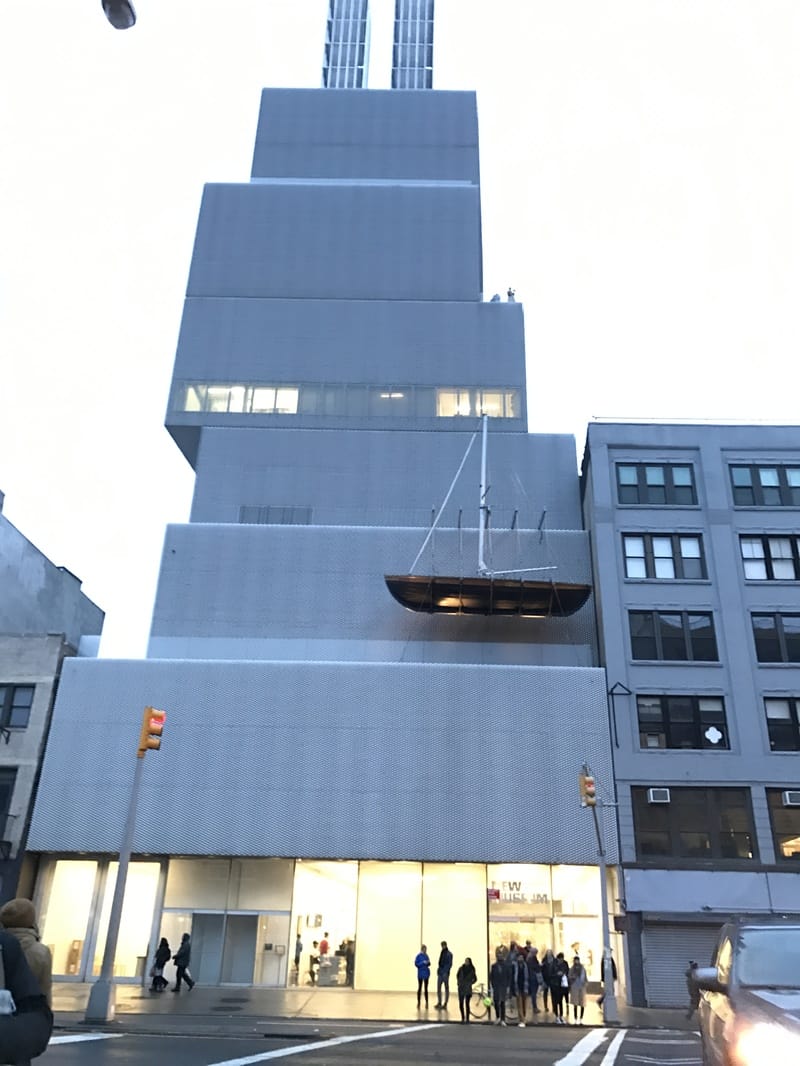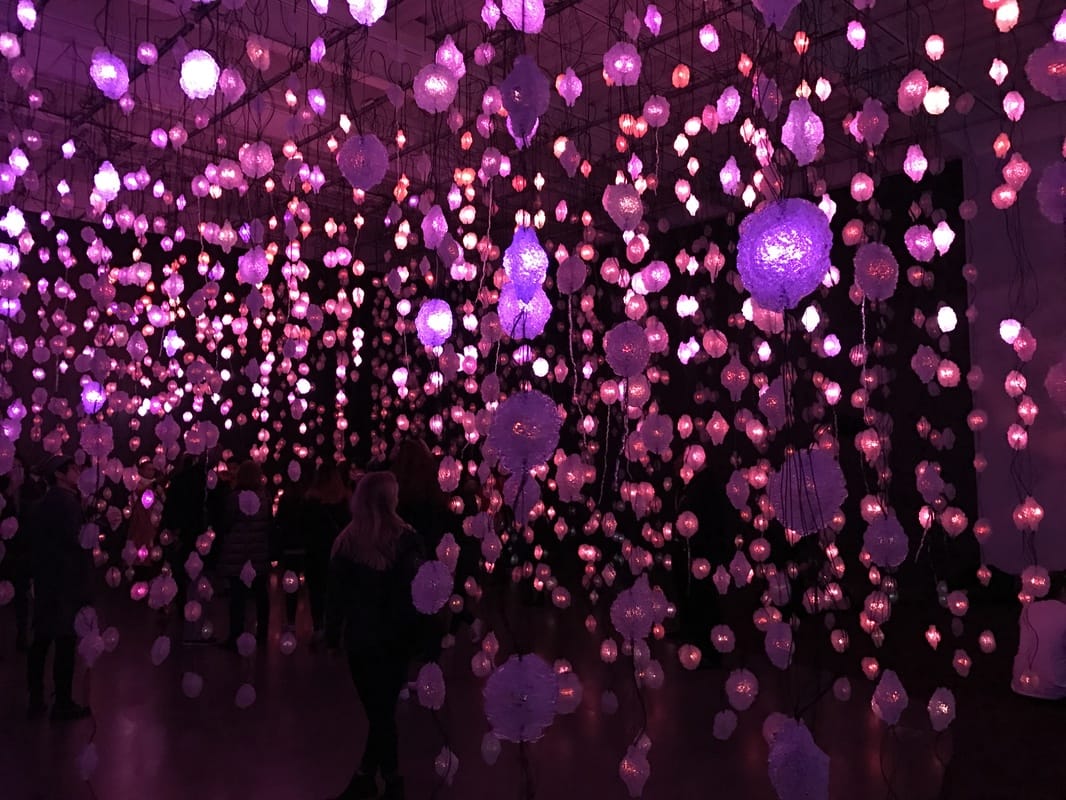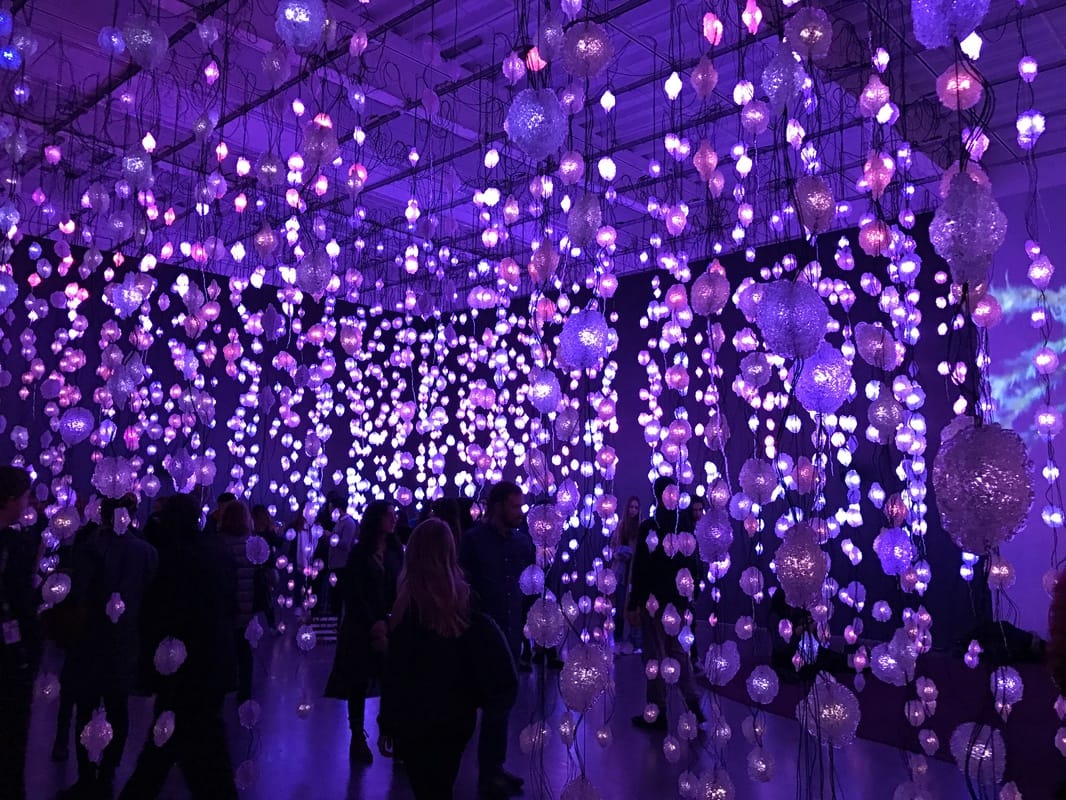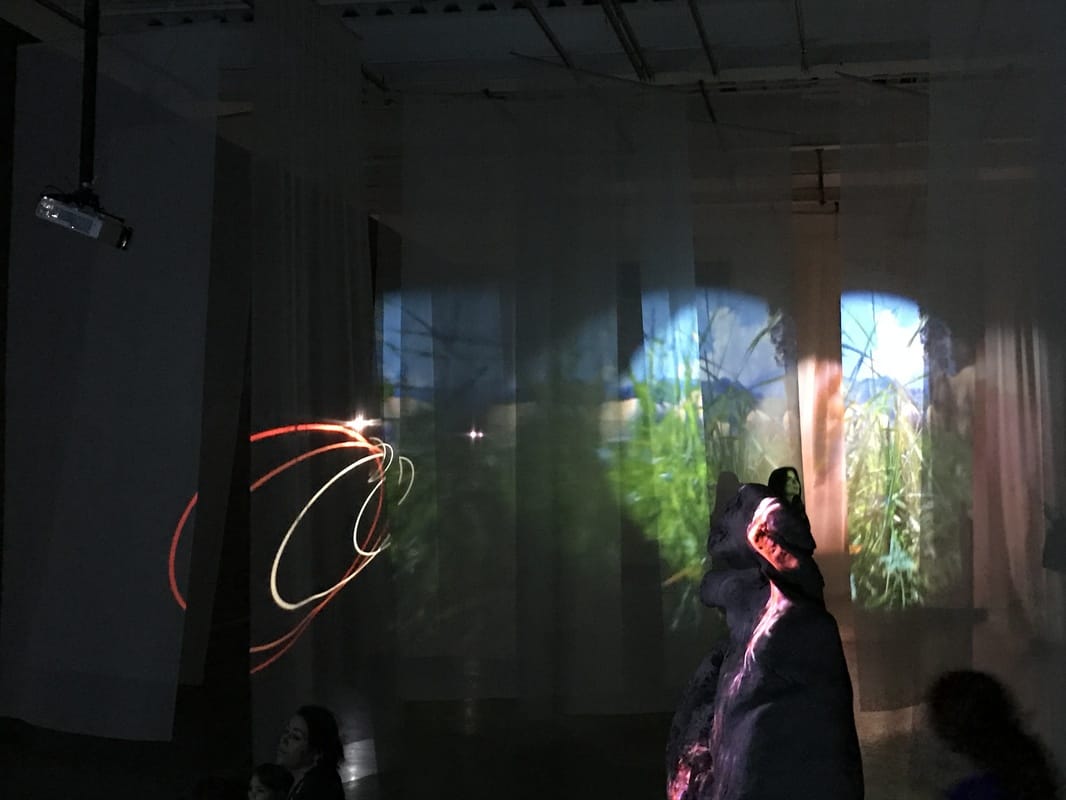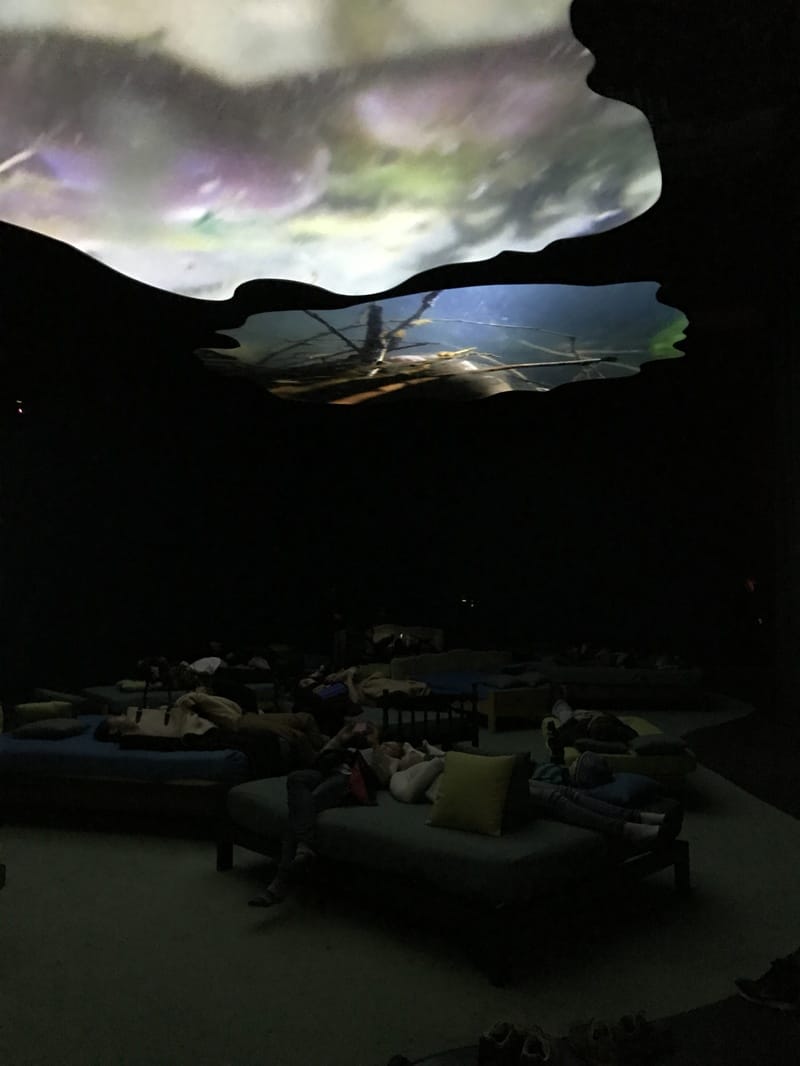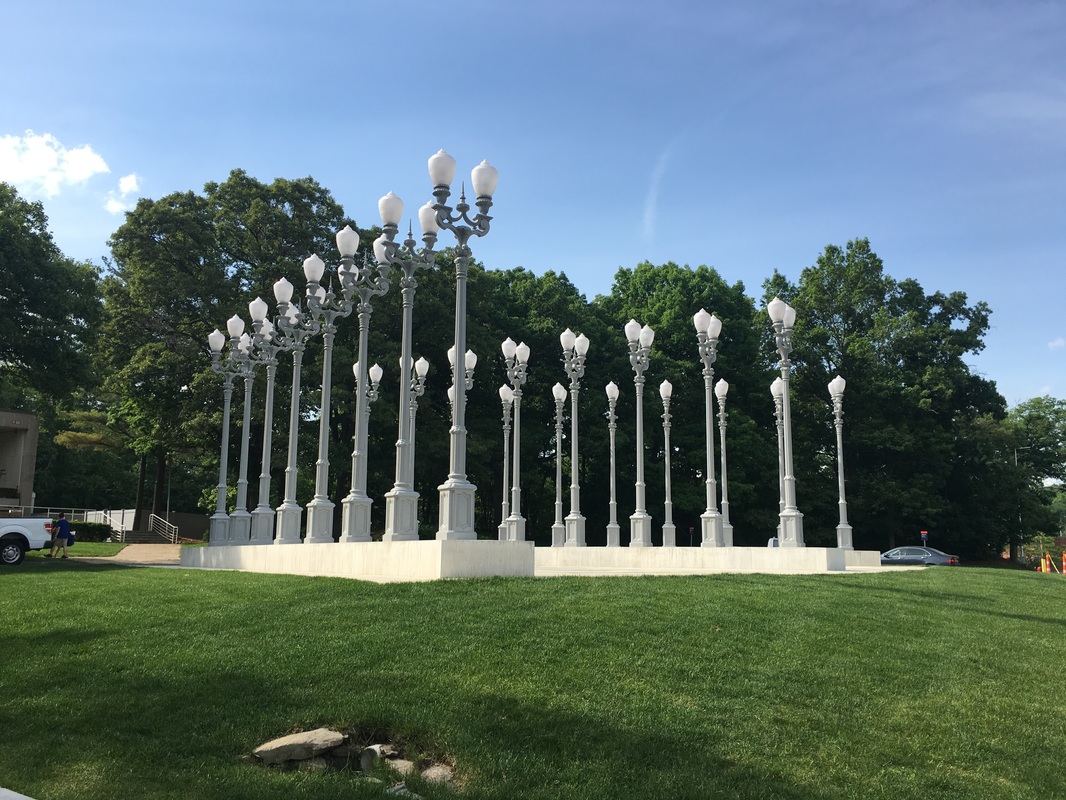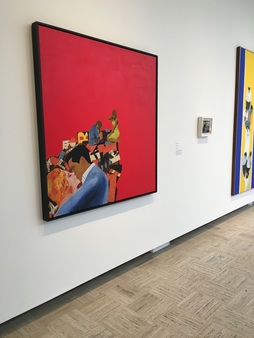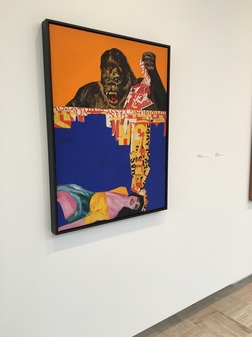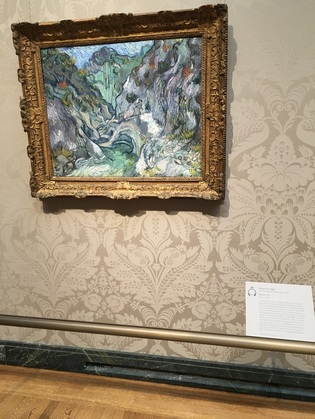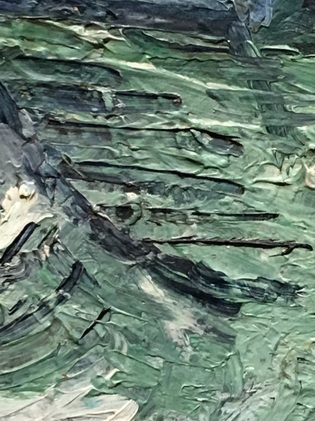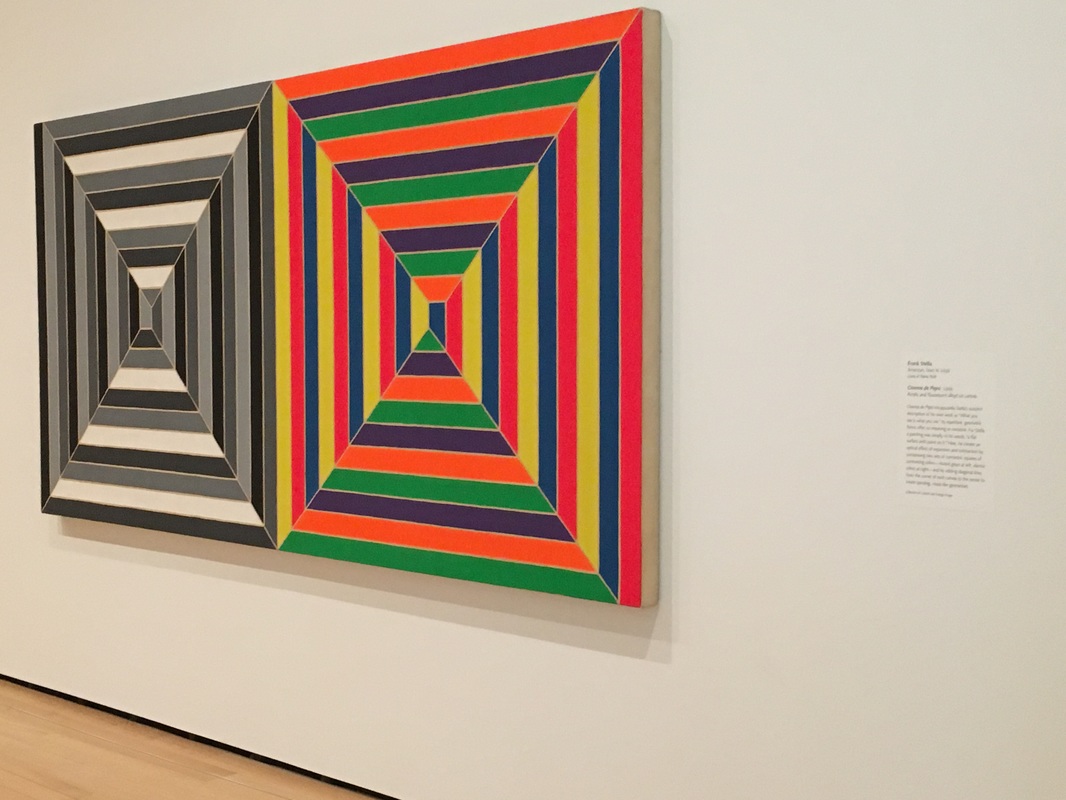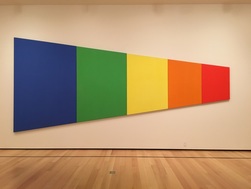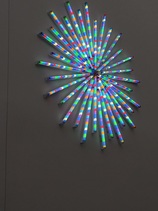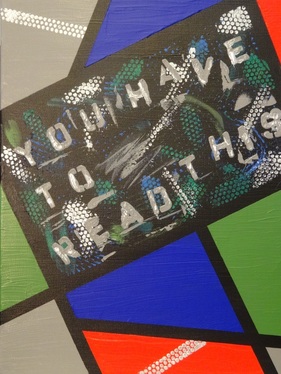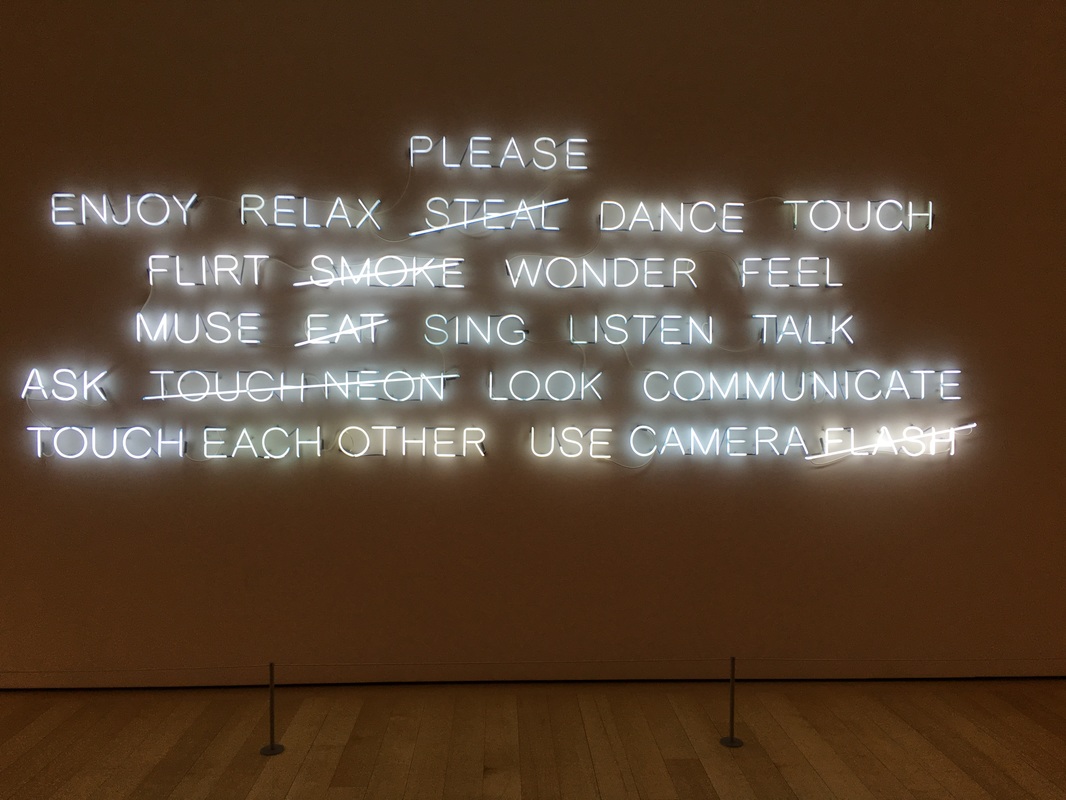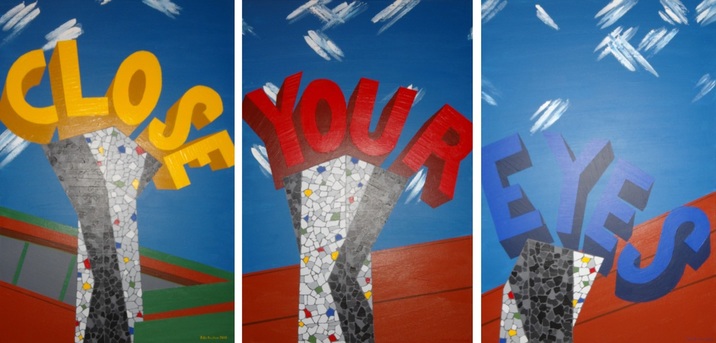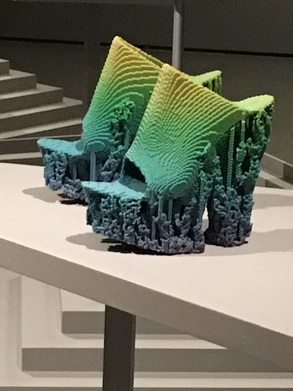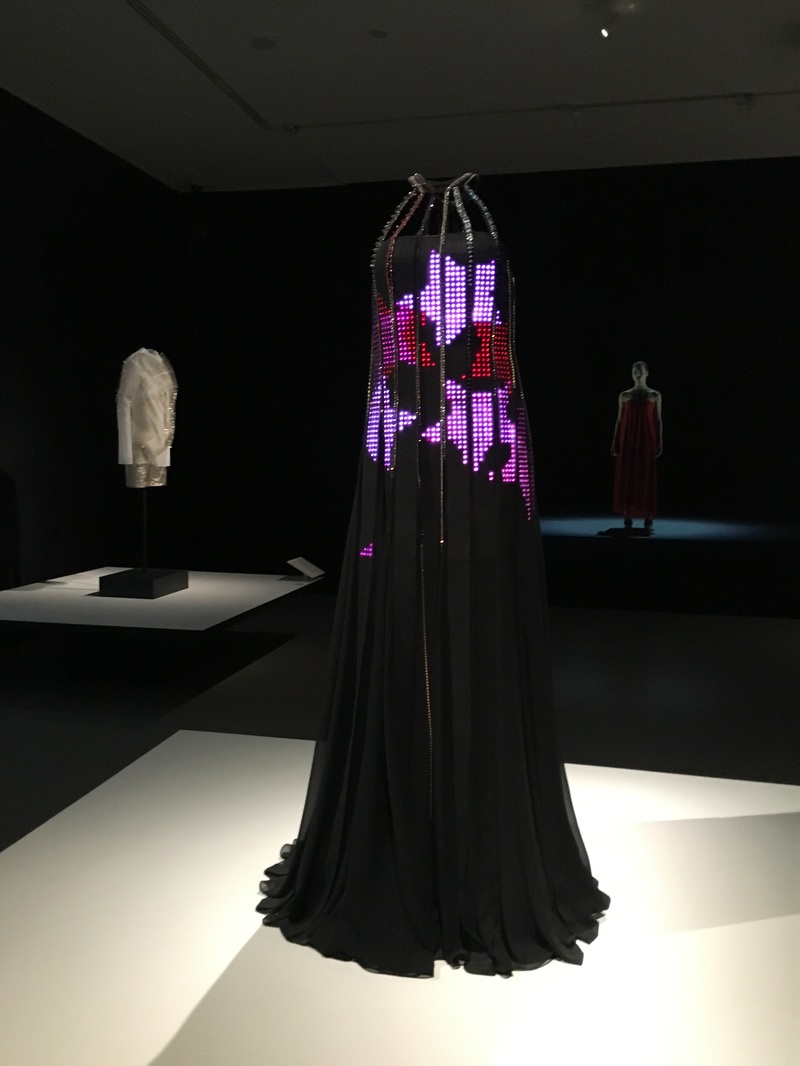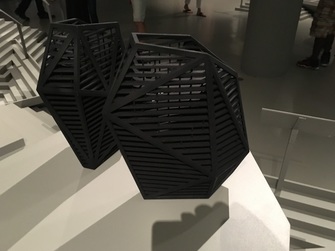To learn more about the electrical box, please visit the following link on my website (www.EddieBruckner.com) or read about it on my blog HERE (Natick Pride & The Boston Marathon).
0 Comments
The Museum of Contemporary Art is actually comprised of three locations. The first is the MOCA Pacific Design Center in West Hollywood; the second is the MOCA on Grand Avenue; and the newest location is the Geffen Contemporary. There is actually a fourth location in Nevada. Yes! Nevada. The artist, Michael Heizer's artwork titled, "Double Negative" is a work of land art located in the Moapa Valley on Mormon Mesa near Overton, Nevada and was acquired into MOCA's permanent collection in 1985. If the artist's name rings a bell, it's because I recently wrote about his other monumental piece of artwork at the Los Angeles County Museum of Art; CLICK HERE TO READ THE BLOG ARTICLE. I should note that time didn't permit me to visit the Pacific Design Center, or the Geffen Contemporary (or visit Nevada), so this post will only include my visit to the MOCA on Grand Avenue. I also visited the Broad Museum (Read On & See Below.) The Geffen Contemporary is just a 15-20 minute walk from MOCA Grand and admission to one museum grants you admission to the other museum.
The MOCA on Grand Avenue housed an entire gallery room with Mark Rothko paintings. While I can appreciate Rothko's artwork and acknowledge its importance in art history, his paintings are not my favorite. I do love all the colors, and I also love the shapes, however, there is ambiguity, blurring of lines, that doesn't hit me the right way. Rothko wanted viewers to stand close to his paintings to see the vertically stacked bands of color seem to float upon colored grounds.
This large painting on two panels is by the artist, Njideka Akunyili Crosby. It's called "Garden, Thriving" and was completed in 2016. Her artwork was quite fascinating to see in person and I've included a detailed photograph of the two-panel painting. Originally from Nigeria, the artist layers photographic imagery within the chairs' fabric and the plant leaves. The images are pictures of Nigerian pop stars, models, military dictators, celebrities, and the artist's own personal photographs. To create this artwork, she uses acrylic paint, transfers, colored pencils, and collage on paper. There is so much to see in this painting, you could look at it for 10-20 minutes, or longer! I should also mention that the mural that is wrapped around the exterior of the museum is by this same artist!
Three other works by Jackson Pollock from MOCA’s permanent collection, were also on view. These were great examples of the diversity and range of materials Pollock used in his artwork from watercolor to collage. Walt Disney Concert Hall, Los Angeles, California This building is simply spectacular. Frank Ghery is one of my favorite architects and this is a perfect example of why that's the case. (In addition to all the awards he has won for his incredible architectural design). Frank Gehry was asked to devise a new home for the Los Angeles Philharmonic and the Walt Disney Concert Hall opened in 2003. Reflecting Gehry’s longtime passion for sailing, the structure’s exterior features are expanses of stainless steel that hover above Grand Avenue. Frank Gehry has devoted his career to disrupt the very meaning of design within architecture. From the iconic Guggenheim Museum Bilbao to the Fondation Louis Vuitton in Paris, and now the Walt Disney Concert Hall in Los Angeles, Frank Gehry has proven time and again the beautiful magic of his whimsical, cutting-edge design.
The Broad is one of the finest contemporary art museums I have ever visited. Founded by philanthropists Eli and Edythe Broad, the museum houses more than 2,000 works of art and holds one of the most prominent collections of postwar and contemporary art worldwide. The Broad's third floor galleries show a rotating selection of artwork and, best of all, it is free! The first floor galleries are for special exhibitions, like the Jasper Johns exhibit "Something Resembling Truth" that runs through May 13, 2018. So let's talk about the beautifully designed building... It's often called "The Veil and the Vault" because the building has gallery space as well as an extensive storage facility. In contrast with the neighboring Walt Disney Concert Hall, The Broad was designed to be porous and absorptive. There are wonderful olive trees that were planted in the plaza next to the museum. There were a number of artworks by Jeff Koons at The Broad. "Balloon Dog (Blue)" is perhaps one of his series of works that is most famous. The artwork is made of stainless steel and wights 2,000 pounds. It was created as part of his Celebration Series, a group of paintings and sculptures that memorialize rituals, icons, and images related to birthdays, holidays, and other celebratory parties or occasions.
Roy Lichtenstein is one of my all-time favorite pop artists. He was one of the founders of Pop Art in the 1960s and used tiny dots in his artwork, similar to the printing style of comic-books. The dots were placed in such a way to create an image, imitating the way comic-books and newspapers were printed. In addition to borrowing or seeking inspiration from newspaper ads, commercials, and comic books, Roy Lichtenstein also was inspired by some of his favorite artists like Picasso and Mondrian. See the two images below. Here is a sculpture by Roy Lichtenstein, "Goldfish Bowl" created in 1977. It is painted and patinated bronze. On the right is a detailed view, showing that the sculpture is very two-dimensional, despite it looking 3-D. I always love seeing paintings by Chuck Close. Chuck Close is known for his detailed paintings of faces, and later he was known for the deconstruction of that detailed portraiture. He explores portraiture and created this photo-realist painting called "John", painted in 1971-72. I included a detailed shot showing the incredible painting technique. John Baldessari, "Tips for Artists Who Want to Sell" 1966-68, Acrylic on Canvas. John Baldessari never touched this painting, didn't paint it, didn't write the text. Here, it's the role of the artist as the facilitator of the artwork; creating the concept. The humor is that the view is shown the paintings message, but the message is text taken from an art magazine with tips on what art should be. Another one of my all-time favorite artists is Andy Warhol. A short time after Marilyn Monroe died in 1962, Andy Warhol started to create silkscreen images of Marilyn. I learned that Warhol had recently just learned how to silkscreen, so this was a somewhat new process for him! In the painting above, titled, "Two Marilyns" created in 1962, Warhol captures the terrible fact of Marilyn's death, as if he was reporting the news. With silkscreens, the images deteriorate with each printing, which I believe is symbolic of her presence and then her fading into history with her death. It can also be interpreted as the volatility of fame and celebrity. I'm not sure how many versions of "Two Marilyns" were created, but I learned that the one pictured above from The Broad Museum was the 27th version of the silkscreen created. Ellsworth Kelly worked with shapes and solid colors. The painting below, "Green Blue Red" created in 1963, uses colors and shapes to create contrast and bring attention to edges. In the above image on the left, the green rectangle and blue oval are vibrantly displayed against the red background. His composition almost goes against the principal of design of balance. Below, Kelly's oil on canvas painting, "Green Relief with Blue" was completed in 2011. It's actually two conjoined canvases and I've posted the photo of the same painting as seen from different angles. It almost acts like a 2 dimensional painting trying to be a sculpture, with different views from different angles. Jasper Johns: "Something Resembling Truth" A Special Exhibition at The Broad (Through May 13, 2018) While The Broad Museum's main collection has free admission, this special exhibition required a special ticket with a timed entry. The exhibit was one of the best I've ever seen. The exhibit covered over 6 decades of artistic achievement from this iconic American artist. The comprehensive exhibit features more than 120 extraordinary paintings, drawings, prints, and sculptures, by Jasper Johns and draws upon works from within The Broad's permanent collection as well as from loans from over 50 international public and private sources. The imagery he used in his artwork were common items such as American flags, numbers, letters, targets, and light bulbs. Perhaps Johns’ most famous painting, "Flag (1954–55)" and is a fairly accurate representation of the American flag, in encaustic on collaged paper and fabric.
The American Flad is a geometric composition that has a strong sentimental and patriotic value in society. Jasper Johns' flags ofent trick the eye, or blur the lines between perception, reality, and illusion.
Jasper Johns began to incorporate objects and tools used in his artwork directly into the artwork's creation. Things like paintbrushes, color charts, and rulers. In the painting below, the "R" of "Red" is a neon light and wooden letters protrude outward from the canvas. I highly recommend you to experience the Jasper John Exhibit if you can! Also on the first floor was a very unique art installation by artist, Yayoi Kusama, titled "Infinity Mirrored Room--The Souls of Millions of Light Years Away." It is a mirror-lined room that includes LED lights that reflect endlessly in the mirrored space. It doesn't sound like much, but it is quite amazing to see. You need a separate timed ticket, which is free, and only one person can enter the room at a time for a duration of 45 seconds. As you can see, the Broad Museum is quite an amazing experience. I highly recommend you visit The Broad in Los Angeles and experience the art scene in Downtown LA. For more information about The Broad, please visit their website: www.thebroad.org Check out some of my other posts about Los Angeles!
I had the pleasure to go on a Studio Tour at Warner Brothers. There are so many forms of art that go into making movies and television shows; concept art, fashion design, set design, traditional and computer generated animation, etc. It was fascinating to see so many of these art forms come to life in the exhibits on the studio tour. I'll focus this blog on the Concept Art that I saw for the Harry Potter movie franchise. Every element of the films were carefully designed and illustrated through creative and inspiring concept art. The production designer for the films and the art department created hundreds (perhaps thousands) of sketches and full-color renderings that helped to inform the look of the films as well as the fabrication of the props, sets, creatures, characters, and costumes. From the concept art, decisions were made to refine and select and approve final versions. Creating the magical creatures that filled the world of Harry Potter wasn't an easy task and involved a massive team of artists and special effects experts. From the concept art, the Creature Effects team developed 3-D creatures from small maquettes to full-sized animatronic beasts. Some of these sculptures were created so that they can be scanned into a computer and modified digitally in post-production. Warner Brothers Animation is one of the most famous animation studios. I learned that Warner Brothers has won 6 Oscars, 35 Emmys, and 20 Annie Awards (excellence in animation). I remember Warner Brothers for its cartoons featuring Bugs Bunny, Daffy Duck, Porky Pig, Elmer Fudd, Yogi Bear, and Tom & Jerry. Even more notably, Warner Brothers is the home of DC Comics Superhero franchises such as Superman, Wonder Woman, and Batman.
In addition to concept art, Storyboards transform the written words of the script into visual images depicting action in a series of illustrative panels. Storyboards help indicate camera movement, close-up shots, long shots, or other specialty shots. The storyboards help the director and crew design the finished sequence as well as plan the logistics of the shoot itself. The art department is in charge of designing everything photographed in a movie before it is shot. Other visual tools in addition to Storyboards and conept art innclude digital renderings, and models.
I love this painting below by Vincent Van Gogh, not because I love the imagery, but because it really doesn't look like a typical painting by Vincent Van Gogh! This painting, "Garden of the Rectory at Nuenen" was painted in 1885 in the Netherlands. The browns and grays are vastly different from the vivid, bright colors we are used to seeing in his later paintings when he lived in the south of France. Below is one of Van Gogh's more typical painting style with all the beautiful colors and brushwork. The painting, "Hospital at Saint-Remy" is oil on canvas and was painted in 1889. It depicts the scenery at the institution in the south of France where Van Gogh was being treated for severe mental illness. The Hammer Museum also has other galleries dedicated to contemporary artists. There was a really cool exhibit by the artist, Molly Lowe and another exhibit by the artist, Lawrence Abu Hamdan. Abu Hamdan uses a series of overhead projectors that cast images that have been created with a visualization tool that architects use to map the leakages of sound throughout a structure. The visuals are accompanied by audio that helps transform the research on a Syrian torture prison. I enjoyed looking at the exhibit from a visual perspective, but after reading about the artwork's meaning, it really makes me question my thoughts on conceptual art. Below is a photo of the small room that housed the projectors. Perhaps the most bizarre (in a good way) exhibit was called "Stories of Almost Everyone" featured in the large exhibit hall . It's a group exhibition of 40 artists that is about society's willingness to believe the stories that are conveyed by works of contemporary art. It really hones in on conceptual art and how we look at material objects. Below is a photo of the exhibit hall showing some of the artworks. I'm including a YouTube video that was created by the Hammer Museum with Will Ferrell and Joel McHale, which is very funny and addresses the issues related to conceptual art head-on. Art can be confusing and the fact that the Hammer Museum pokes fun at this, I think, is really bold. "Stories of Almost Everyone" runs through May 6, 2018. For more information about The Hammer Museum, check out their website: https://hammer.ucla.edu/.
In recent years as you've read in my previous blog posts, I visited museums like the Whitney, the Guggenheim, MOMA, the Brooklyn Museum, the New Museum, the Jewish Museum, just to name a few. I encourage you to look through the Categories Listing on the right side of this page and click on what interests you, whether it be museums, cities, or famous artists. The Met has been in the news this past week because it was announced that its admission policy is changing, requiring visitors to pay for admission (the Museum has been pay-as-you-wish for over 50 years). The new admission policy will go into effect on March 1, 2018. Residents of New York State, and students from New York, New Jersey, and Connecticut will remain pay-as-you-wish. Children under 12 will remain free. Be sure to check out their website for more information: www.metmuseum.org I'd recommend purchasing your ticket(s) online and arriving to the Museum when it first opens. You will wish you had more time for your visit if you don't! The line for admission seemed to span the entire length of the huge museum, but having purchased an advance ticket, I was able to walk in a separate door, check in, and head straight into the galleries. Admission will get you into the Met Fifth Avenue, the Met Cloisters, as well as the new Met Breuer. I didn't have the chance to visit the Met Cloisters and the Met Breuer. My visit to the Metropolitan Museum of New York on Fifth Avenue was amazing. First of all, it is massive. I forgot just how large the museum is that is located on the Upper East Side on Fifth Avenue between East 80th and East 84th Streets. This blog post covers my experience of the Metropolitan Museum of Art on Fifth Avenue, mainly what was on exhibit in their Modern & Contemporary Art galleries, 19th and Early 20th Century European Paintings and Sculpture, and some of their Asian Art collection. There were also two special exhibitions going on that I'll include: One on the hugely talented artist David Hockney. And the other on an artist that you may have heard of before, Michelangelo! At the end of this blog, I'll include a few other artistic surprises outside of the Met I encountered on my trip to NYC.
In Marc Chagall's painting shown below, "Le Pont de Passy et la Tour Eiffel," painted in 1911, we experience a fascinating view of Paris and the Eiffel Tower. The important thing about this painting is its composition. Chagall uses several converging diagonal lines: the bright red road, the orange cement wall, and the lines denoting the blue sky. If you think about the time period of the painting, it's interesting to note how it depicts some of the modern changes to the city of Paris, including the Eiffel Tower, the construction of the Pont de Passy Bridge and technologically modern train, electrical power-lines, and how it is juxtaposed alongside the element of the horses and wagon alluding to and earlier time in history.
With the onset of the Industrial Revolution, painters like Fernand Leger incorporated streamlined forms and contours of assembly-line production into their artwork. In the painting shown here, "Three Women by a Garden" painted by Fernand Leger in 1922, three generations of women are depicted. "Woman with a Cat" was painted in 1921.
Piet Mondrian is one of my favorite artists. Here is one of his iconic paintings called, "Composition" completed in 1921. It's an early example of the geometric style of painting that Mondrian called Neo-Plasticism, that emphasized planar relationships in painting, architecture, and design. Many people who look at my own personal artwork sometimes comment that they see hints of a Mondrian influence in my artwork. Here is Mondrian's painting at the Met, next to one of my paintings! Mondrian used black lines to divide the canvas into rectangles that are sometimes painted in shades of blue and red, creating lighter hues by mixing primary colors with white. Later on in his artistic process, Mondrian stopped creating these hues and used pure, primary colors. In comparing his painting with mine, we each use an entirely different process to create our black lines and blocks of color. If you notice, the black line at the bottom right of his painting doesn't quite reach the bottom. To me, it detracts from the overall design. Here are two other artists, whose works are hung alongside Mondrian's at the Metropolitan Museum of Art. I love Jackson Pollock's artwork! The painting below is called "Number 28" and was painted in 1950. His drip and pour paintings are widely recognized as his greatest achievement in art. He used simple sticks or paint stirrers and enamel house paint, sometimes poured right from the can, spilling lines directly onto raw canvas spread on the floor. What I love about his paintings are that the paint on the canvas we see is a record of the artist's creative process and his movement as he walked around all the sides of the canvas. One of the Special Exhibitions on display during my visit was "Michelangelo: Divine Draftsman and Designer." Michelangelo Buonarroti lived from 1475 to 1564 and is celebrated for his excellence of the power of drawing and invention that provided the foundation for all the arts. His drawing skills, design, sculpture, painting, and architecture all combined to give him the reputation of "The Divine One" by his contemporaries. The exhibition showed a range of over 200 works by the artist that was pulled together from 50 public and private collections across the United States and Europe. The exhibit opened in November and is on view through February 12, 2018. Below are just two of his incredible artworks I saw at the Met. #MetMichelangelo During my visit there was a magnificent exhibit of the British artist David Hockney that showcases 60 years of his art career. I highly recommend visiting this exhibit that is at the Met Fifth Avenue through February 25, 2018. David Hockney's painting address translating movement, space, and time into a two dimensional painting. Hockney is probably best known for depicting California swimming pools and backyards in the mid-1960s. Many of his paintings are quite large, perhaps over 6 or 7 feet square. I love how he uses Acrylic paint on canvas.
Alexander Calder created a series of moving sculptures called mobiles that he created in a diverse range of abstract configurations. Shown here, is a free-moving wind mobile that is carefully balanced on a movable pivot point. I learned that he was inspired by the work of Joan Miro, and the similar shapes and forms can be observed in Calder's mobiles. In the video below, you can see the kinetic nature of his mobile, "Mobile" created in 1941 from painted aluminum, steel, steel rod, and wire. Here are some of Claude Monet's masterpieces...
And lastly, I came across these wonderful sculptures created by artist, Jaume Plensa, that are permanently installed at the Grand Hyatt Hotel near Grand Central Terminal. I learned that these two huge sculptures are reminiscent of the Moai sculptures on Easter Island. Overall, my visit to the Metropolitan Museum of Art was simply amazing. I could have spent the entire day looking at all the art and taking photos of every piece of artwork, but I could only include these 6 dozen or so photos! I wish I had the time to visit Met Cloisters and Met Breuer as well. Well, reason for another visit! I hope you enjoyed this blog and I welcome your comments! Have a friend who would enjoy reading this blog? Then please share it with them via email or social media! You can click on the Facebook and Twitter buttons below! PS: If you liked this article, you might like these other articles on my artistic travels:
Kennebunkport, Maine Los Angeles, California New York City Street Art Napa Valley, California Park City, Utah Barcelona, Spain Caribbean Art
The artists and director of the film really captured van Gogh's style, bringing it to life on film. The swirls in the sky and starry night opens the film it’s opening credits. Every detail was taken care of regarding the casting of light and shadow as people moved in front of the light and moved away from the light or moved closer to the light. In some scenes where there were lamps, you really could tell by the painters brushstrokes the glow of the fire that emanated from the lamp. And it was that glow that was also masterfully captured in the characters faces, clothing, etc. The plot-line of the movie is certainly more of a historical documentary, featuring a variety of different flashbacks and characters re-counting their impressions of van Gogh and their interactions with Vincent van Gogh. From from all of these characters' subjective accounts of Vincent van Gogh‘s life and death, we learn, in aggregate, all about Vincent van Gogh. At the end of the film, we see the closing credits, which featured photographs of the actors in costume in character beside actual photographs or paintings by Vincent van Gogh of those characters and the images that inspired the scenery, etc. For example, the Vincent van Gogh's paintings of Joseph Roulin, the Postman, of which there are several of them, those images were shown beside the actor's portrayal of that character. It really is hard to believe that Vincent van Gogh only sold one painting in his lifetime. And it’s really hard to even fathom that he painted over 800 paintings in his eight year career as an artist. I always wonder what wonderful artwork he would have produced for the world to experience and enjoy had he lived a longer life. Even describing this film does not do it justice. You really do just have to see it for yourself. The film has already won several nominations and awards at various internationally acclaimed film festivals. Anyone who appreciates Vincent van Gogh's artwork, or even Modern Art in general, needs to see this movie. I can’t recommend this movie more highly. The official trailer is posted below. For more information about the movie, please visit the official website www.lovingvincent.com Go see it! And I welcome your comments below.
The main exhibit during my visit was entitled "Pixel Forest," which is the first New York survey of the Swiss artist, Pipilotti Rist. The exhibit opened in October 2016 and is only on view through January 15, 2017. Pipilotti Rist is a pioneer of video art installations that blend visual displays with sound and immerse the viewer in a completely new environment from the moment the museum's elevator doors open! The exhibit takes up almost the entire museum's exhibition space on the 2nd, 3rd, and 4th Floors of the museum and includes work from the artist’s entire career. I really enjoyed walking though "Administrating Eternity" which featured video projections on numbers sheets of transparent fabric suspended from the ceiling. Walking through the exhibit, you feel immersed and even part of the experience. You see other people, their shadows, seeing parts of the video and missing segments of others, fabric moving with the breeze as you walk by, etc. One of her pieces included a chandelier made from undergarments. Another unique and very cool installation was "Pixelwald" and comprises 3,000 LED lights that are suspended from the ceiling and change colors over time. I loved the whole experience walking through, hearing the sounds the artist chose, looking at the uniquely-designed shapes of the lights. Every one was different and beautiful. For all of Pipilotti Rist’s pieces, the sounds of heartbeats, forest sounds, and oceansounds almost put you in a trance. If you visit the exhibit, take some time to sit, and experience some of the videos, which are quite fascinating and visually esoteric. Some of the footage was even filmed underwater. I've included some photos of the exhibit below. I should also mention Chris Burden's "Ghost Ship" that was part of his exhibit at the Museum in 2013. The ship was conceived to sail autonomously and unmanned off the coast of Scotland. In 2005, the "Ghost Ship" did, in fact, sail 400 miles! It remains on the facade of the museum's exterior as a tribute to his legacy. You can see a photo of the ship in the photo at the start of the blog article. It's quite something to see and represents some of his work other than the permanent installation at Brandeis University in front of the Rose Art Museum and at LACMA. For more information about the New Museum, check out their website: www.newmuseum.org. PS: If you liked this article, you might like these other articles on my artistic travels:
Kennebunkport, Maine Los Angeles, California New York City New York City Street Art Napa Valley, California Park City, Utah Barcelona, Spain Caribbean Art This past week I had the pleasure of visiting two of my favorite Art Museums in the Boston area. What I love about art museums is the special combination of new temporary exhibitions and spectacular permanent collections. The Rose Art Museum The first museum I’ll write about is the Rose Art Museum, located in Waltham, Massachusetts. On a personal note, the Rose Art Museum is special to me because it is part of Brandeis University, my alma mater. As part of my art education at Brandeis university, I had the unique opportunity to tour the Rose’s amazing permanent collection—however, not exhibited on the walls of the museum, but rather in the museum’s storage vault. In the mid-1990s, I saw incredible works from the collection from Roy Lichtenstein to Andy Warhol to Willem de Kooning to Jasper Johns. With over 8,000 works of art, mostly from American Artists from the 1960s and 1970s, the Rose Art Museum is one of the leading art museums in the world. Use the following link to see the digital collection: http://rosecollection.brandeis.edu/ This week the Rose Art Museum was exhibiting a temporary retrospective exhibit on the artist Rosalyn Drexler. The exhibit, “Rosalyn Drexler: Who does She Think She Is?” recently closed, but I believe it is traveling to other museums in the coming months.
The Museum of Fine Arts Boston The following day I had the opportunity to visit the Museum of Fine Arts Boston, which houses one of the world’s best and diverse collections of fine art including contemporary art, art of Asia, Oceana, Africa, Europe the Americas, art of the ancient world, and jewelry, musical instruments, prints, drawings, and photographs. Although I didn’t get to see everything in the museum, I was able to see some of my favorite works of art again as well as see some new things and very cool new temporary exhibits. And while I’m more of a contemporary and modern art kind of guy, I was particularly impressed with the story behind a 13-foot-tall statue of a classical sculpture of Juno. The Roman marble lady is the largest Classical sculpture in any museum in the United States. But perhaps even more fascinating was where the statue was found; It was found in the backyard of a Brookline, Massachusetts home (a suburb of Boston). The statue that is dated to about the year 1633 was purchased at the end of the 19th Century in Rome and brought to Brookline, Massachusetts to be placed as part of a formal garden.
The Danish artist, Jeppe Hein’s work entitled “PLEASE…” is a neon light installation from 2008. Hein is fascinated with the relationship between the viewer and his artwork and the art really isn’t complete without the viewer’s participation. I really can relate with Jeppe Hein and his work because some of my artwork also has a similar element to it. My paintings entitled “Close Your Eyes” and “You Have To Read This” come to mind when thinking about Hein’s work. With “Close Your Eyes” I’m trying to convey to viewers a bit of edginess or something to make you think twice about what you are seeing. I really enjoy the irony of creating art that is visual, and then the message of the painting instructs you not to look at it. “Close Your Eyes” was selected in the prestigious Connecticut Academy of Fine Arts Annual Juried Art Exhibit a few years ago. The six works of art are pictured here. http://www.jeppehein.net/ Throughout the museum (and around the Museum and even in Faneuil Hall in Boston) is the Megacities Asia exhibit, which runs until July 17, 2016. Megacities are cities with populations of more than ten million. These megacities are increasing in numbers and changes the lives of so many people. I was really impressed with the works of the artists Ai Weiwei and Choi Jeong Hwa. Choi Jeong Hwa’s “Breathing Flower” located just outside the museum was very moving. http://aiweiwei.com/ http://choijeonghwa.com/
|
The Art ConnectionWelcome to Eddie Bruckner's Art Blog! Archives
April 2022
Categories
All
|
